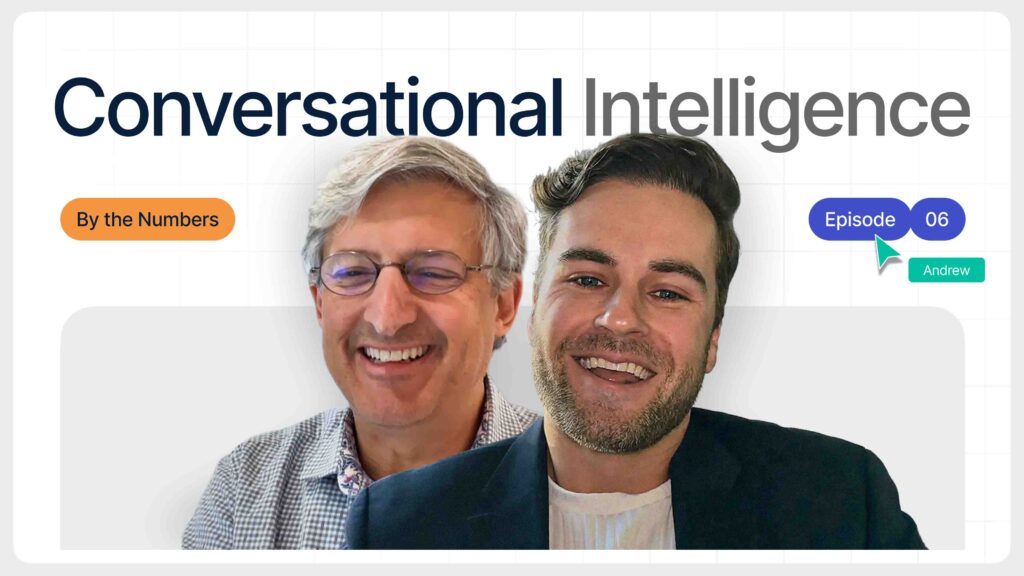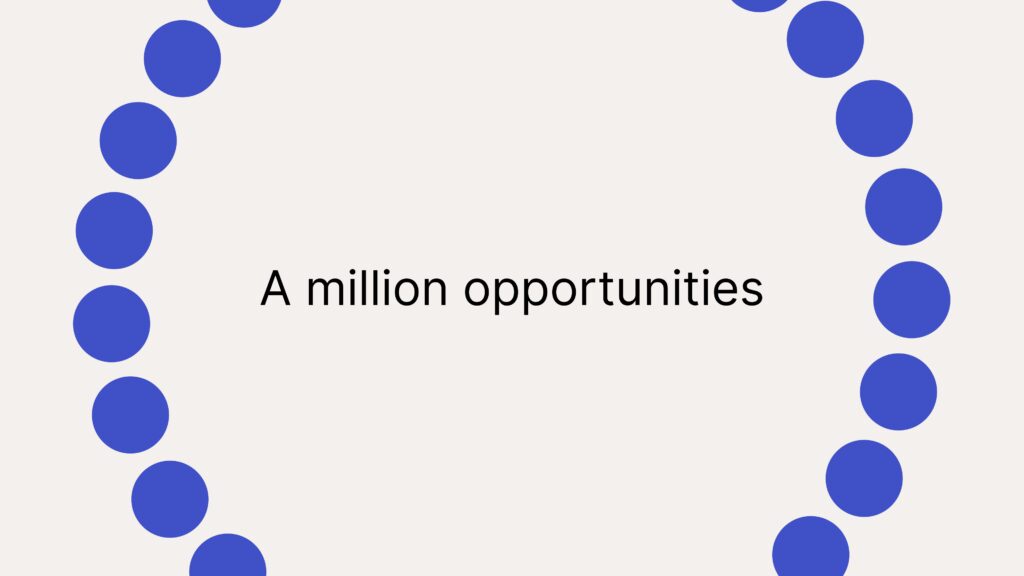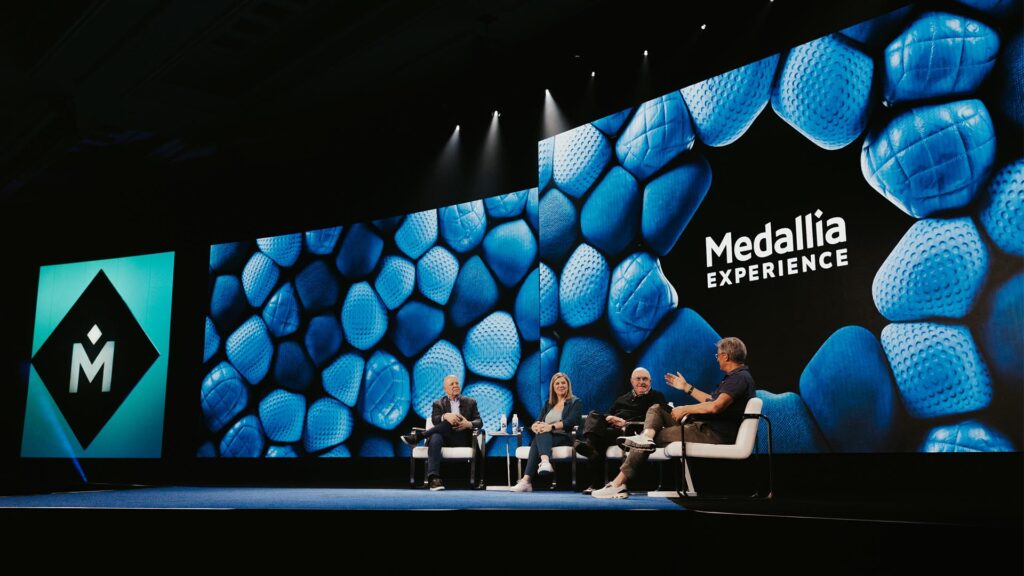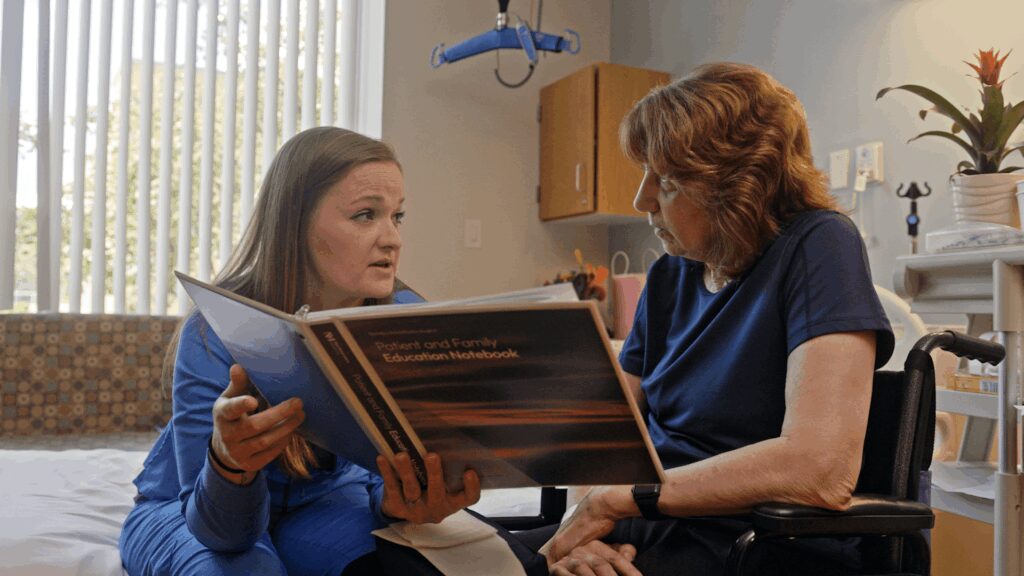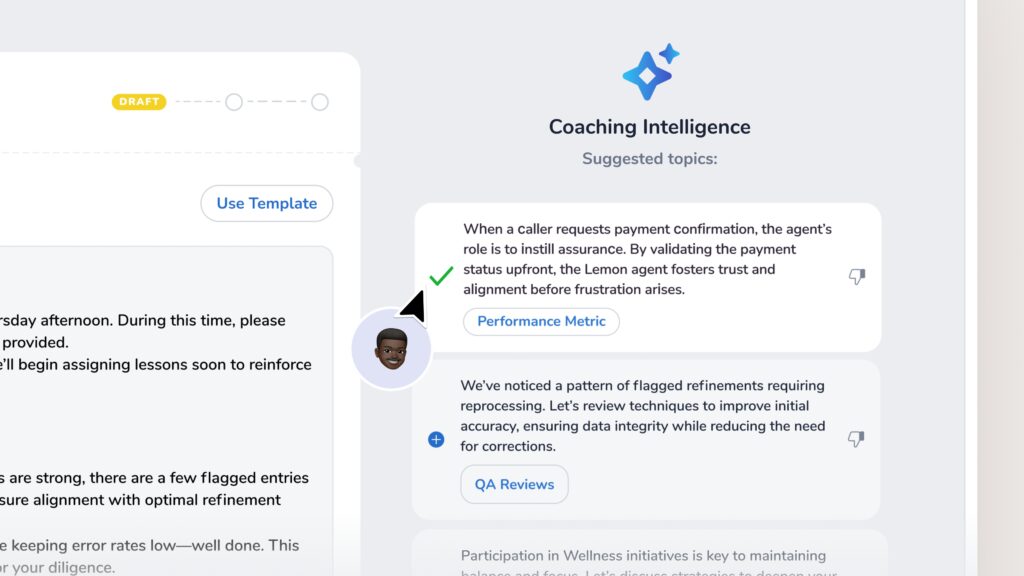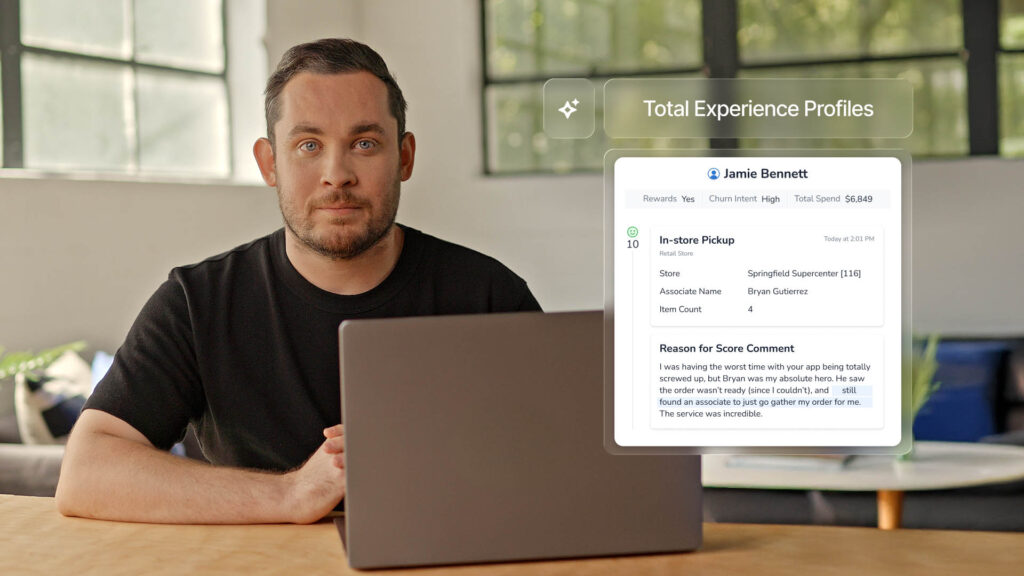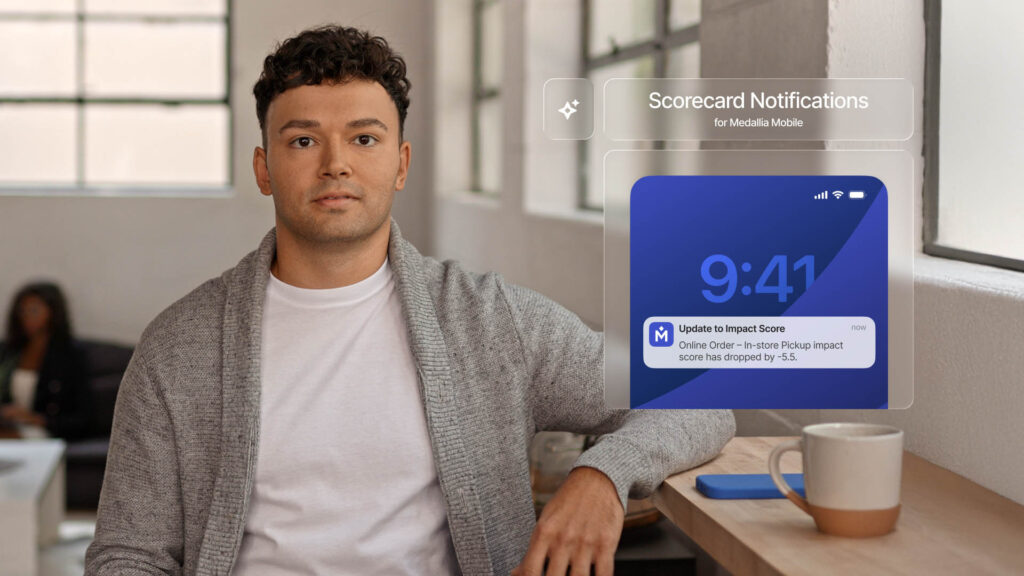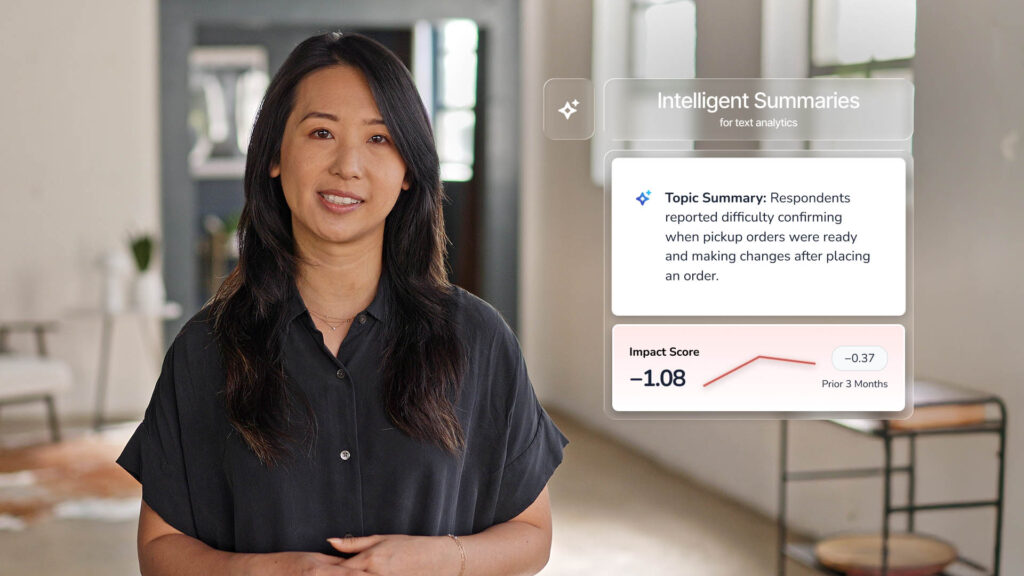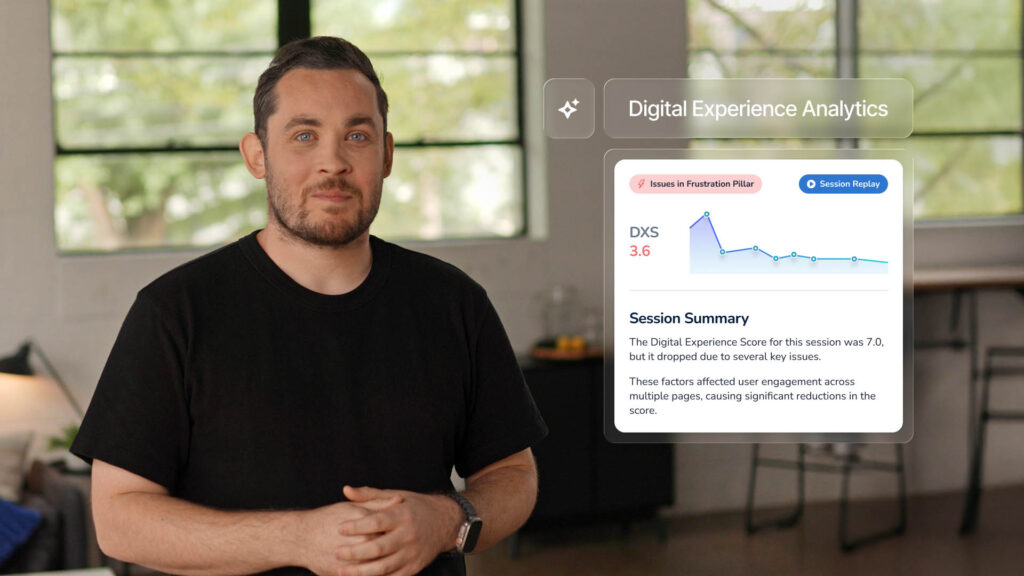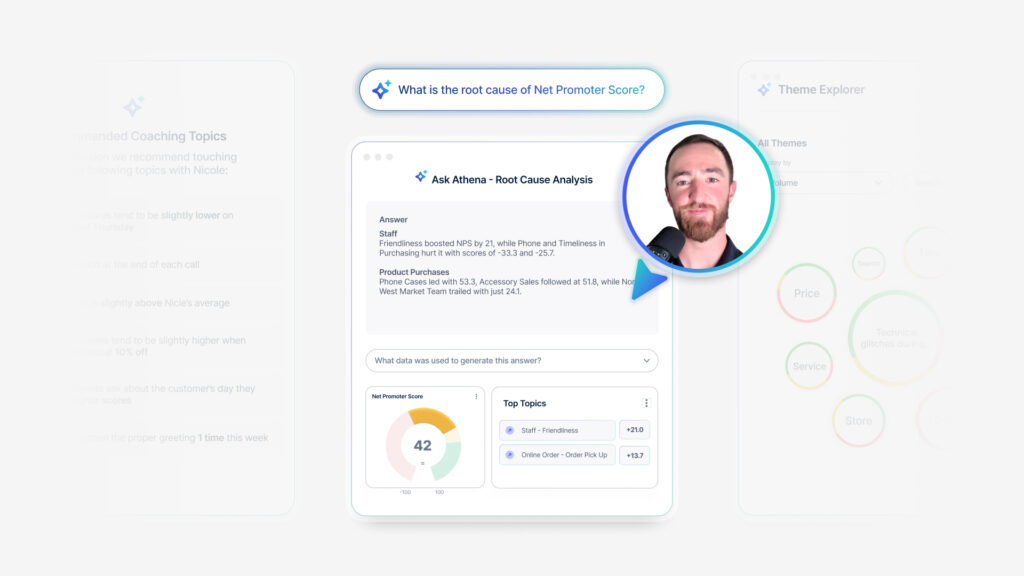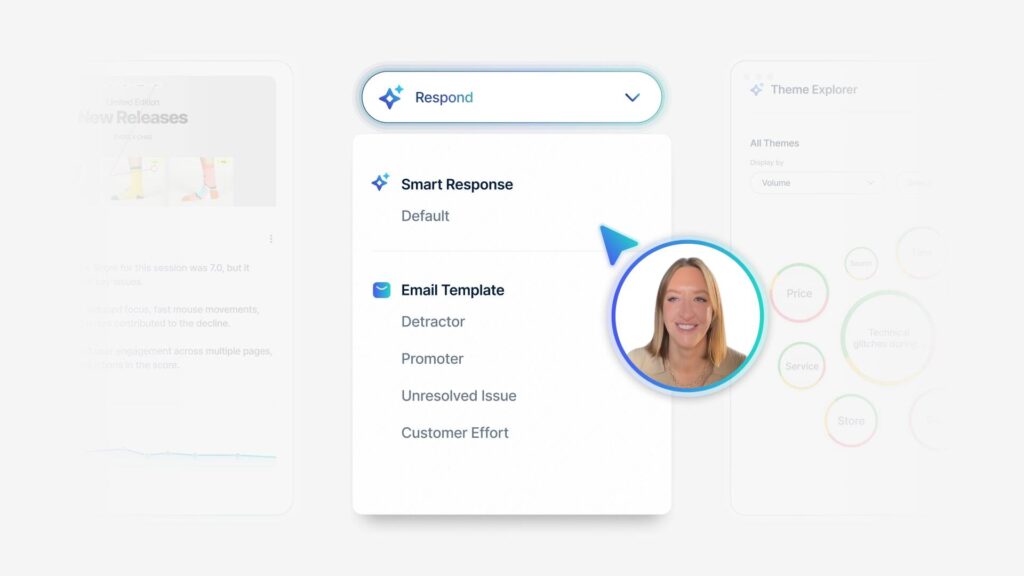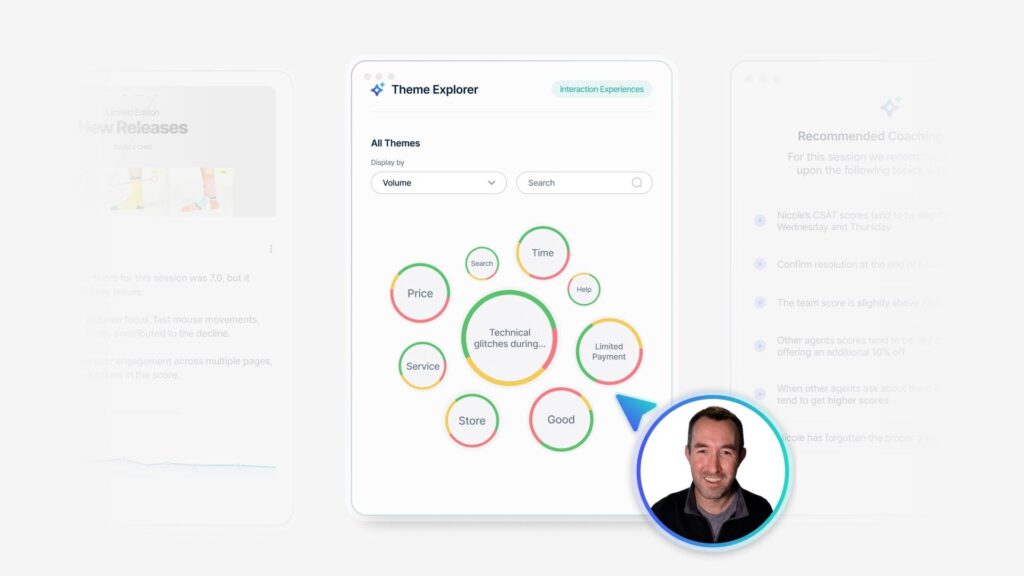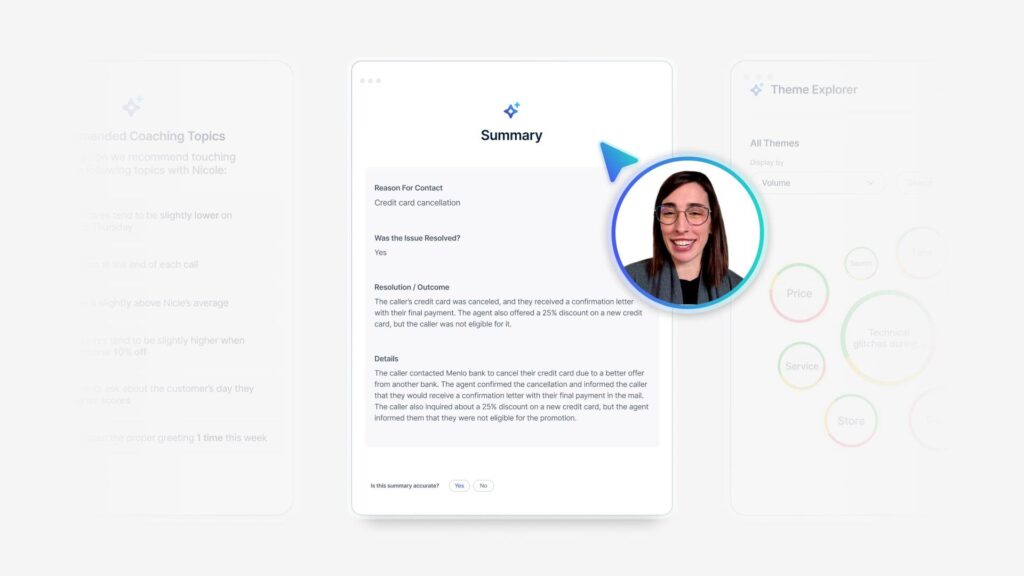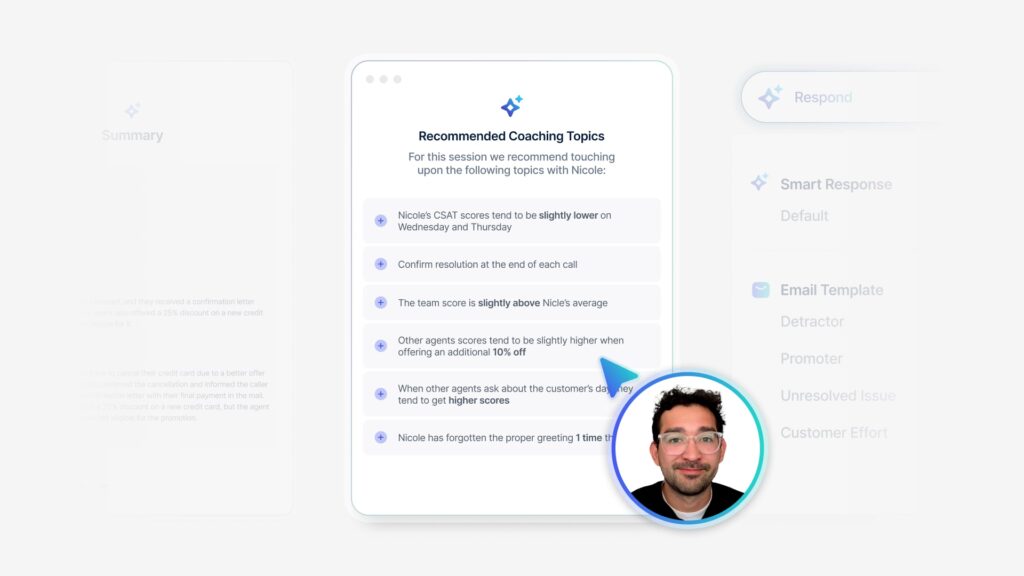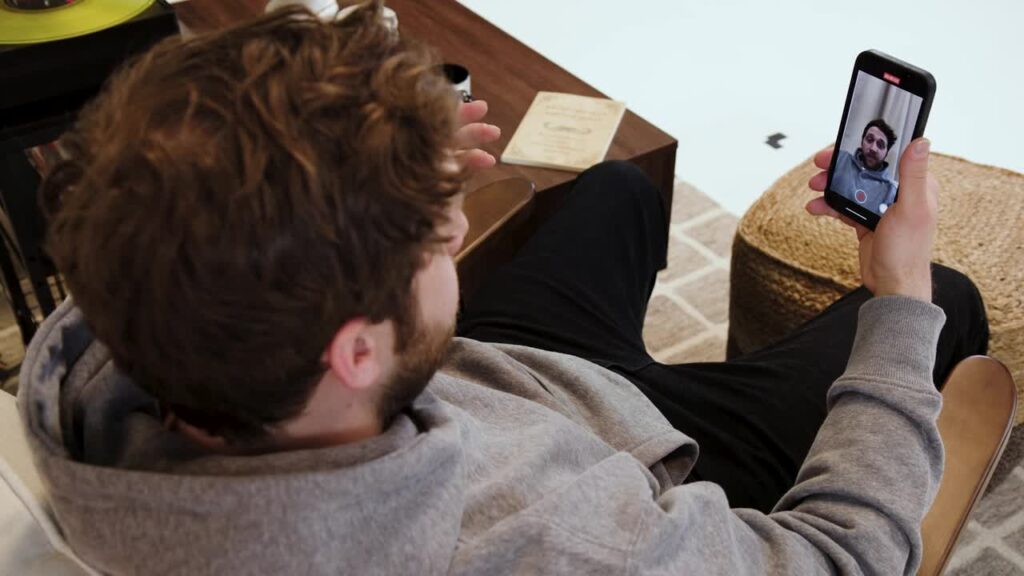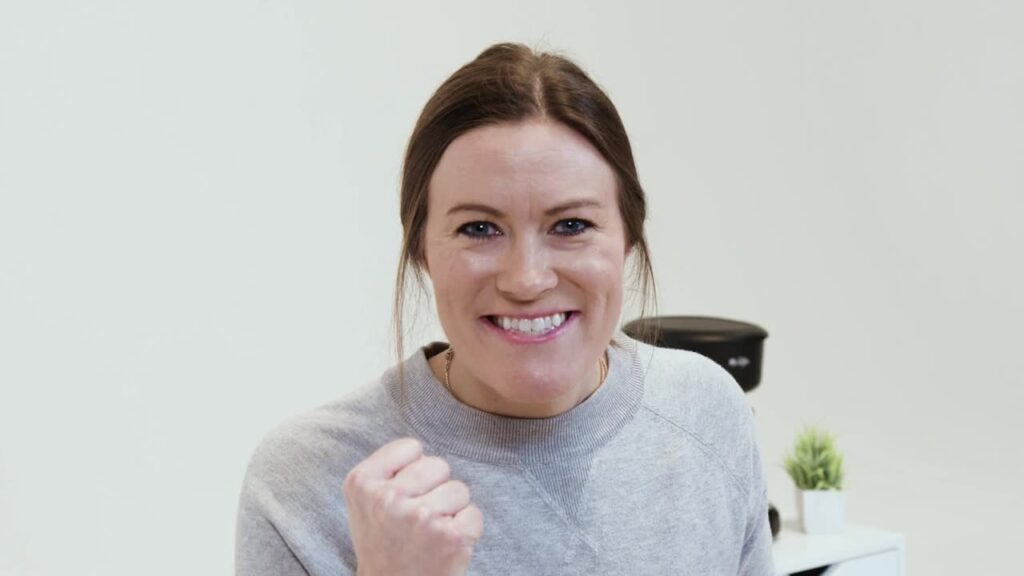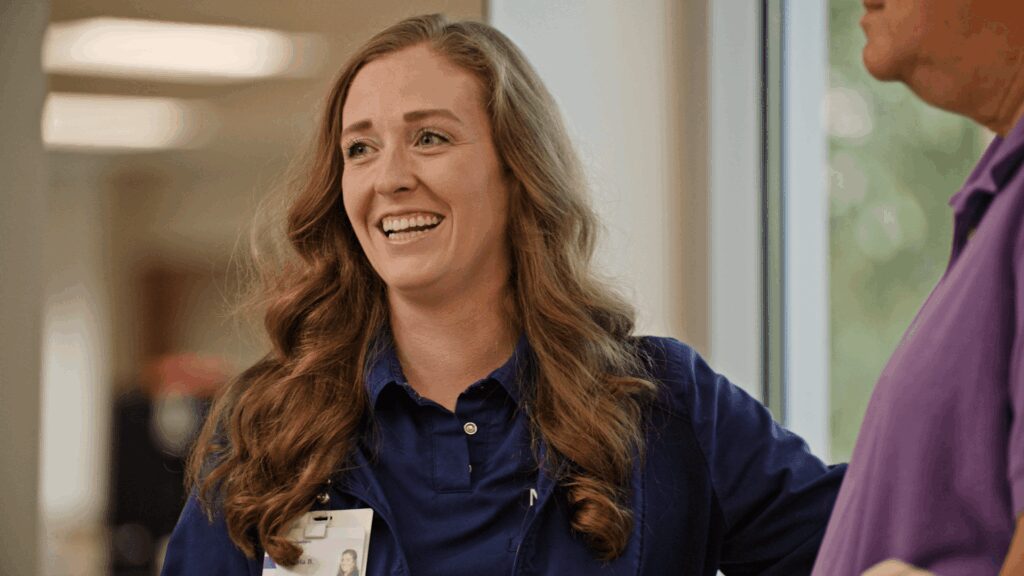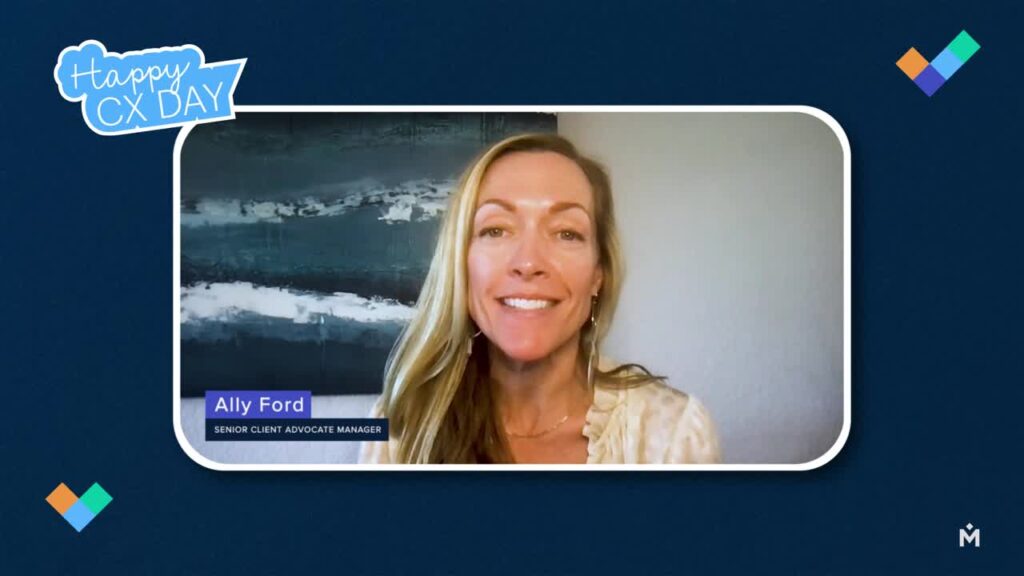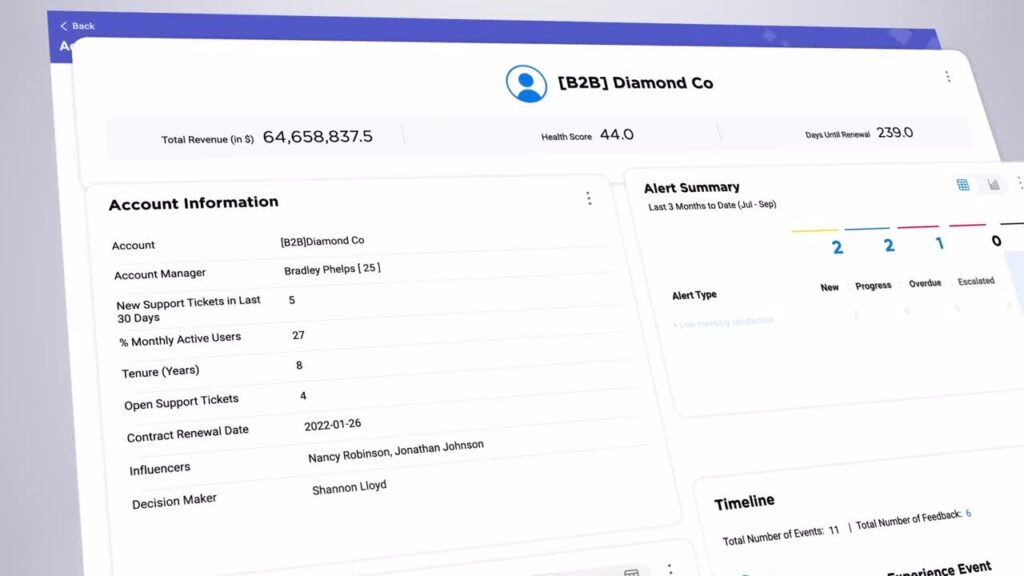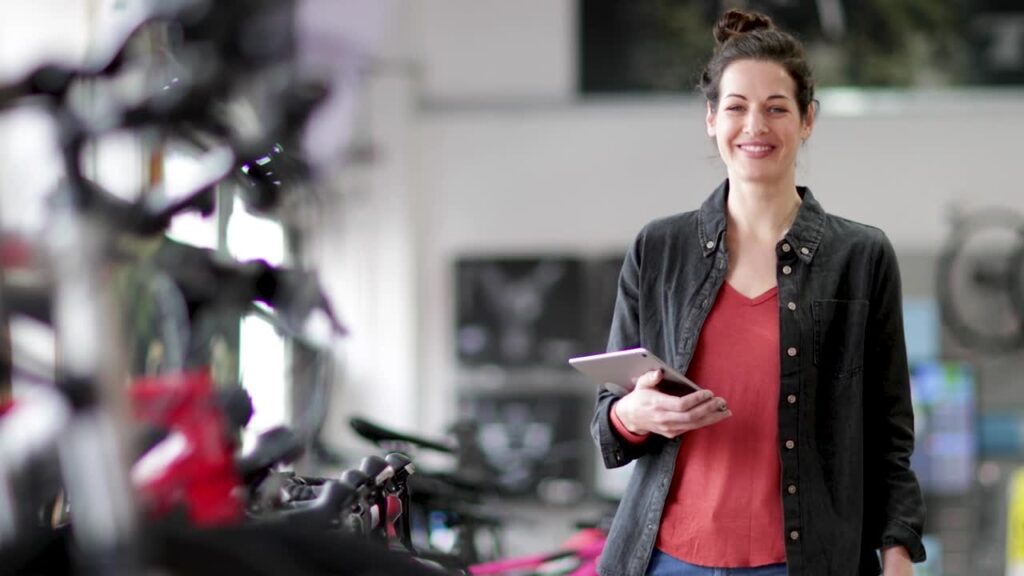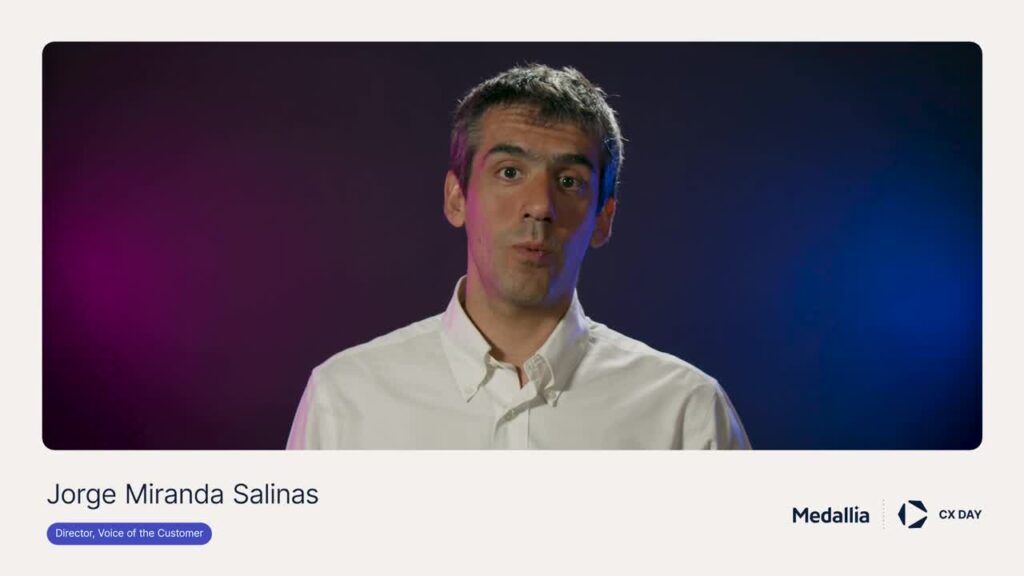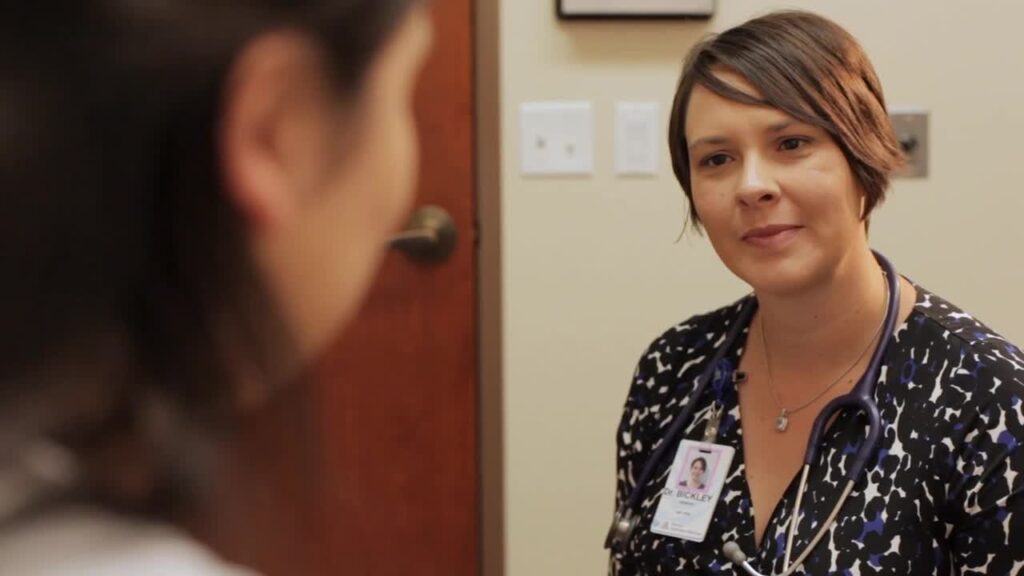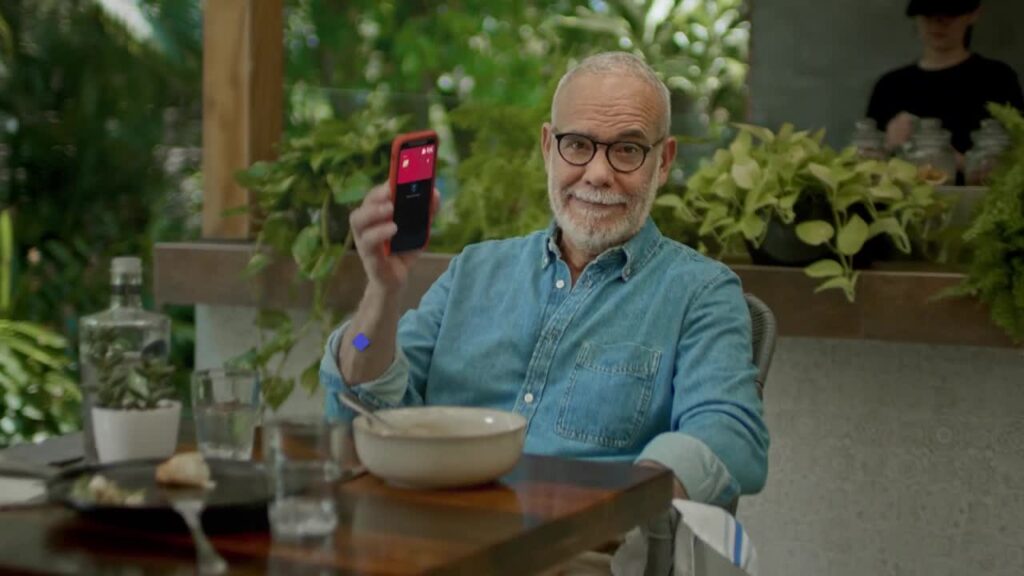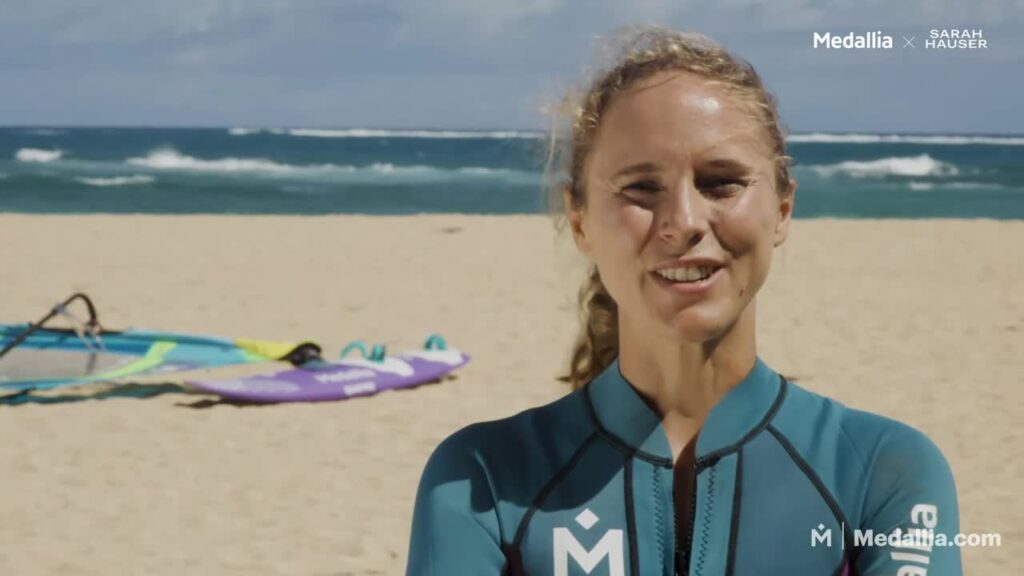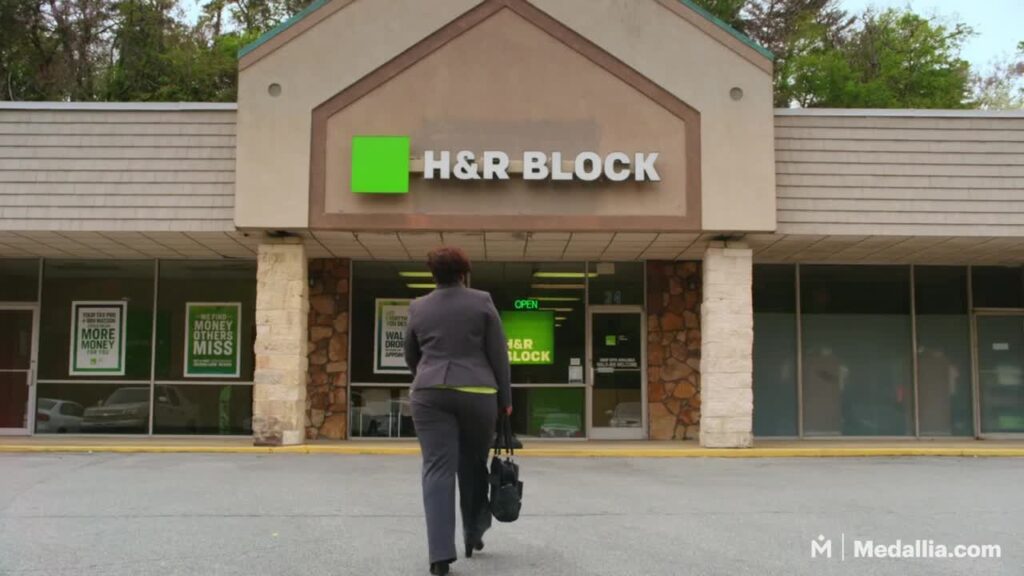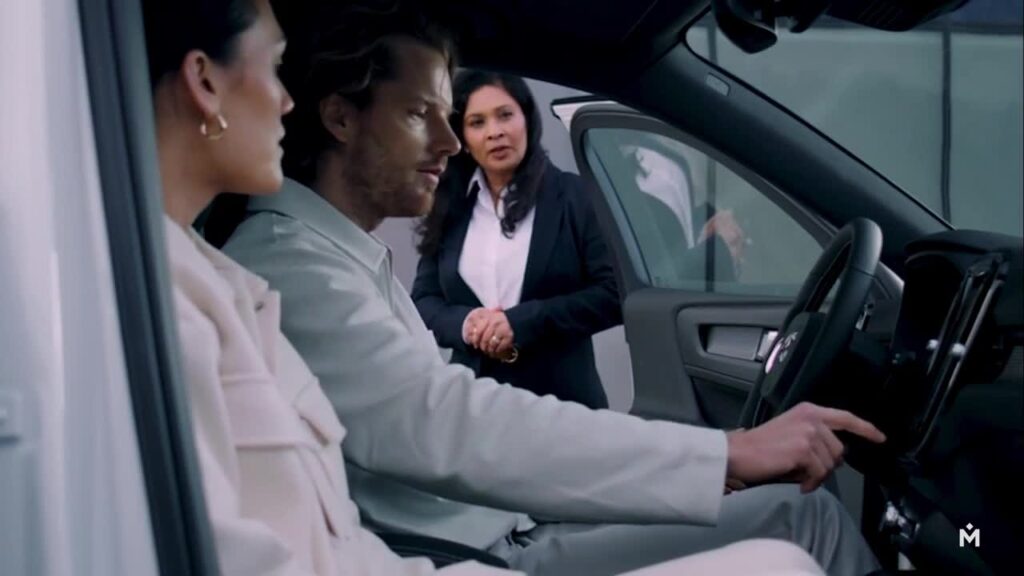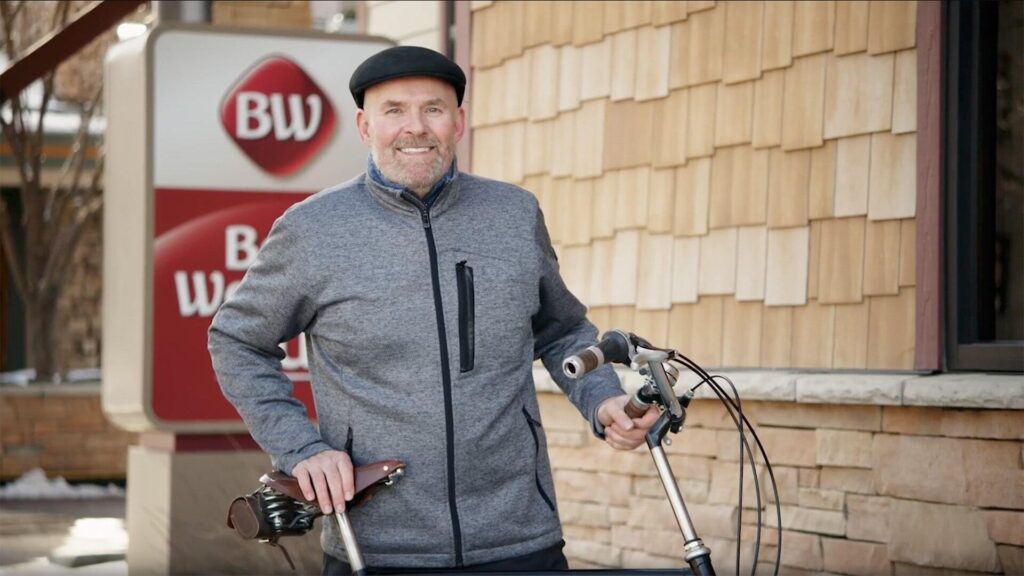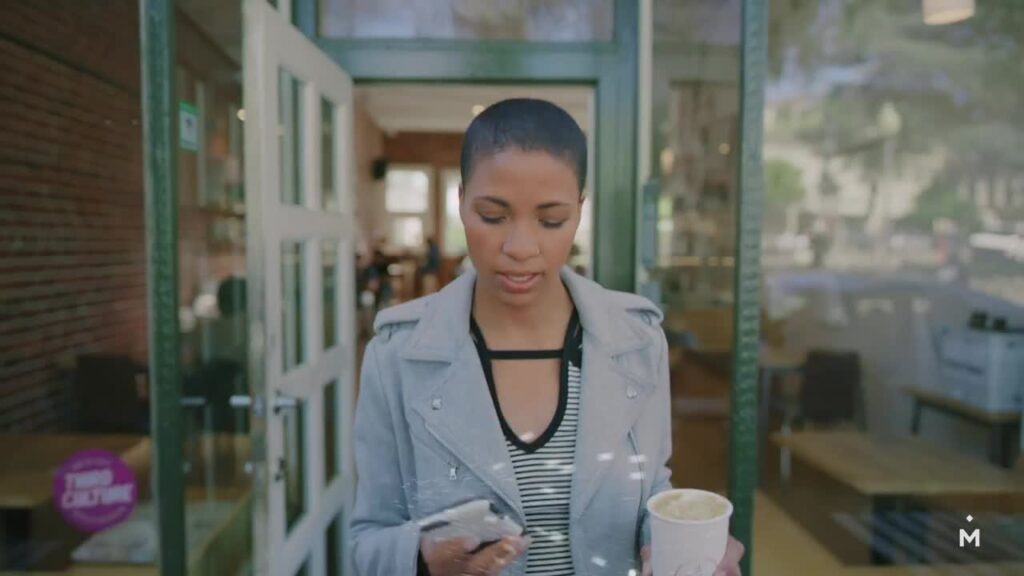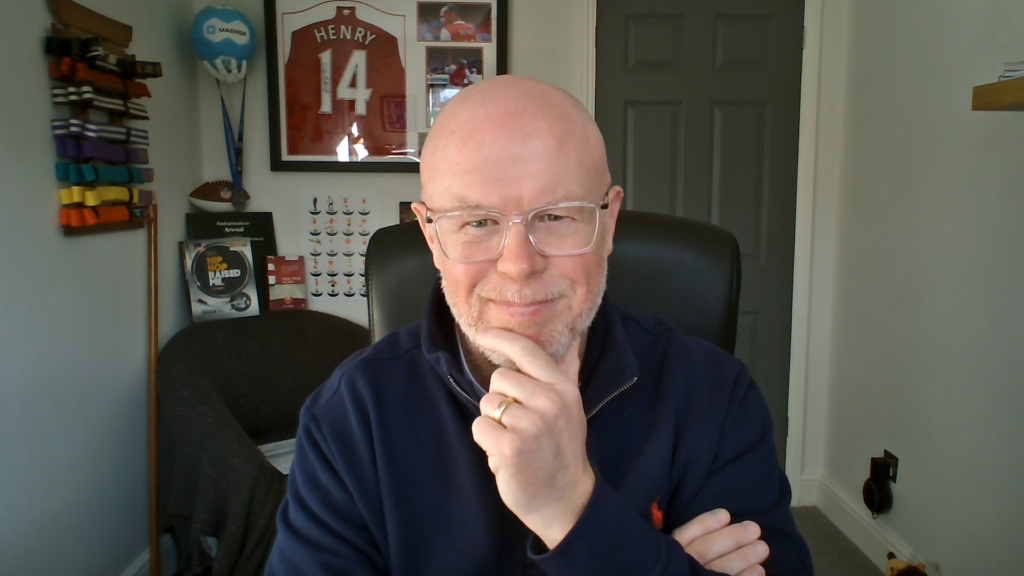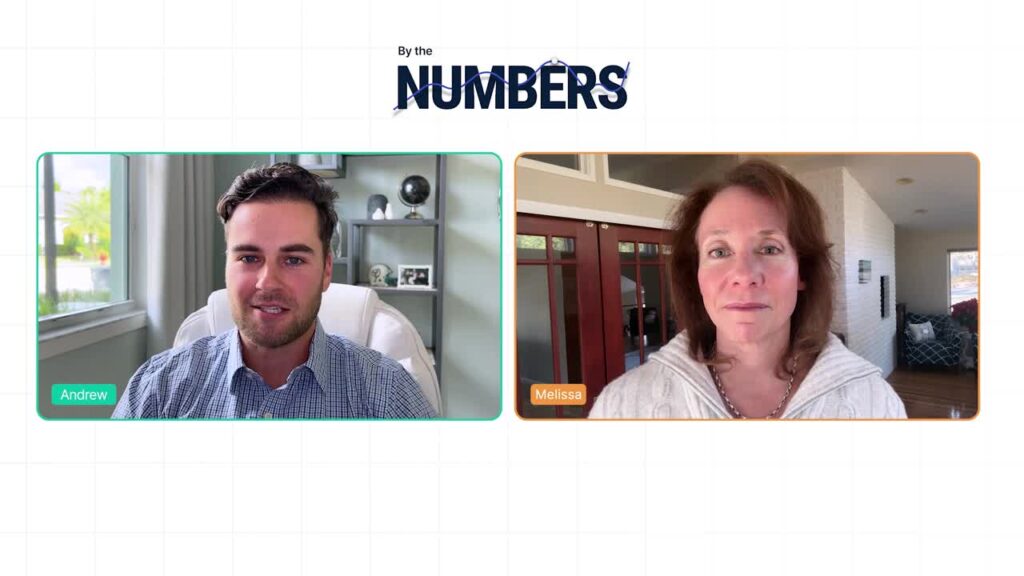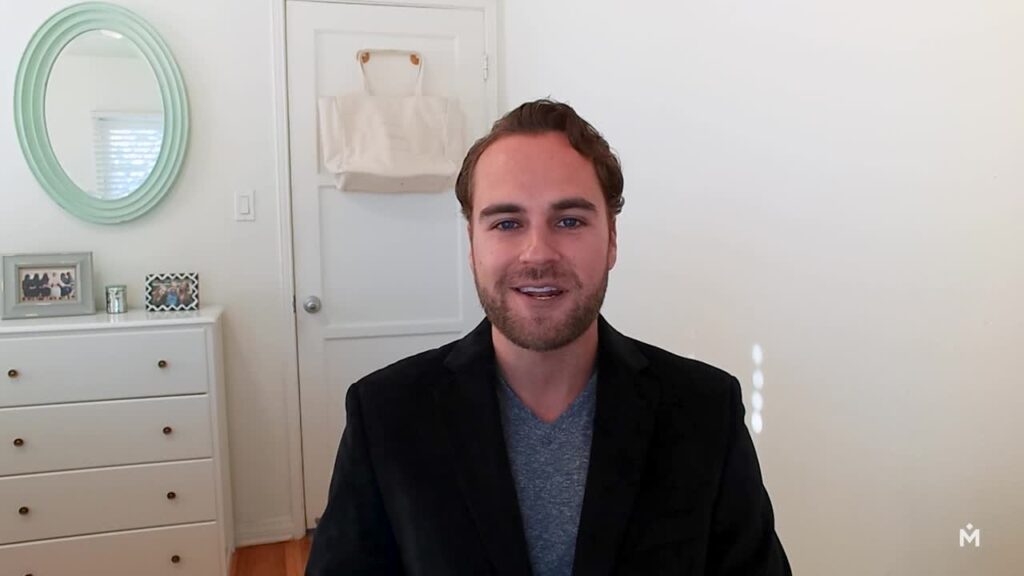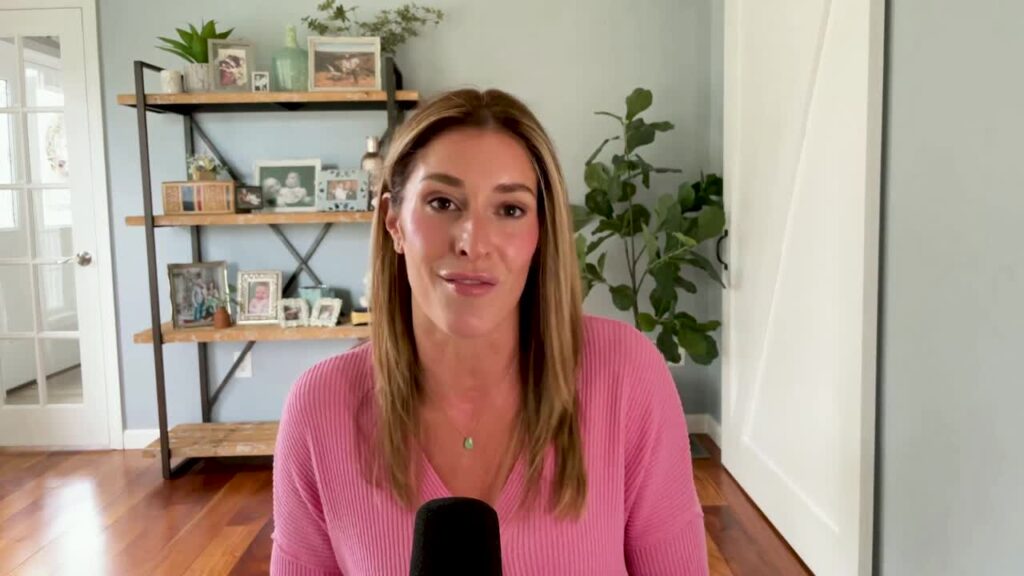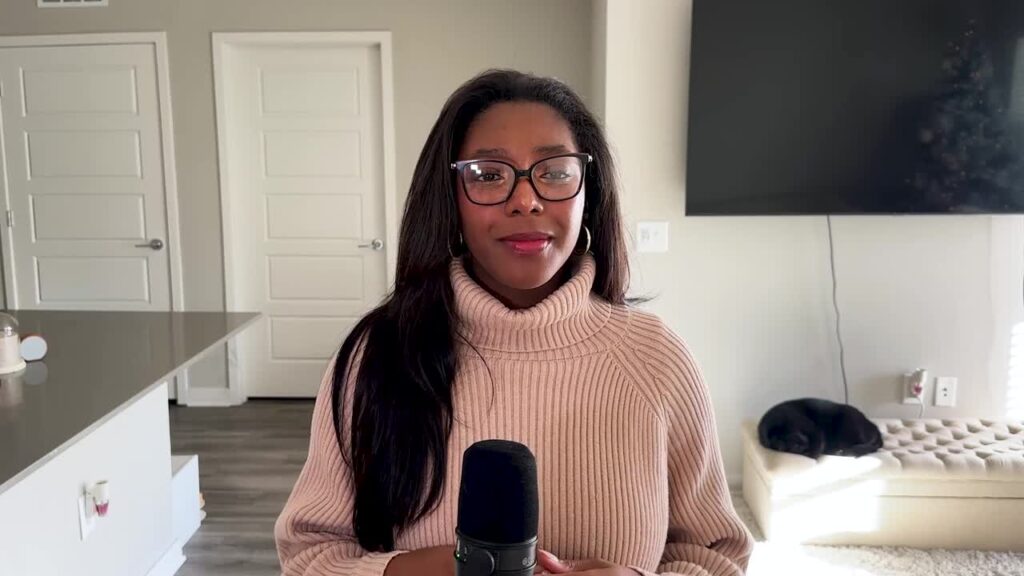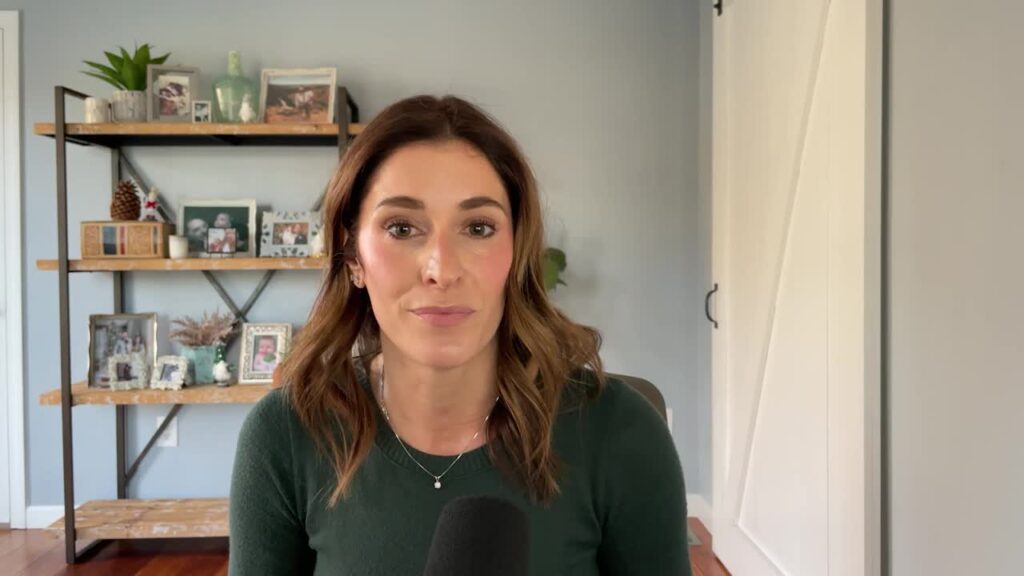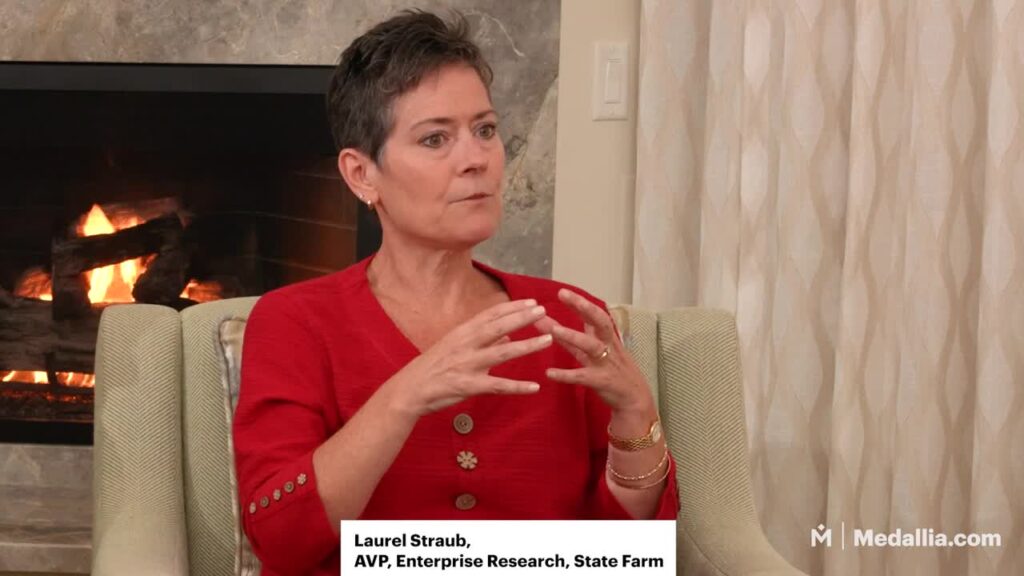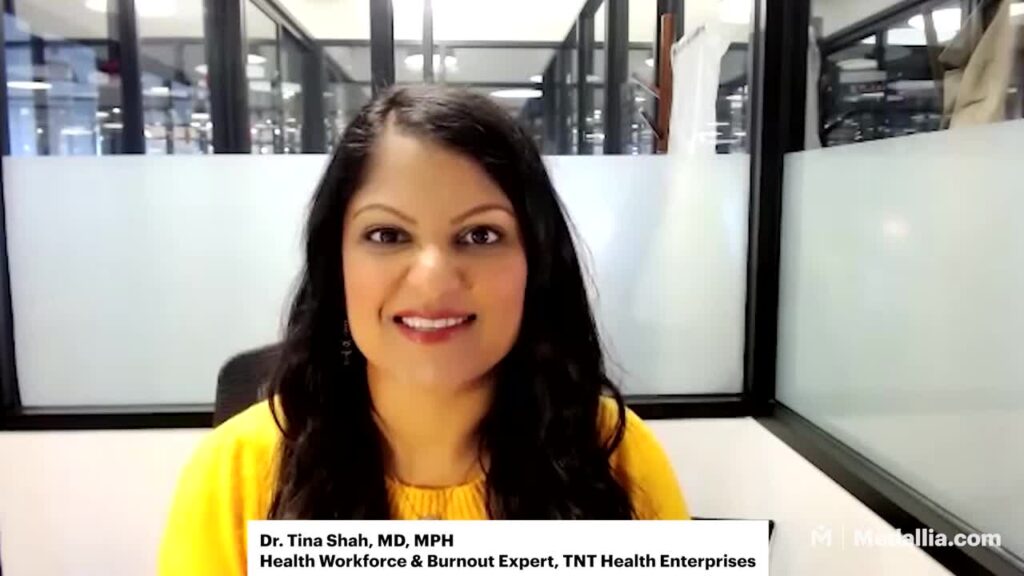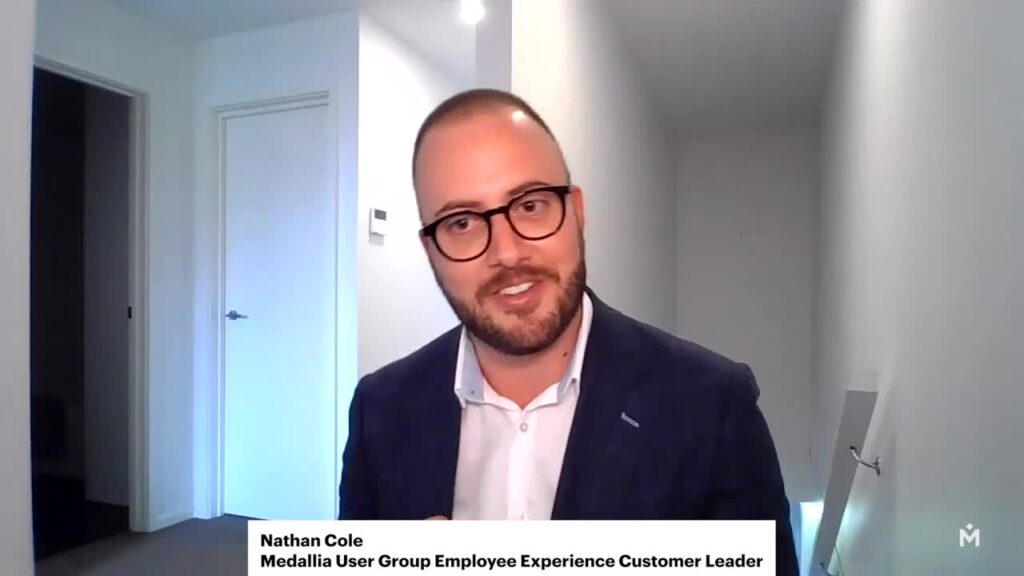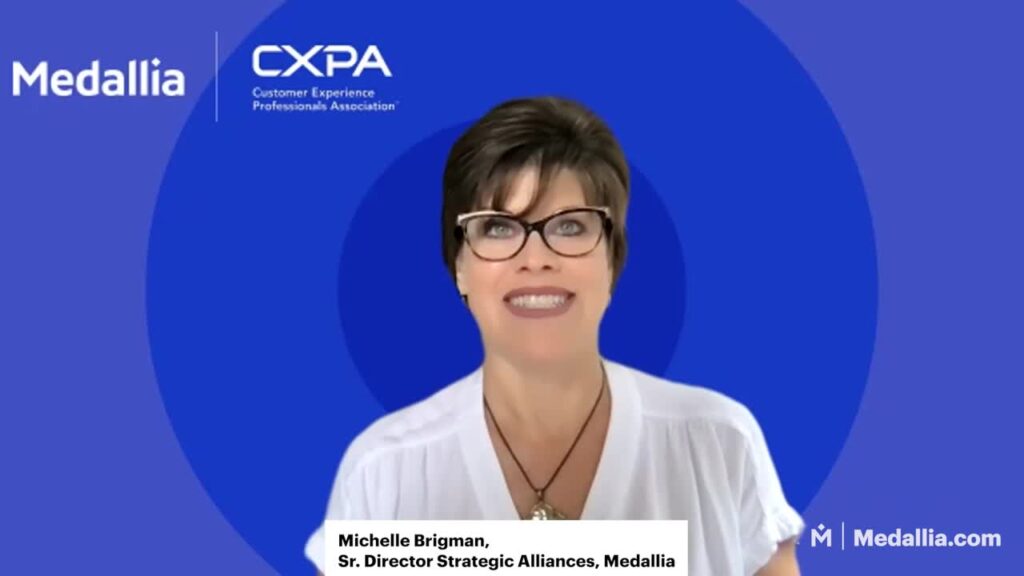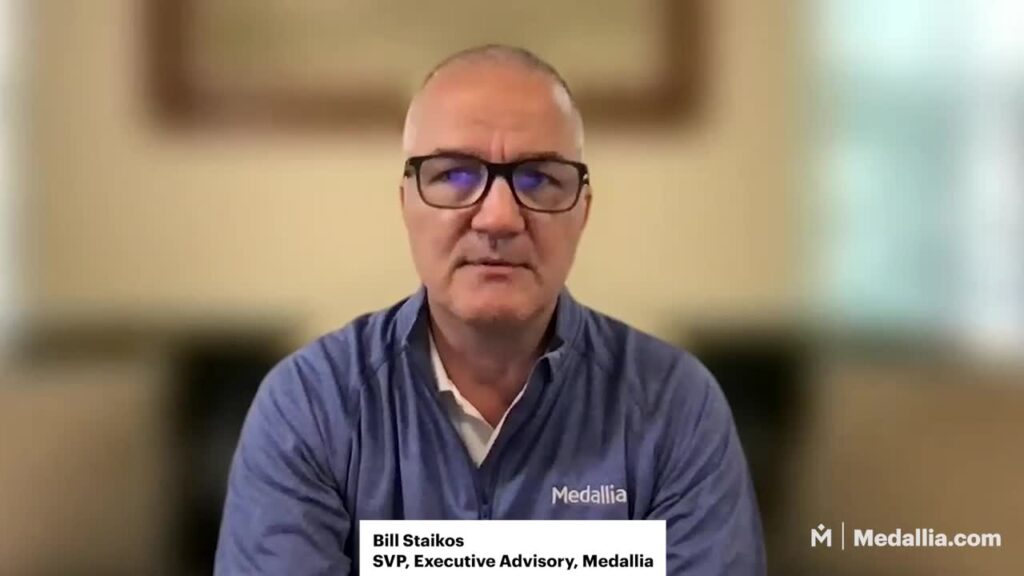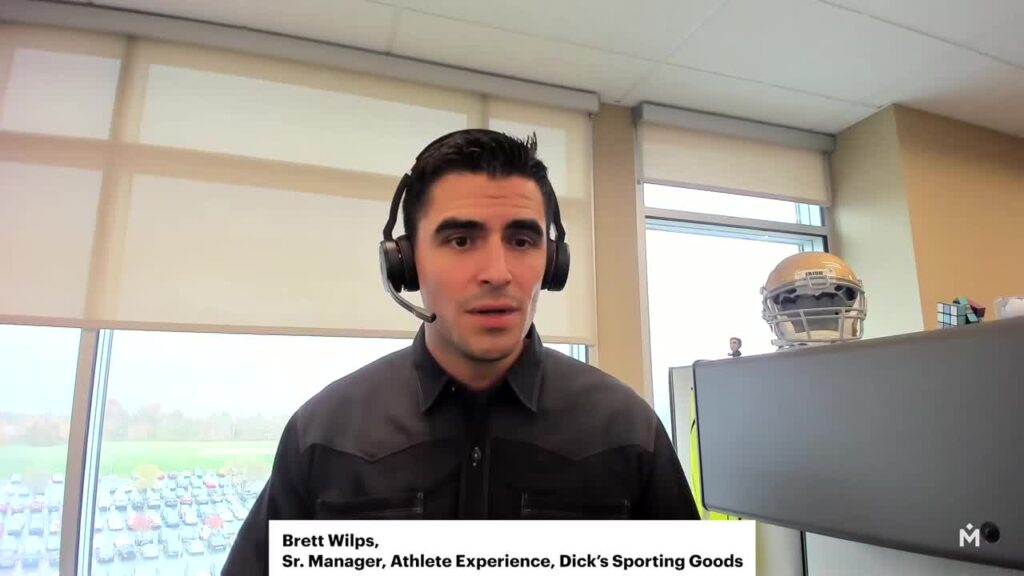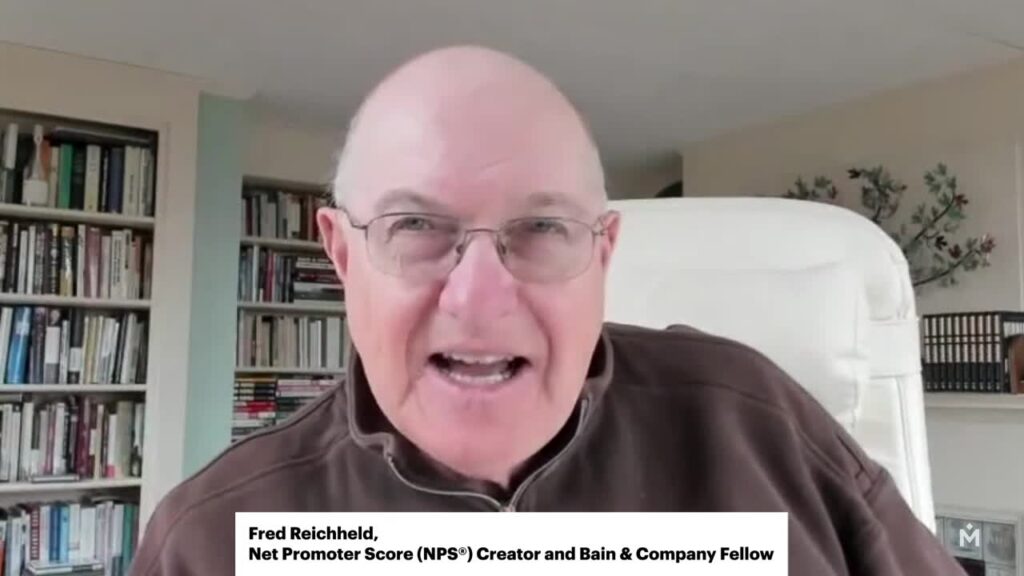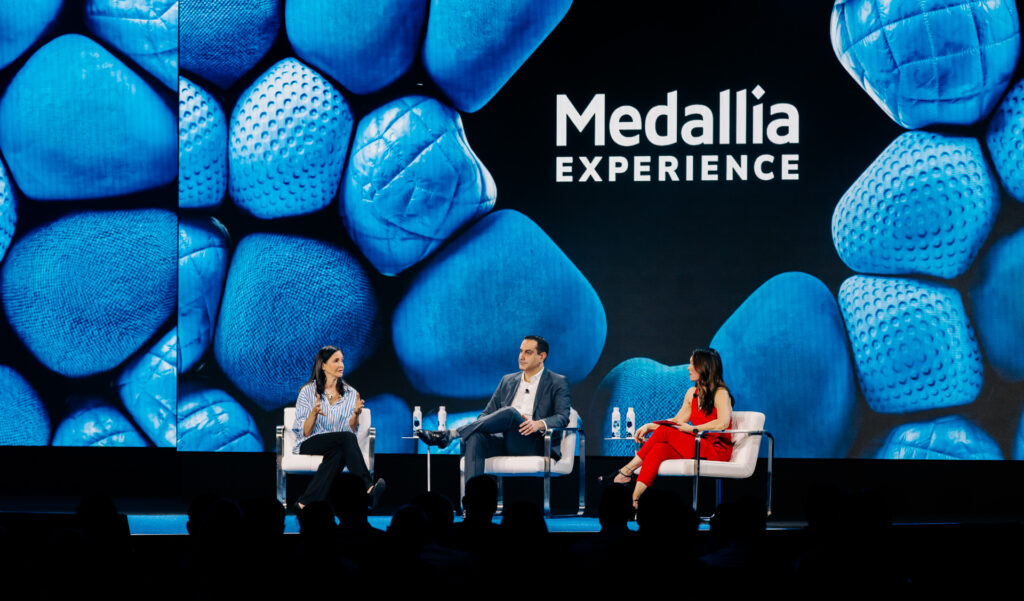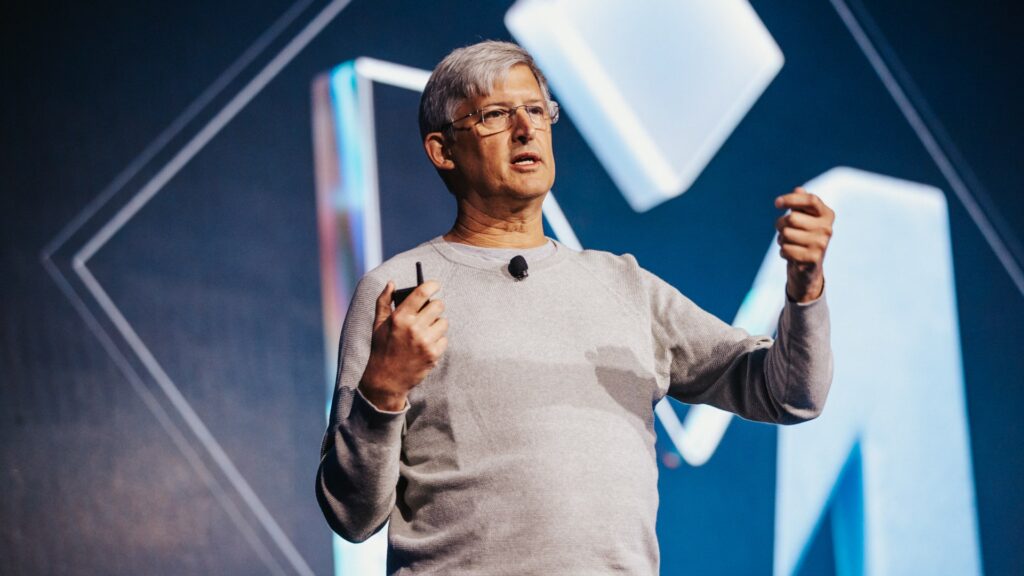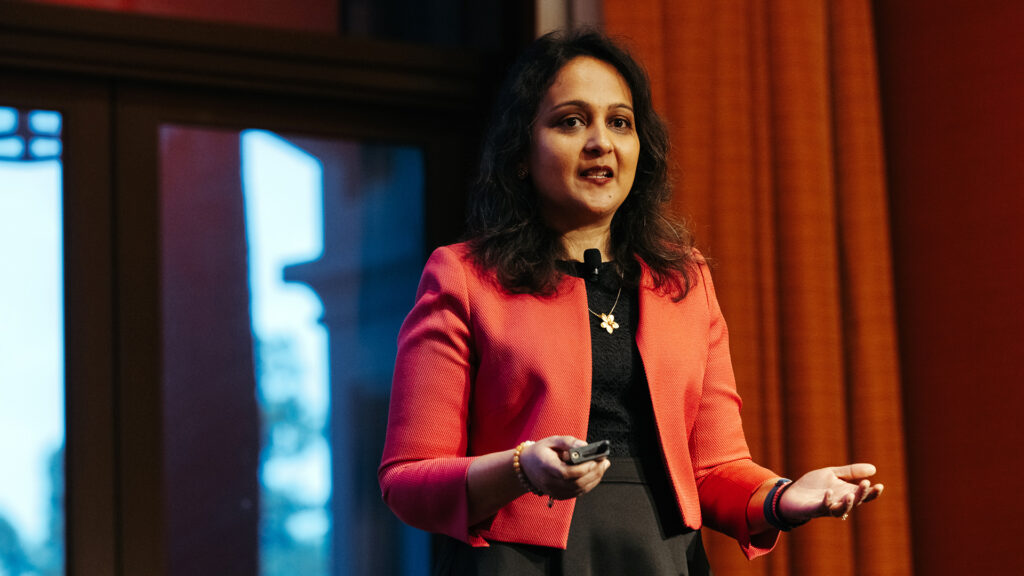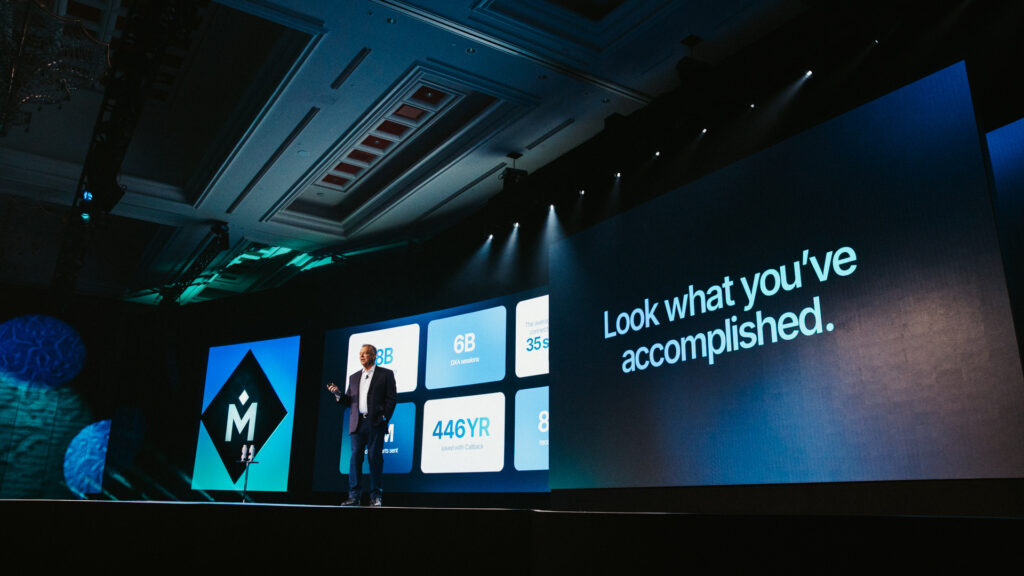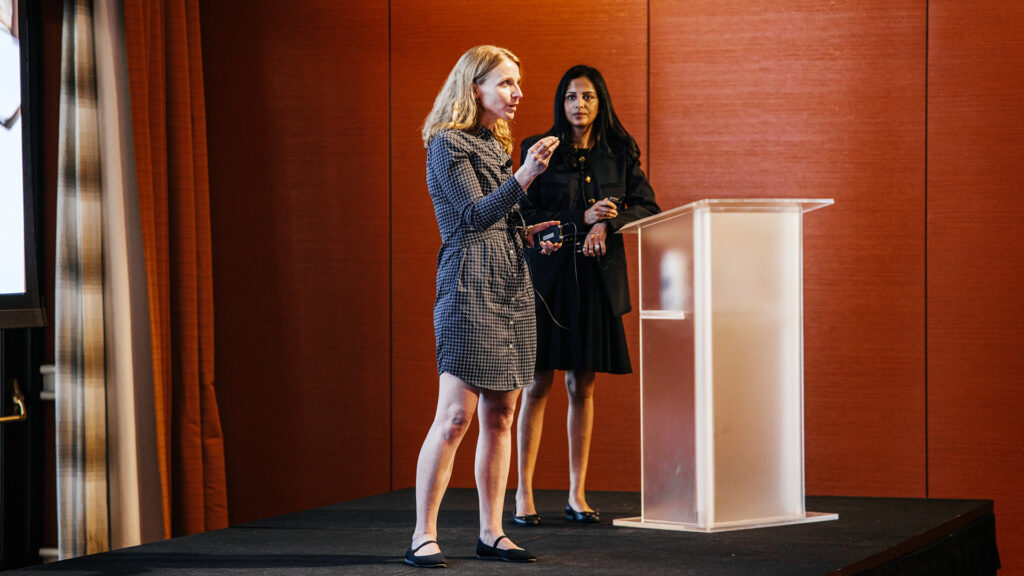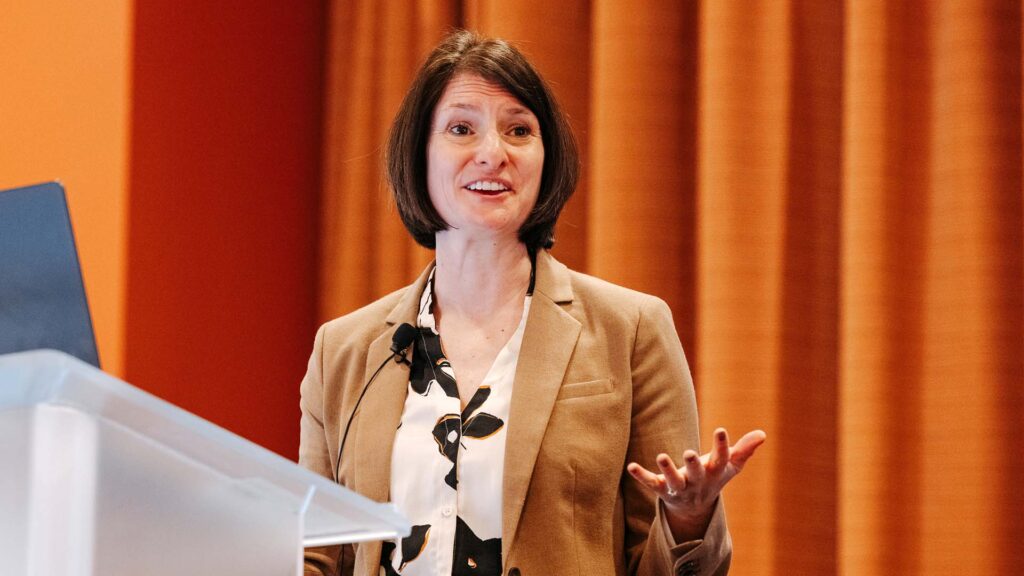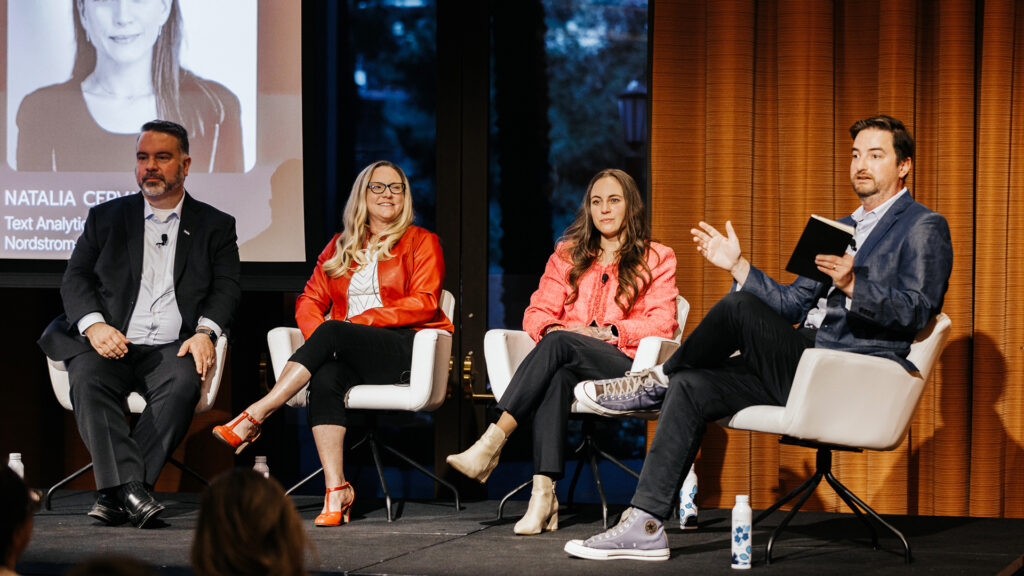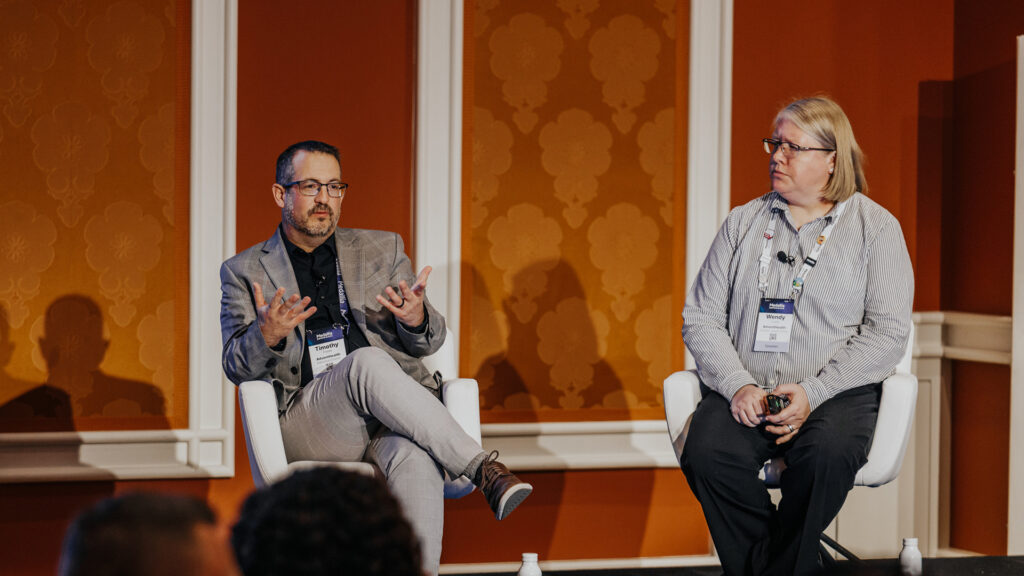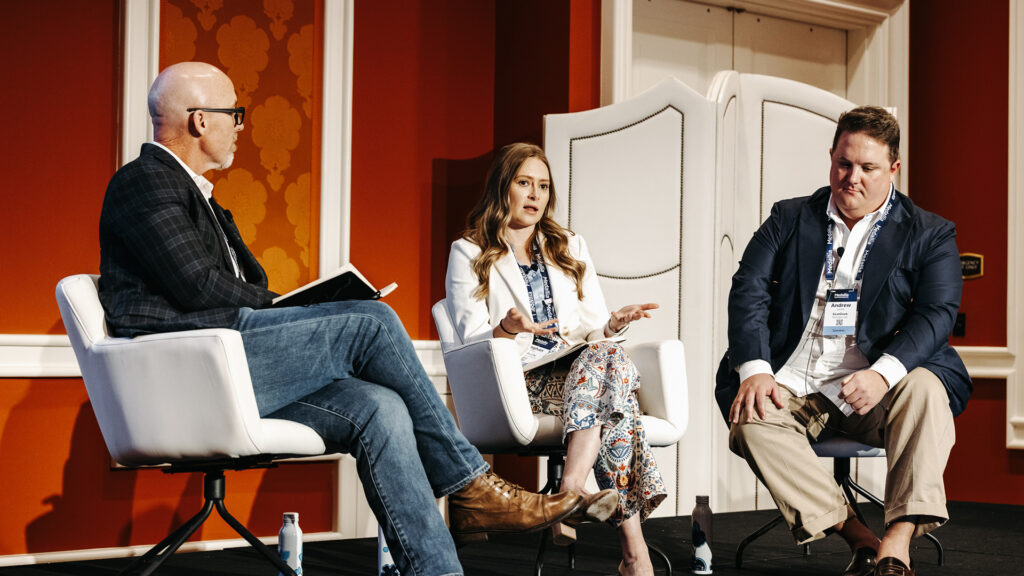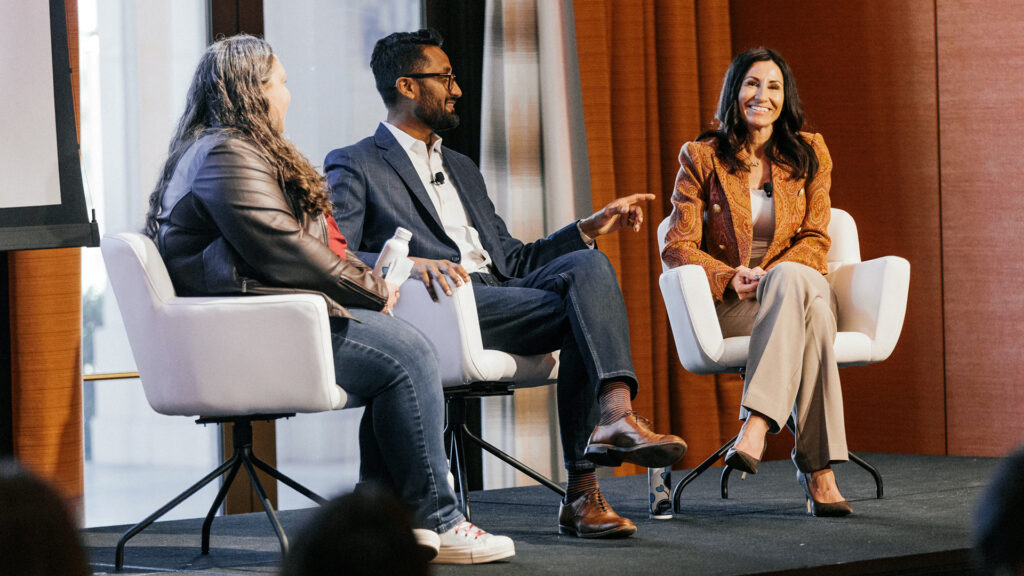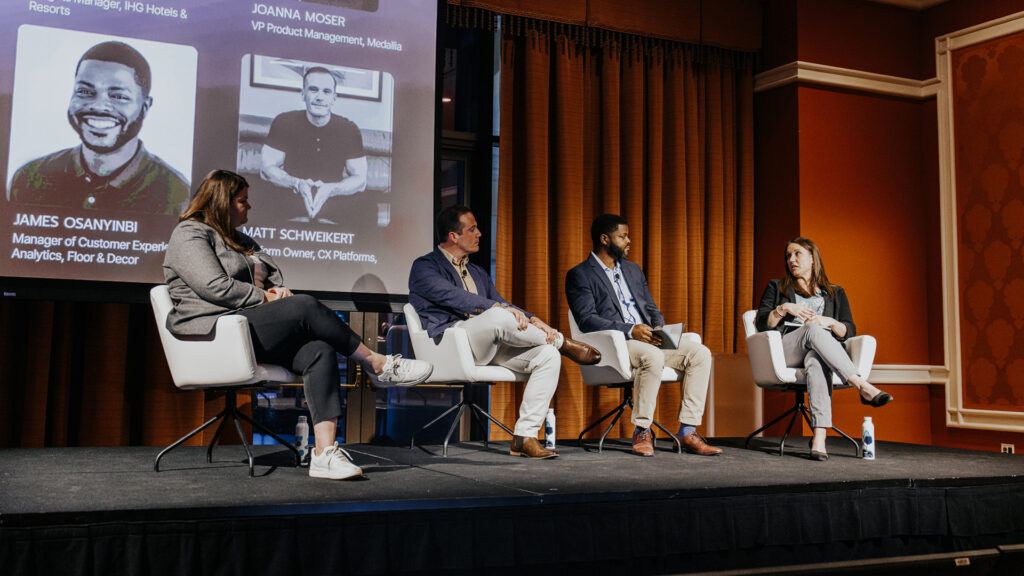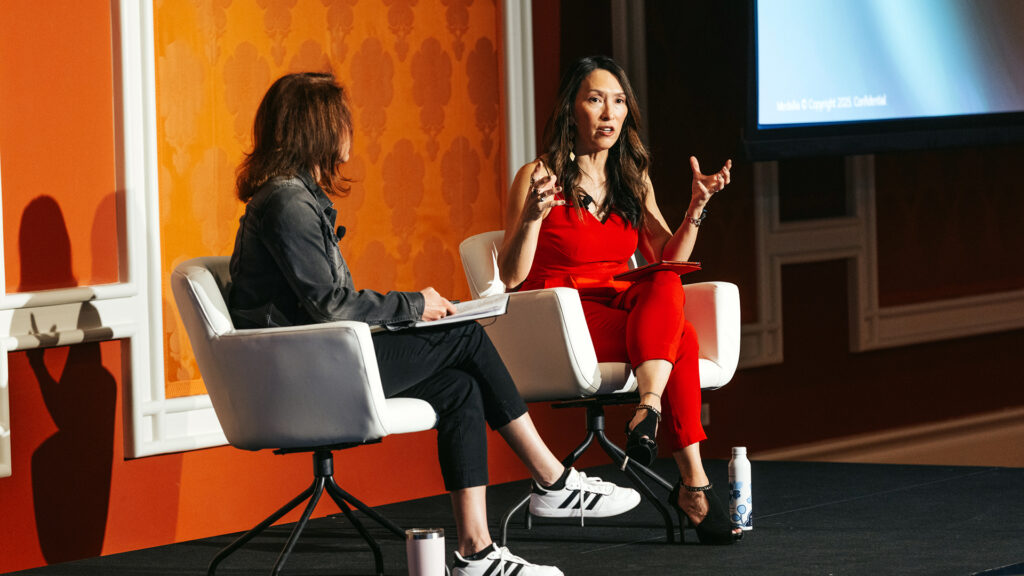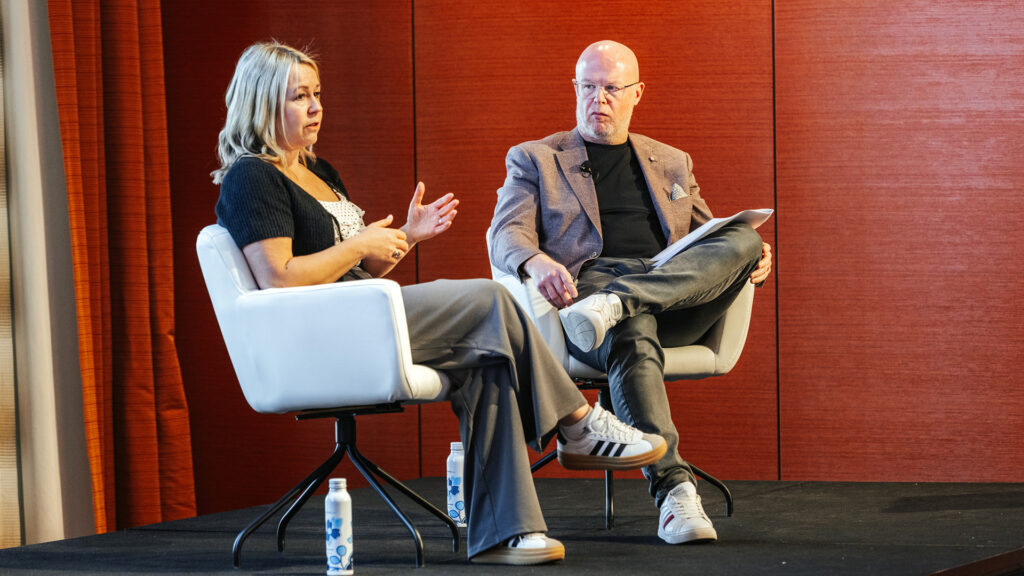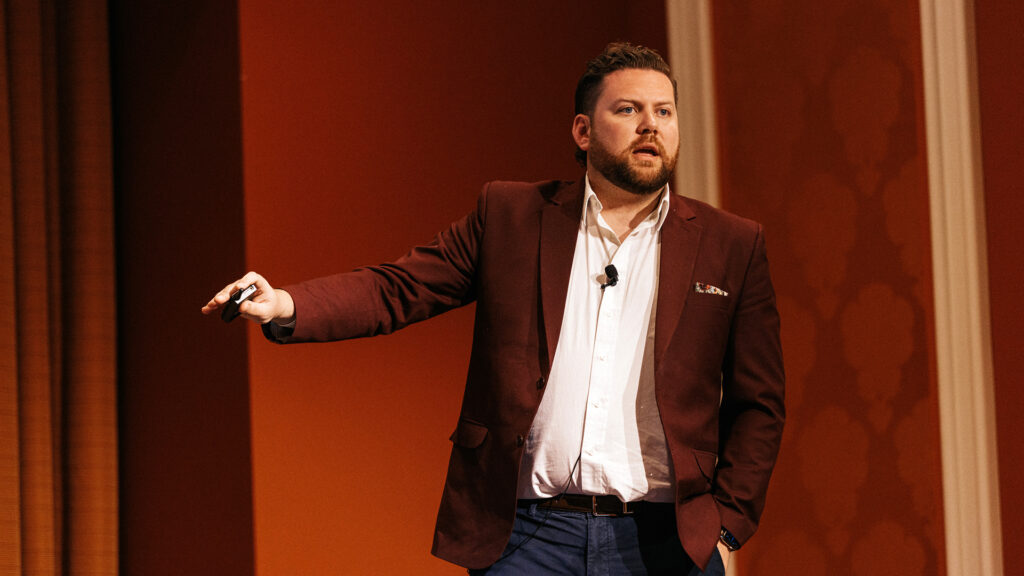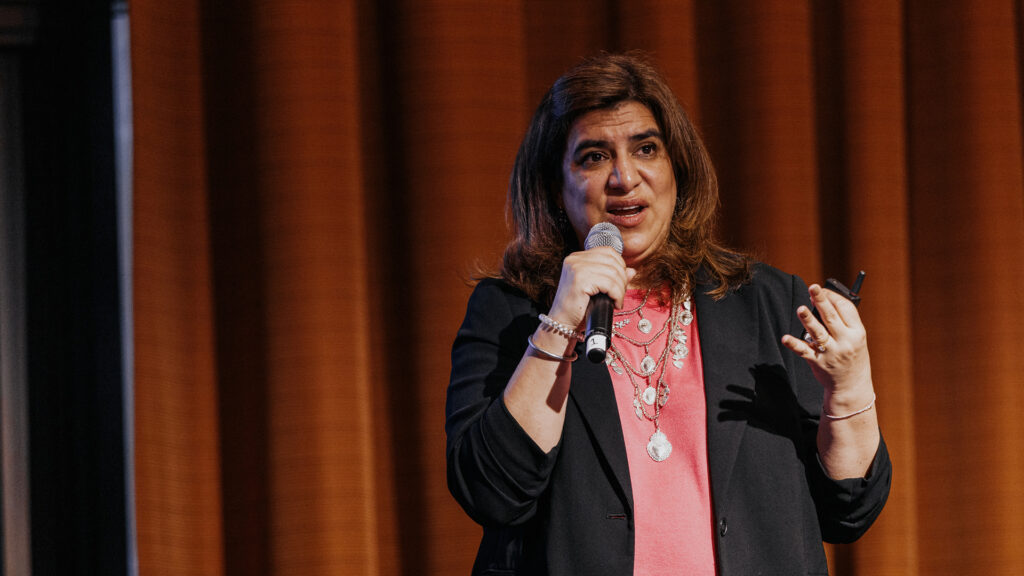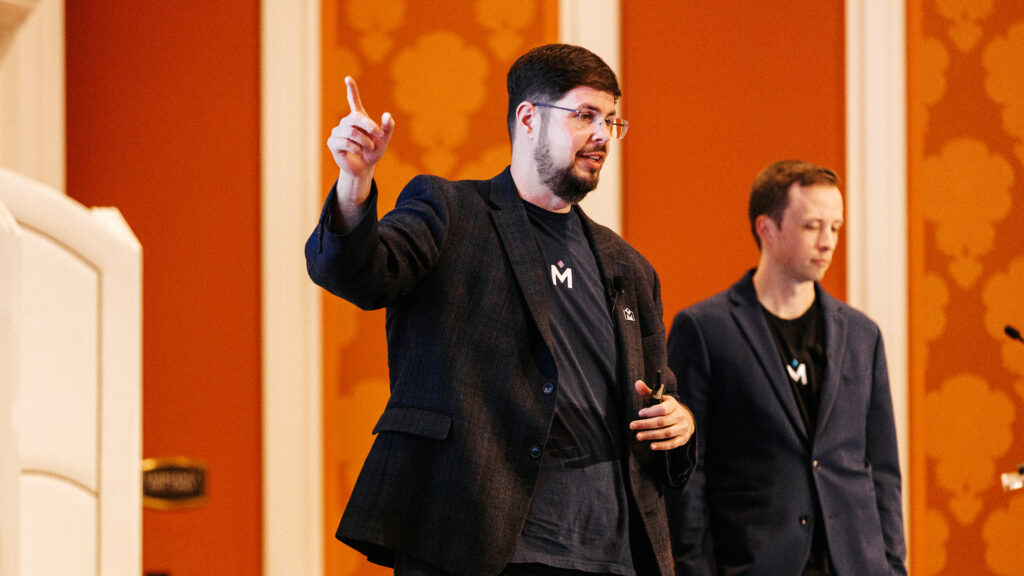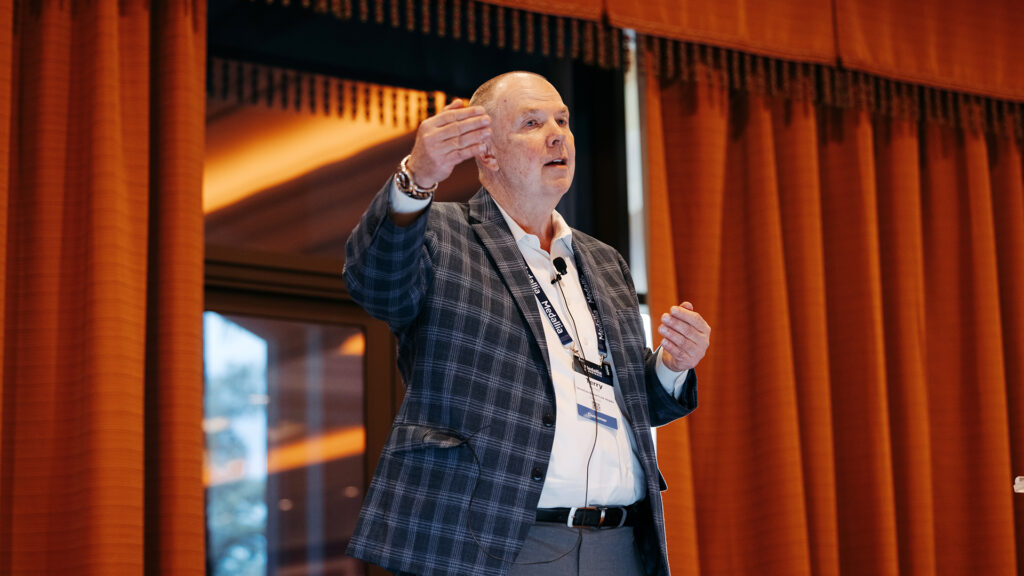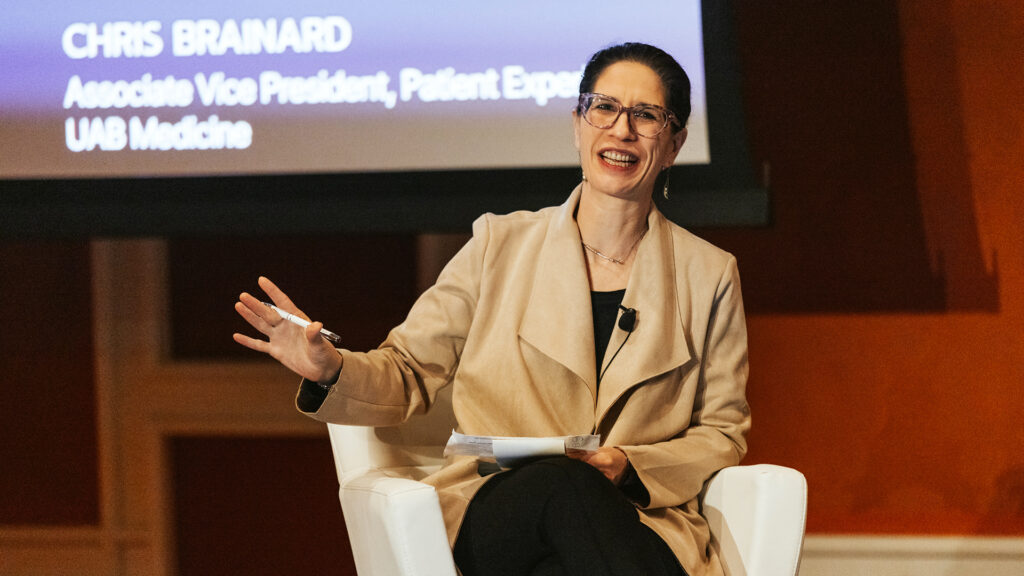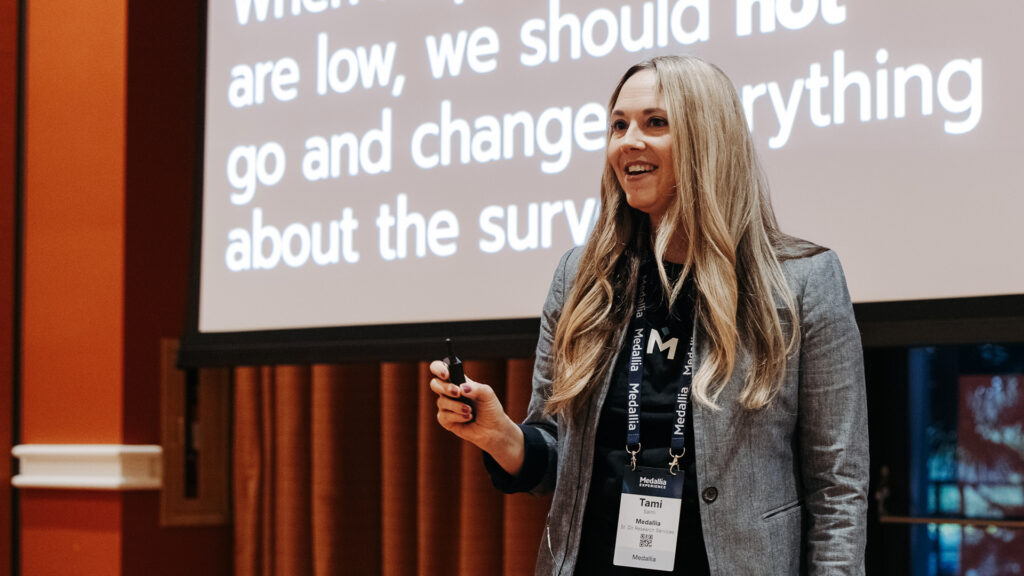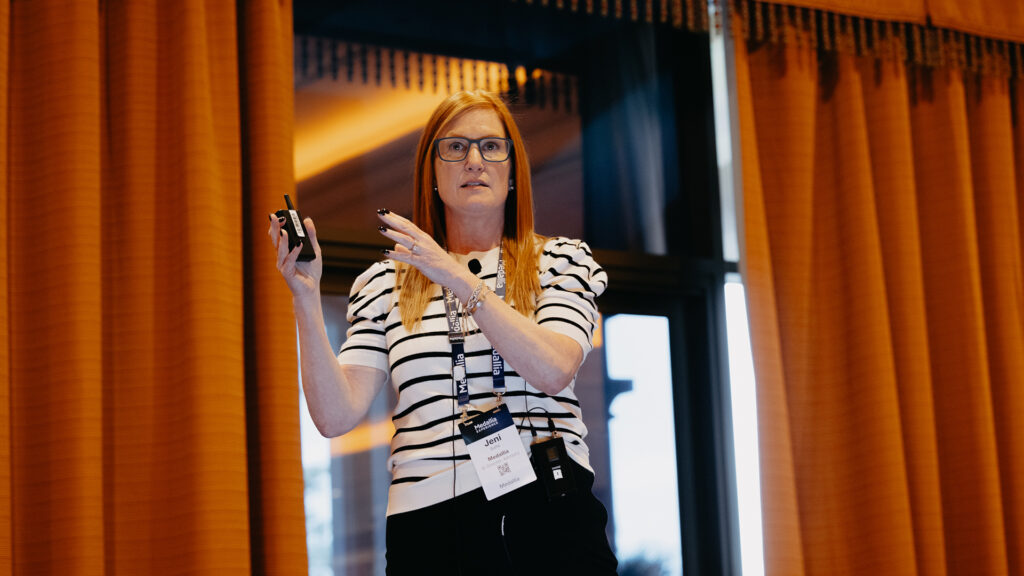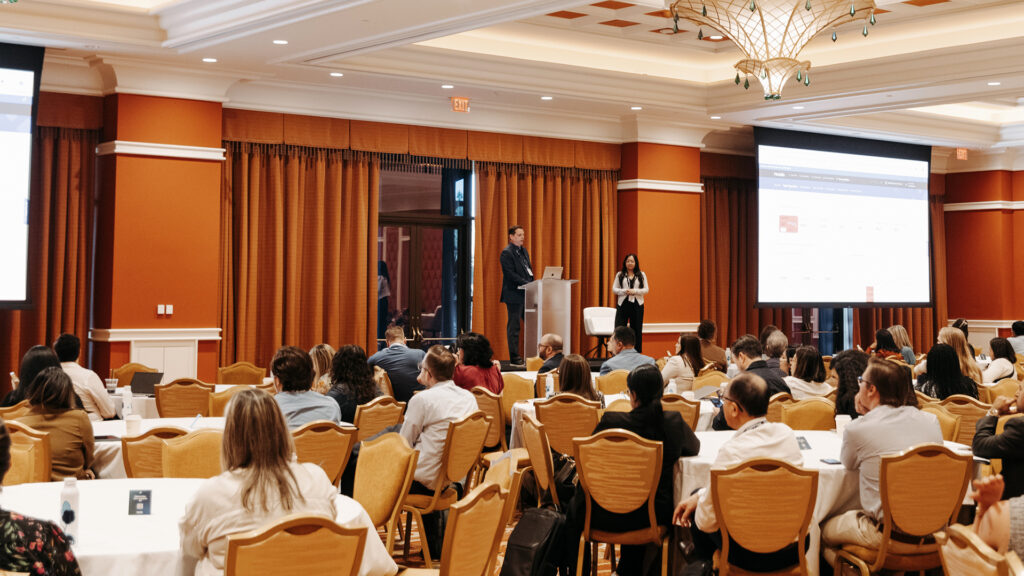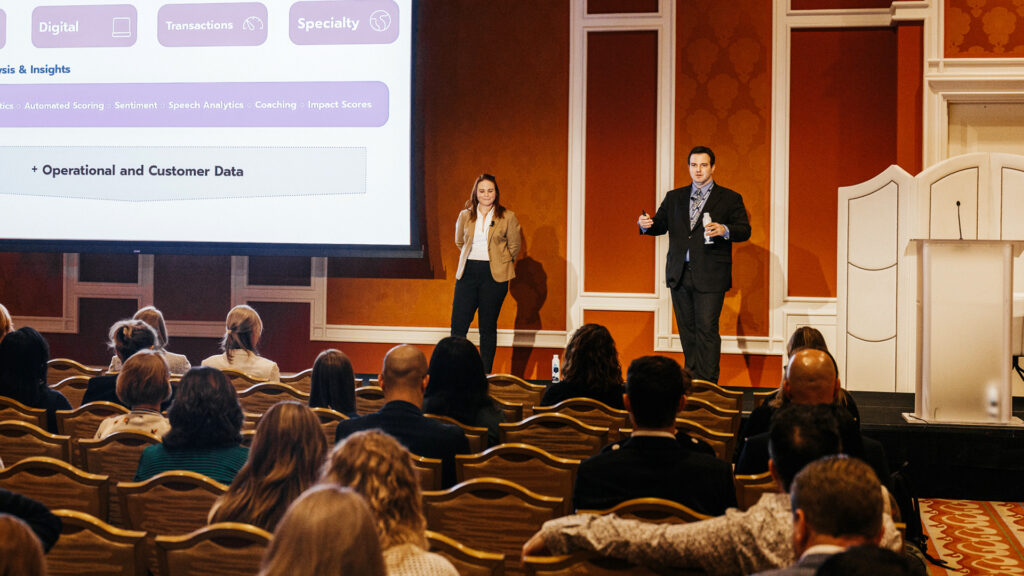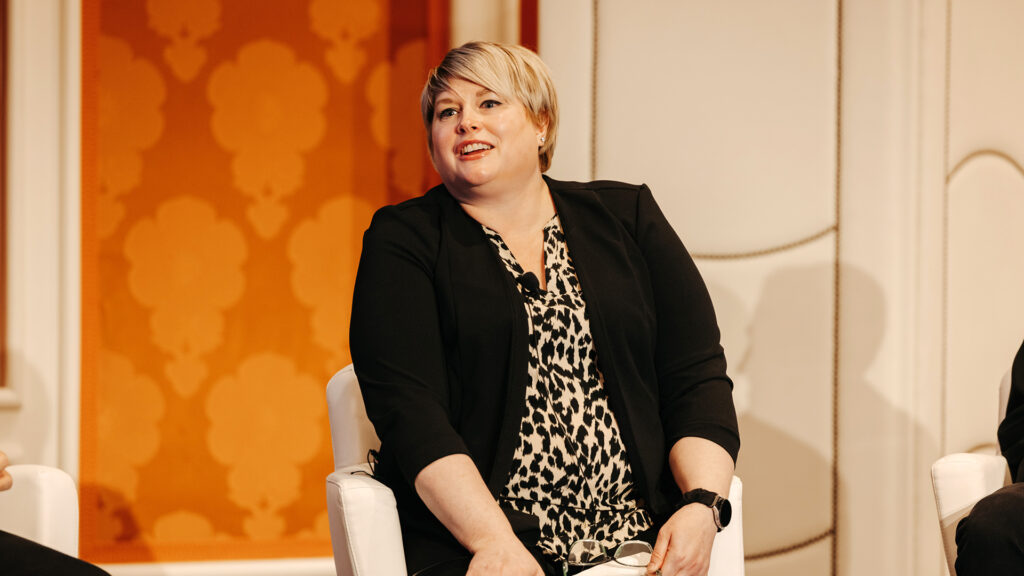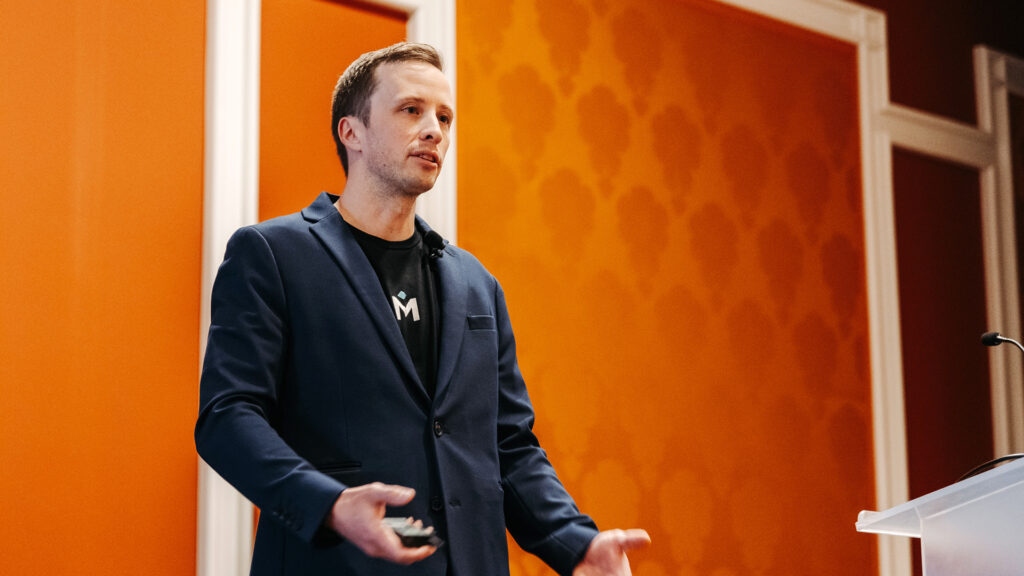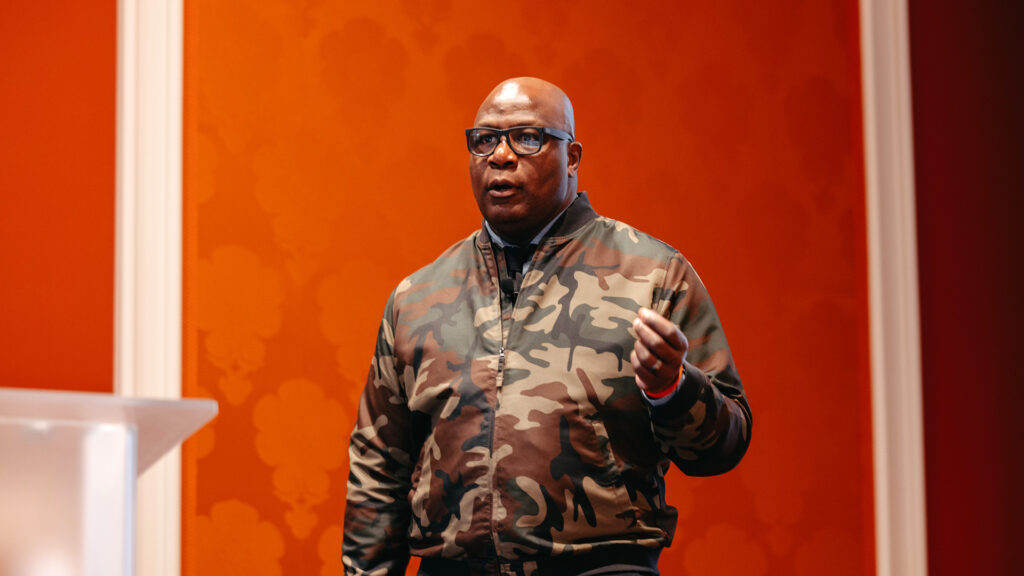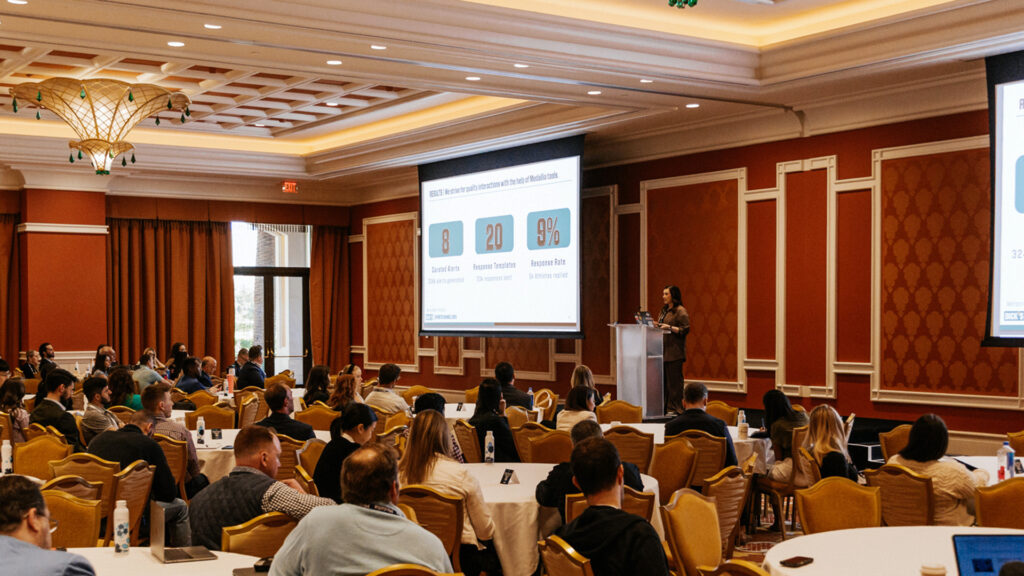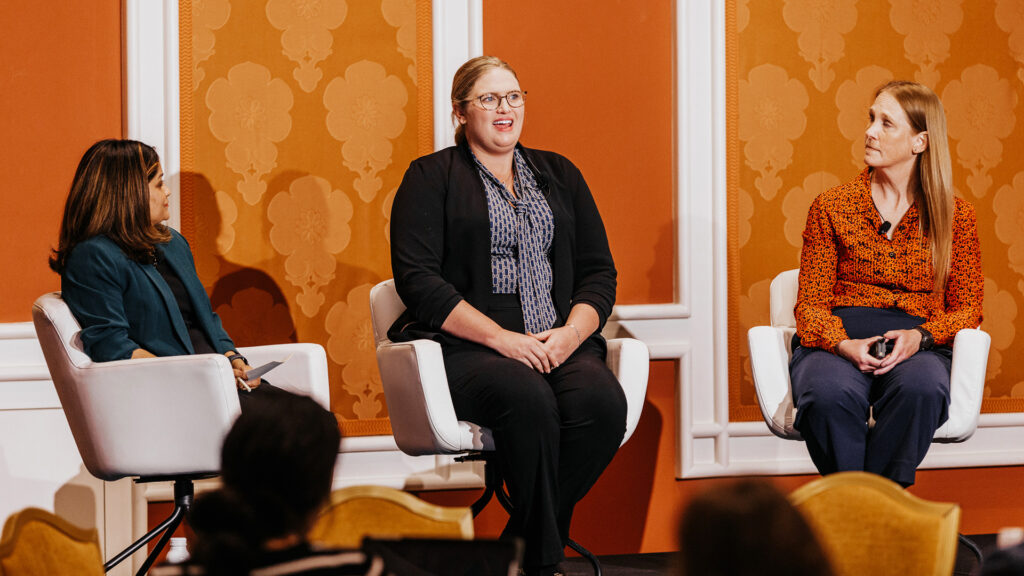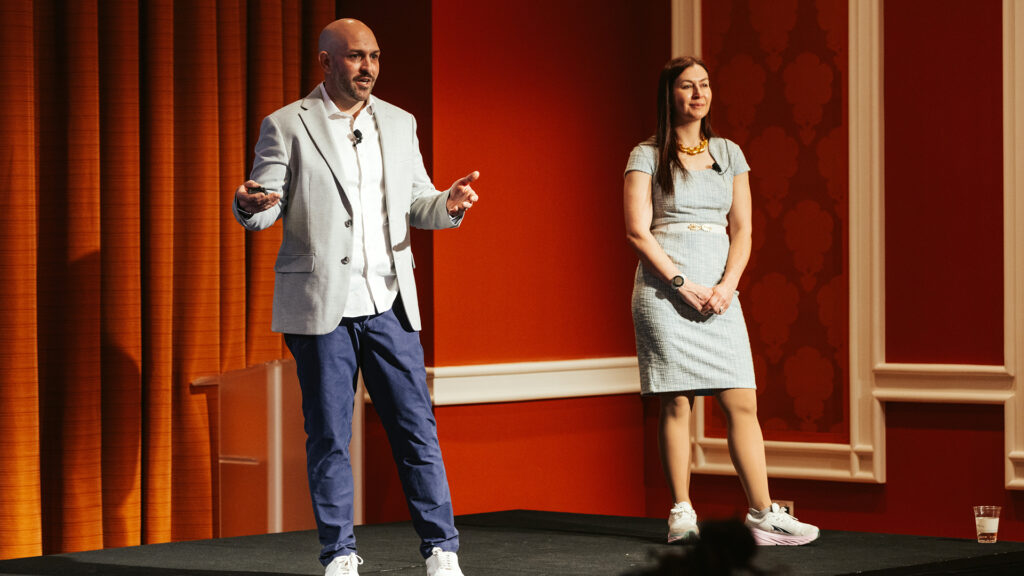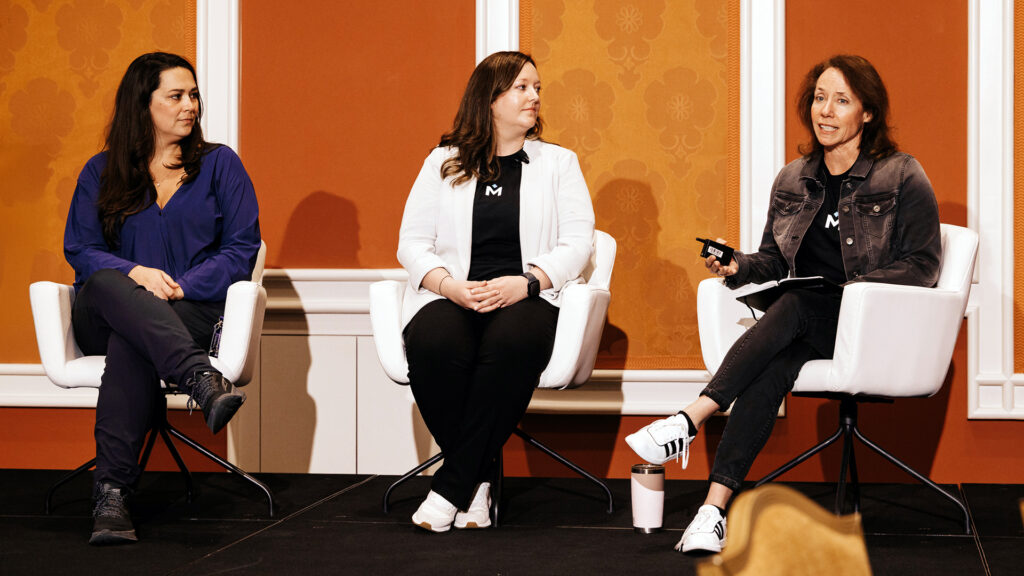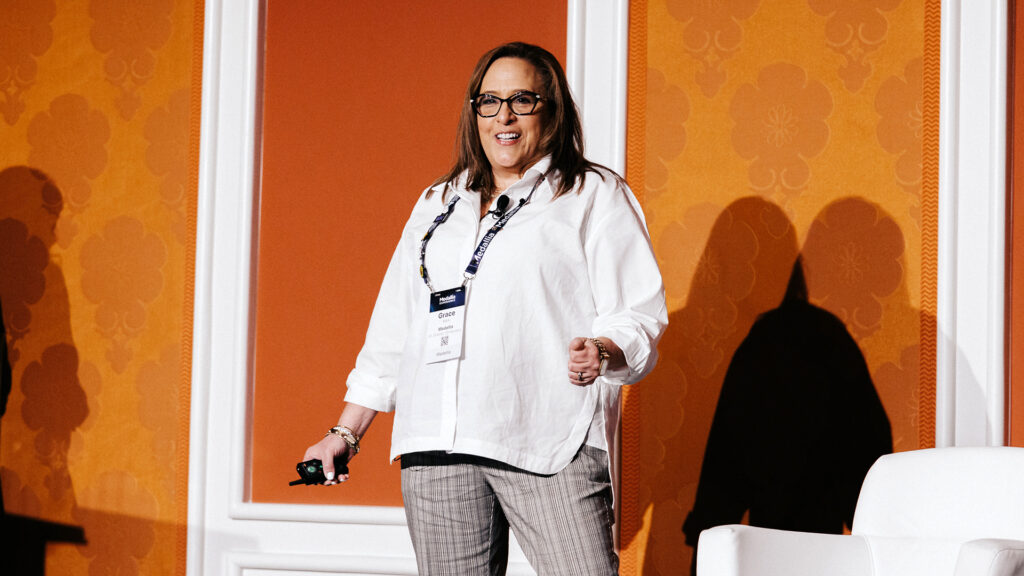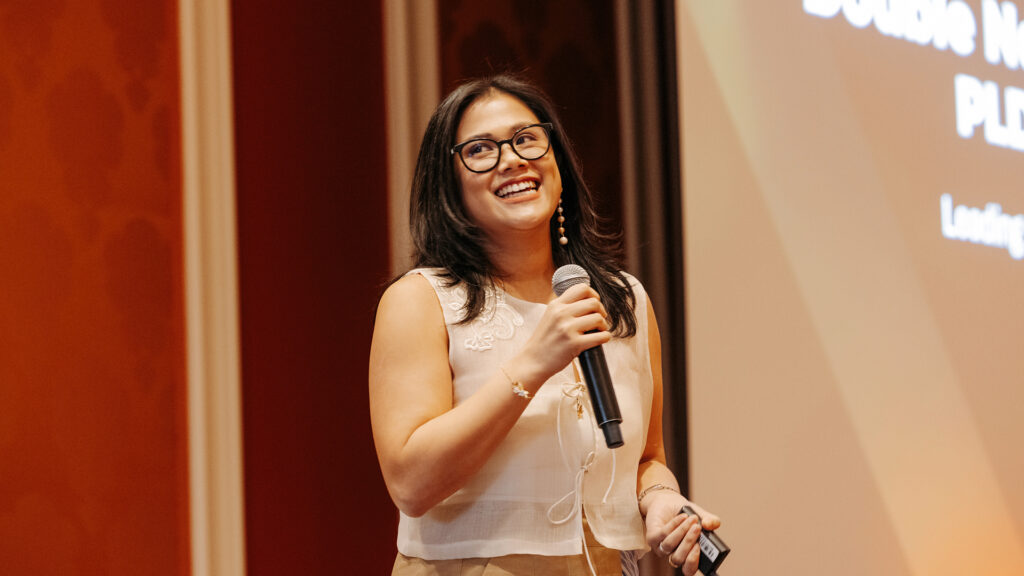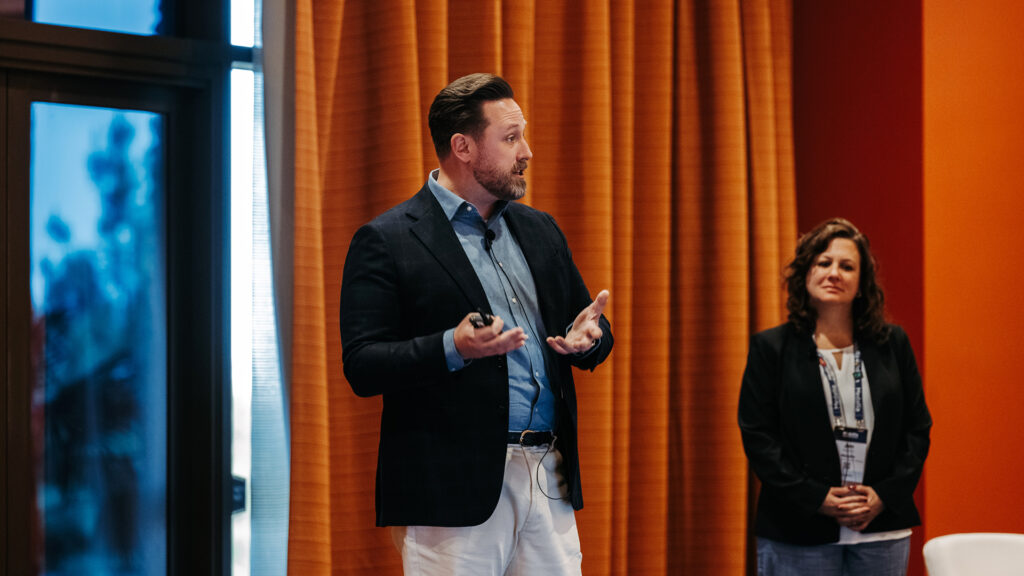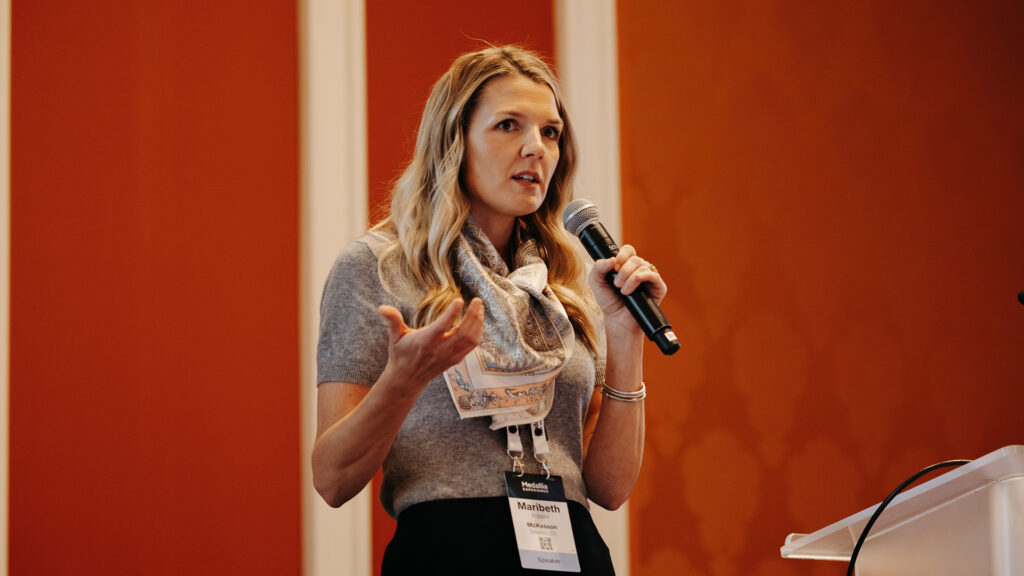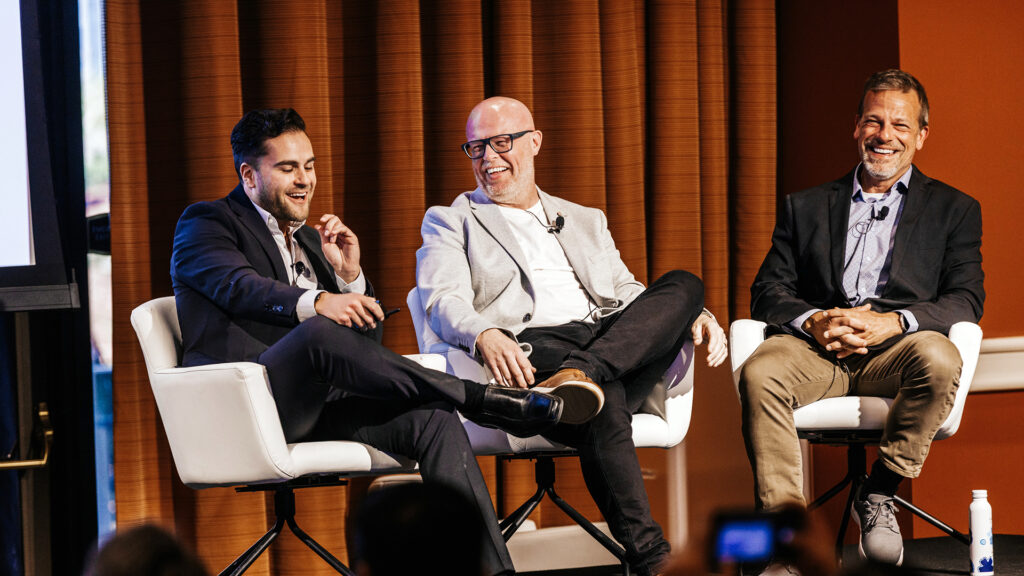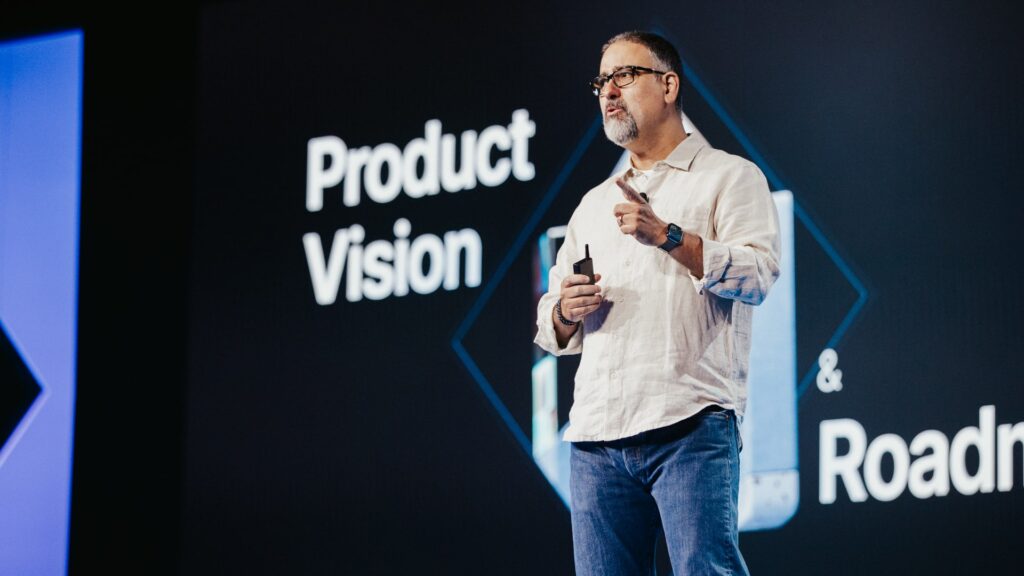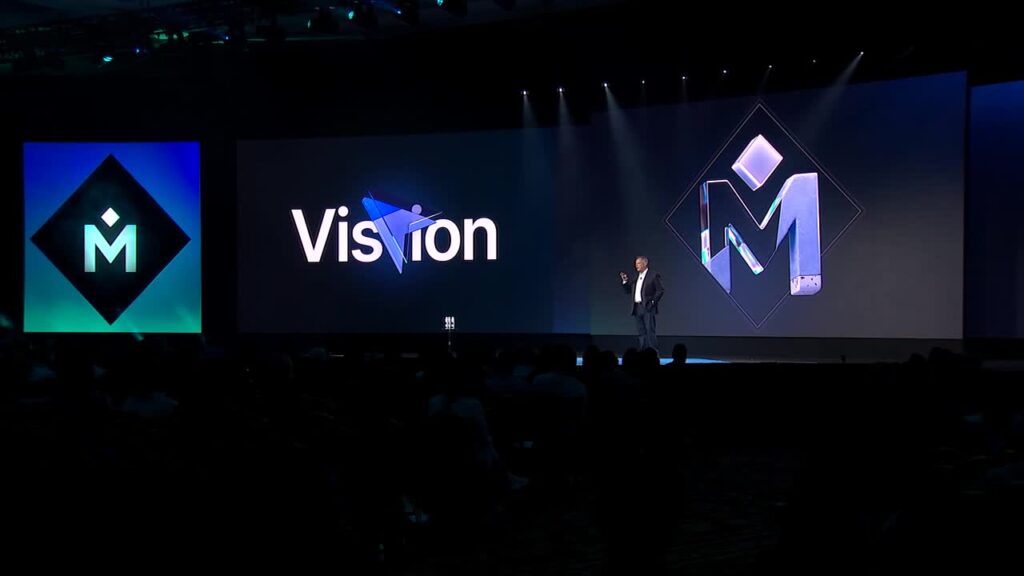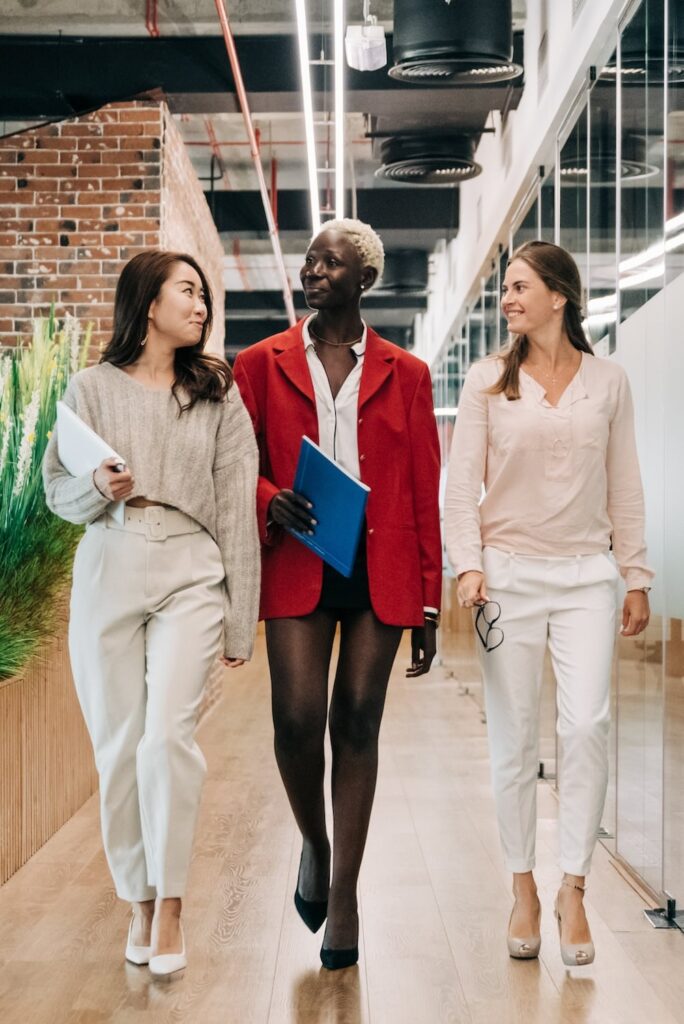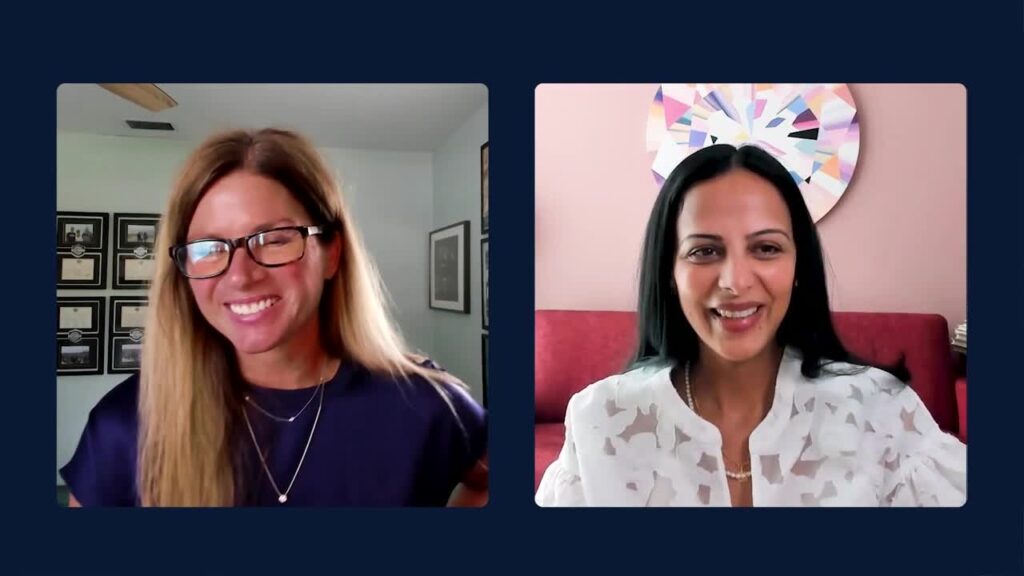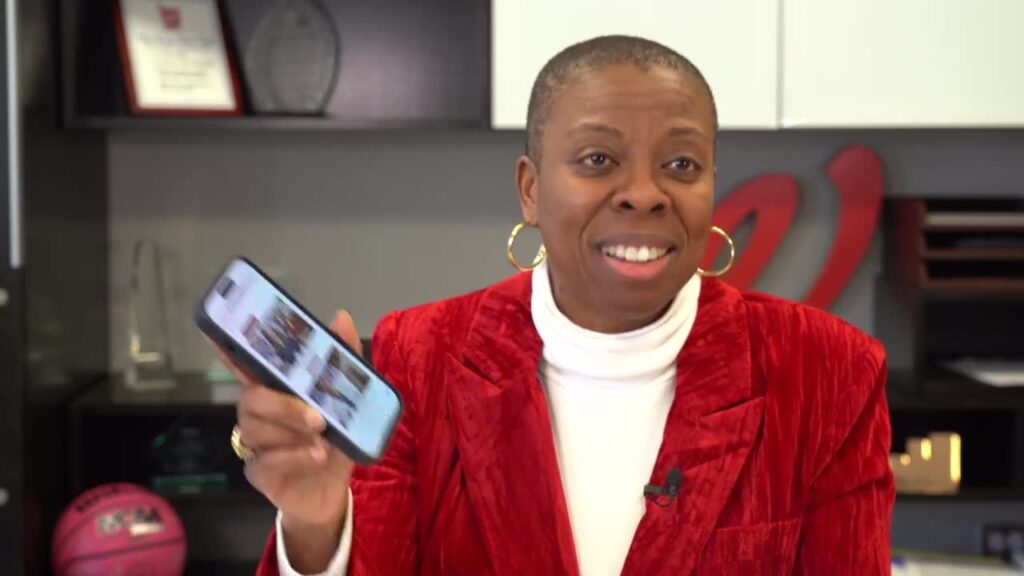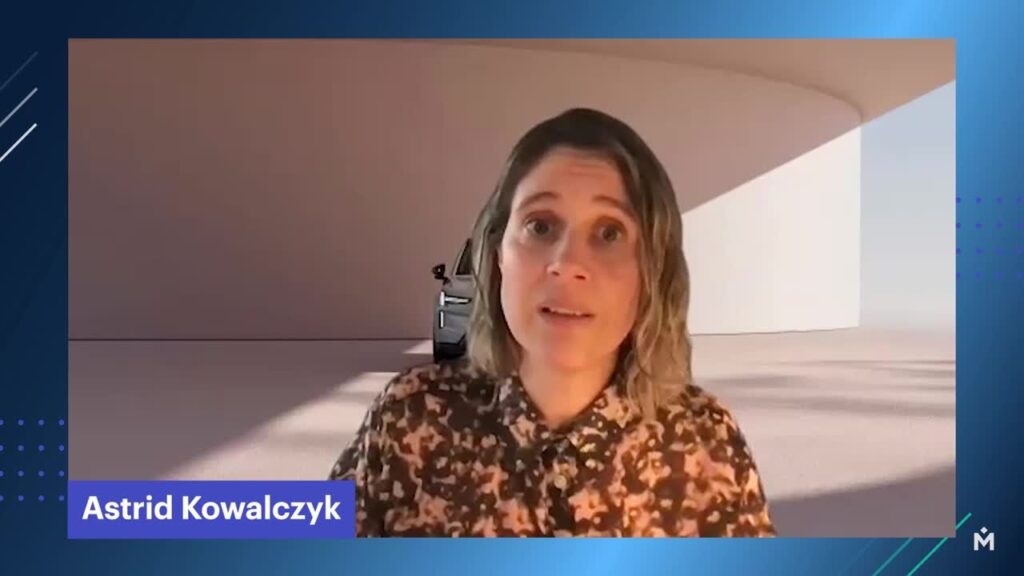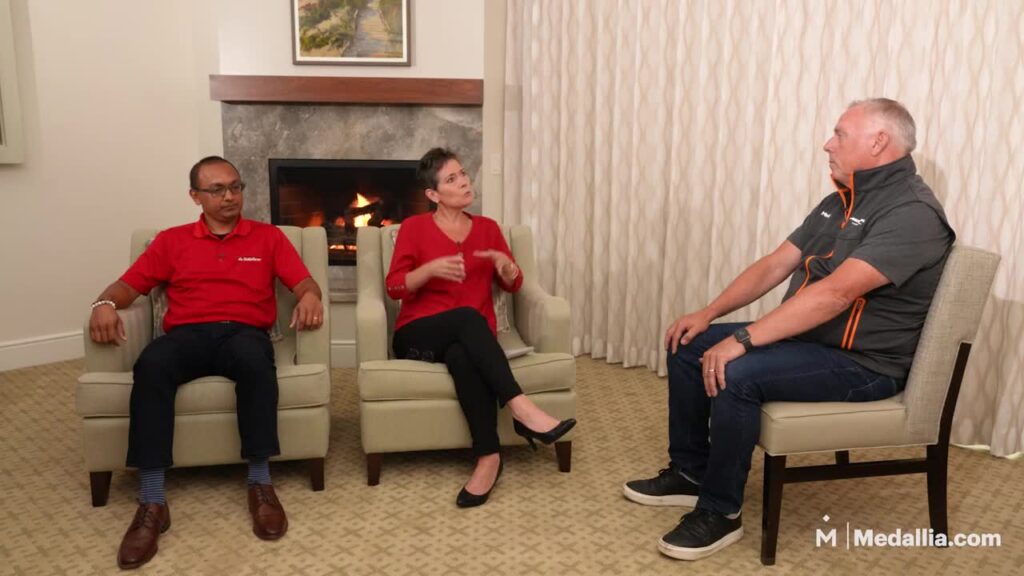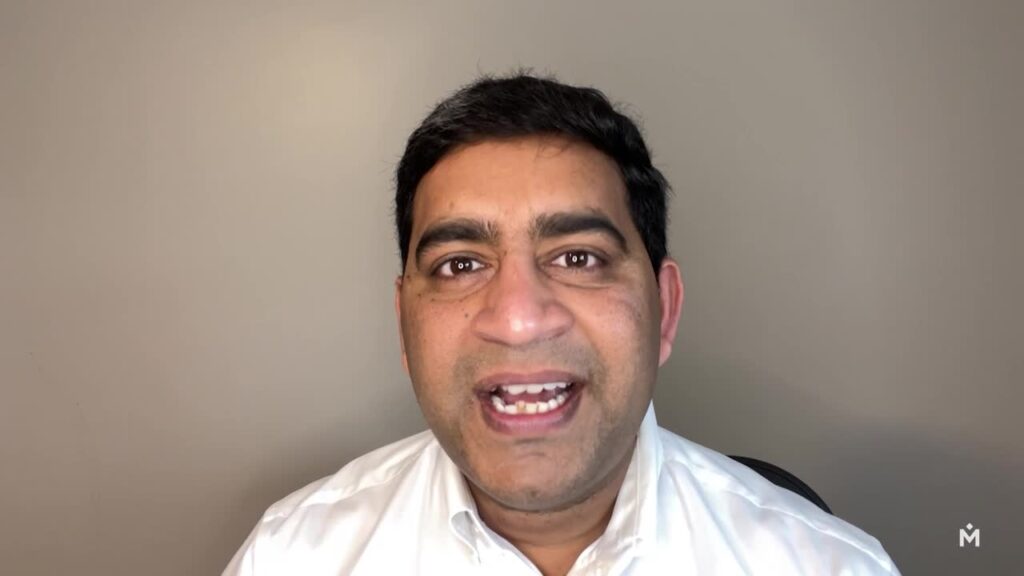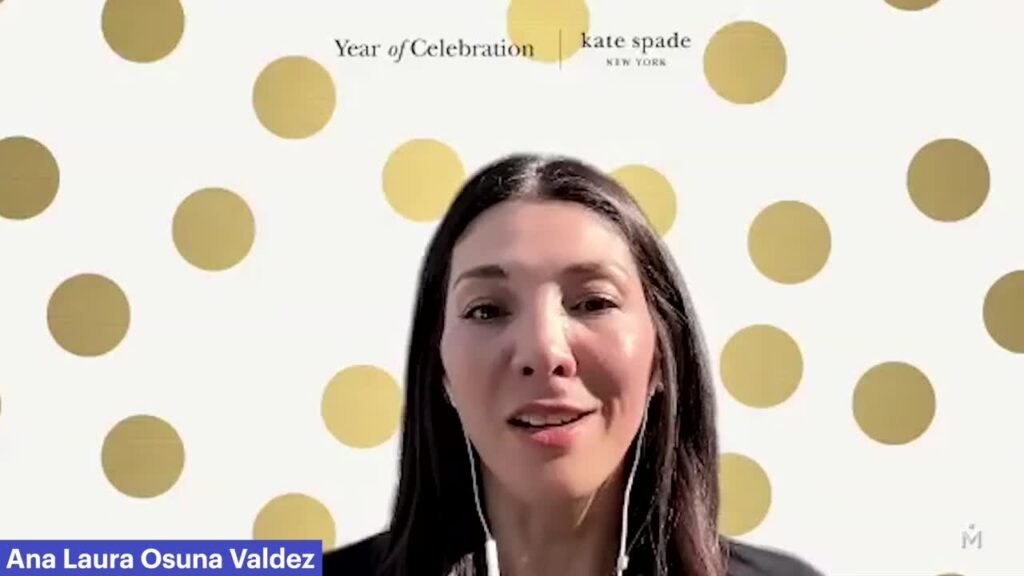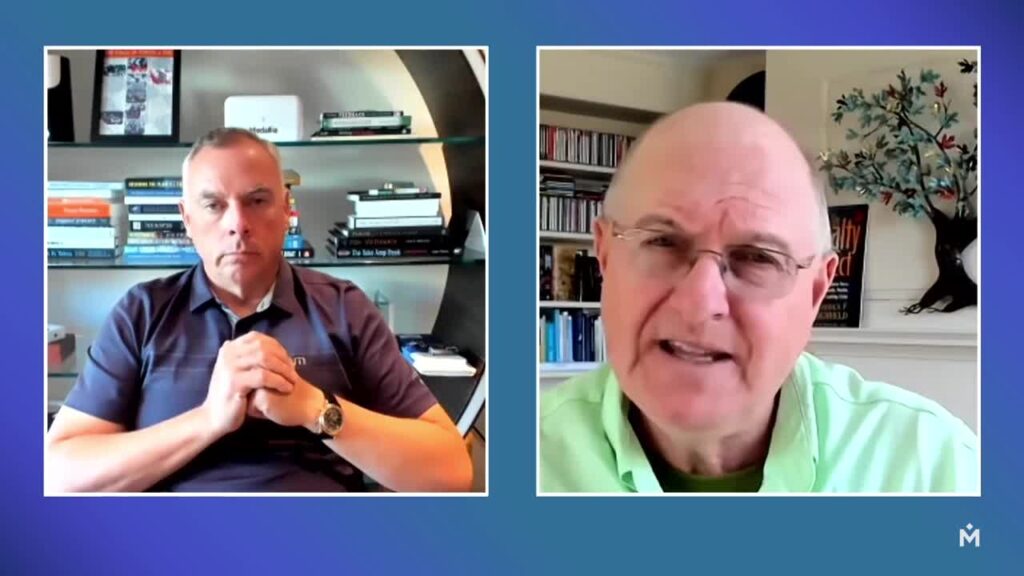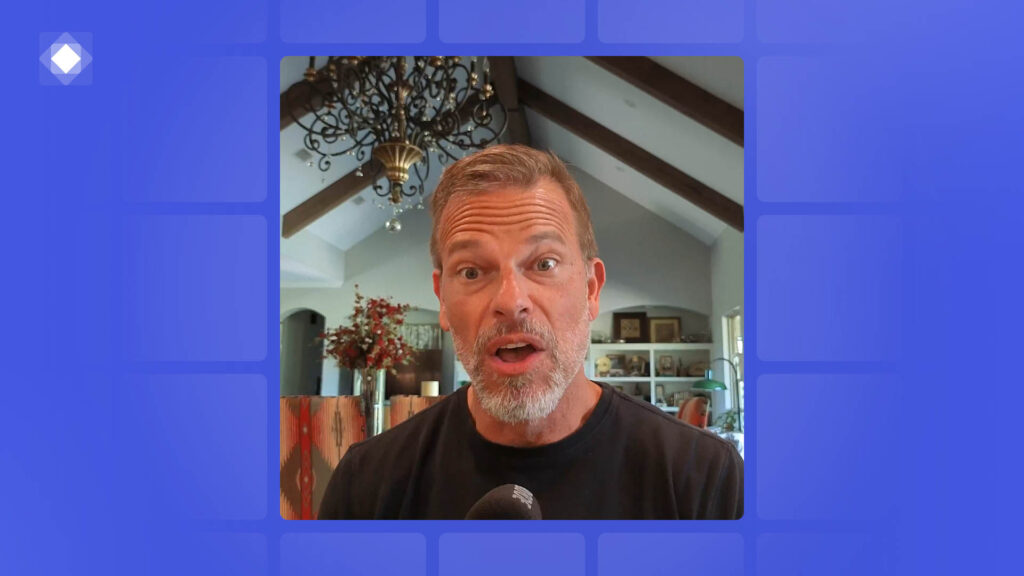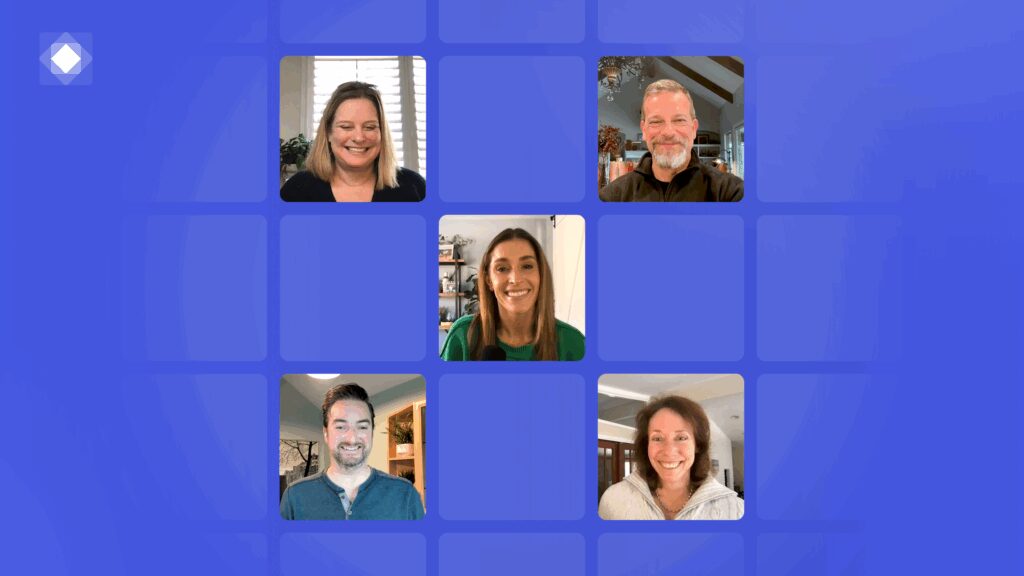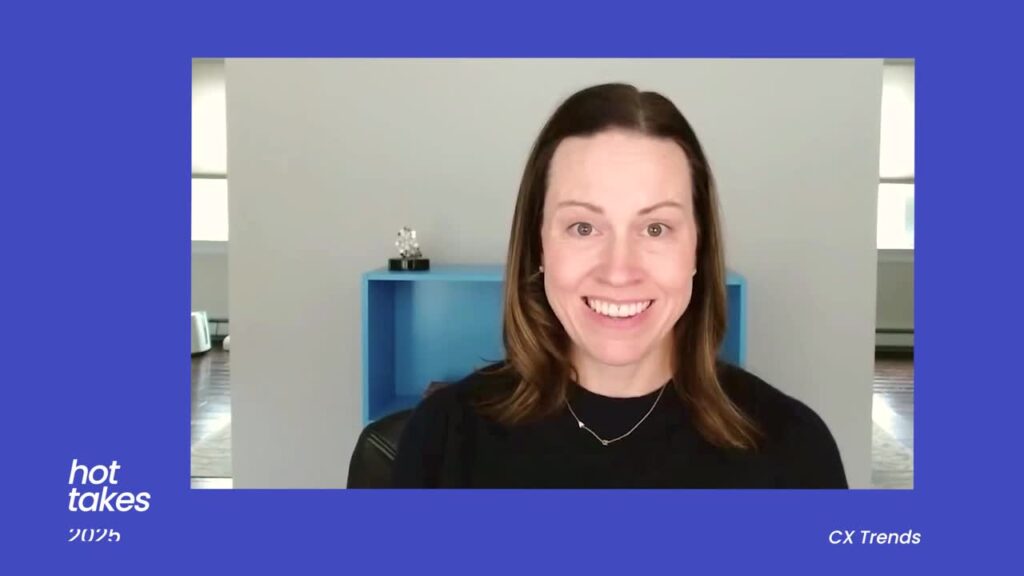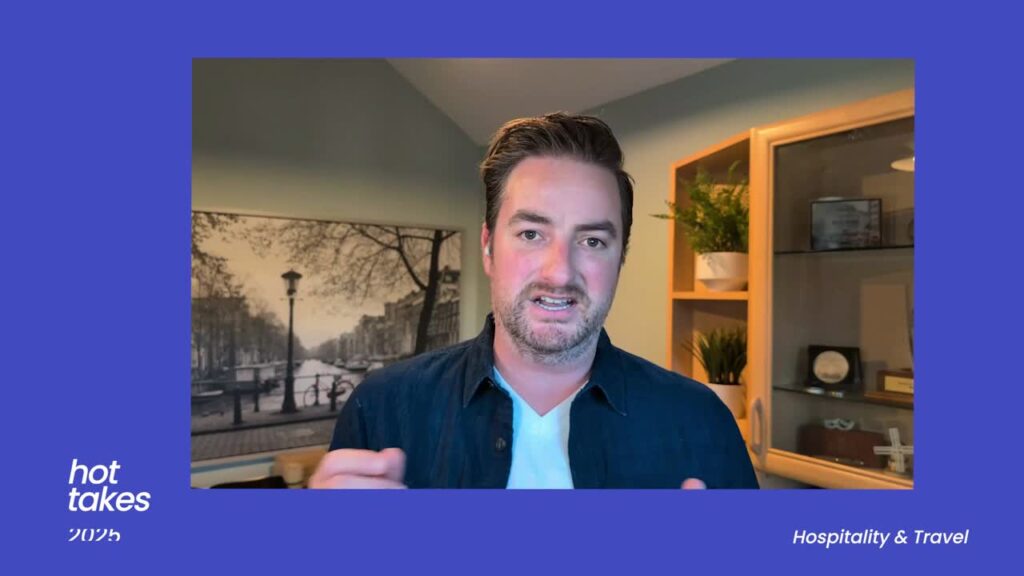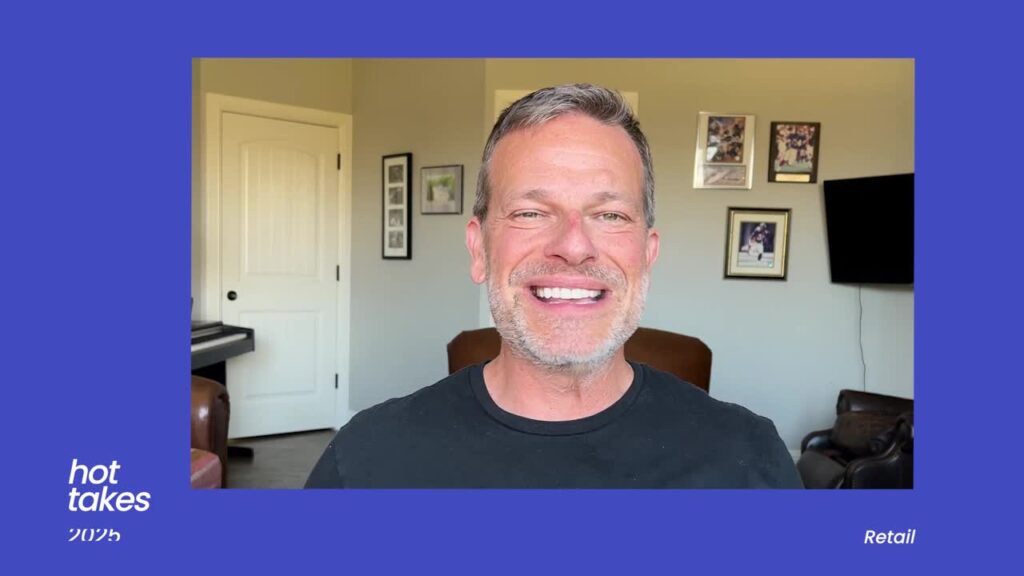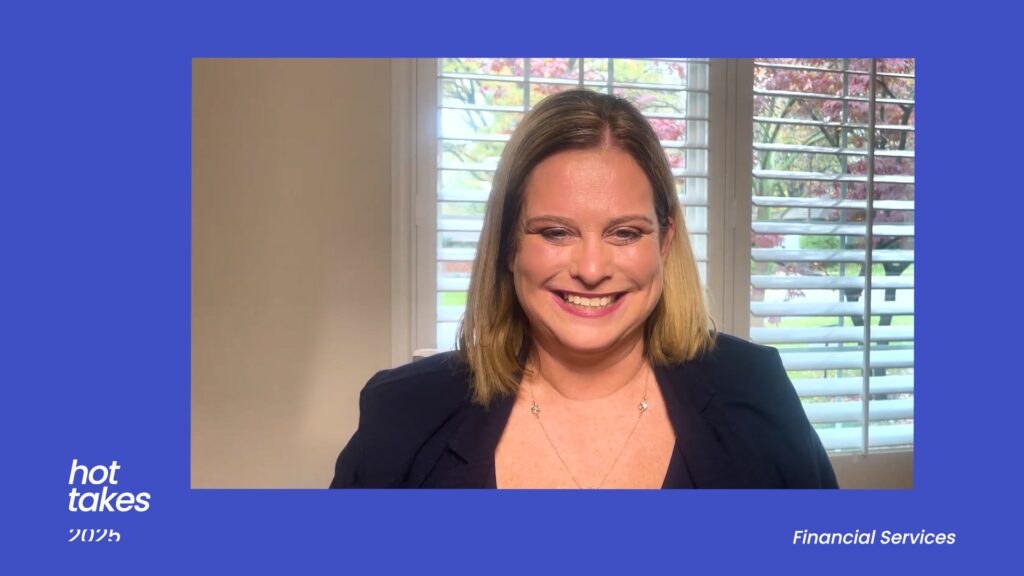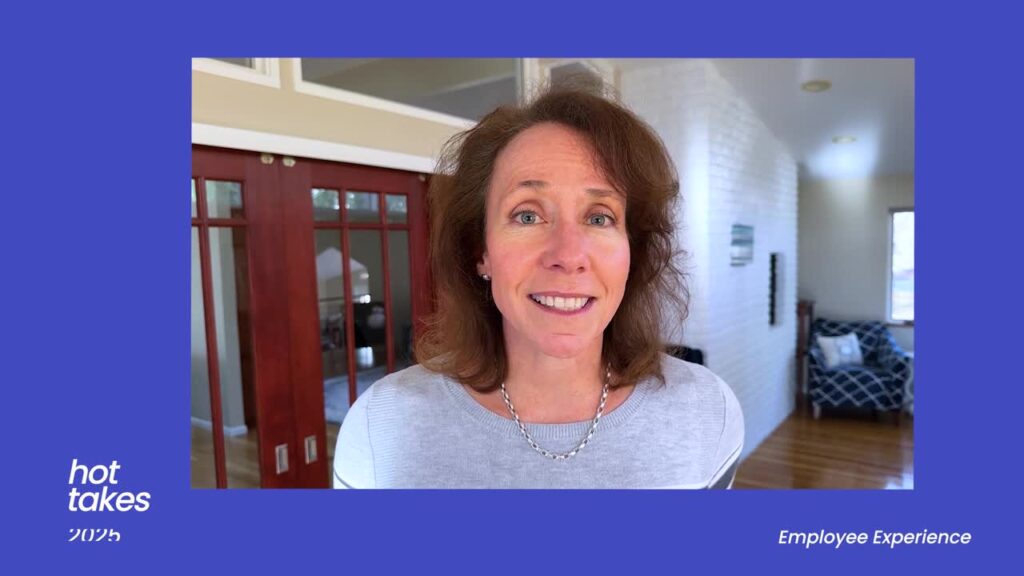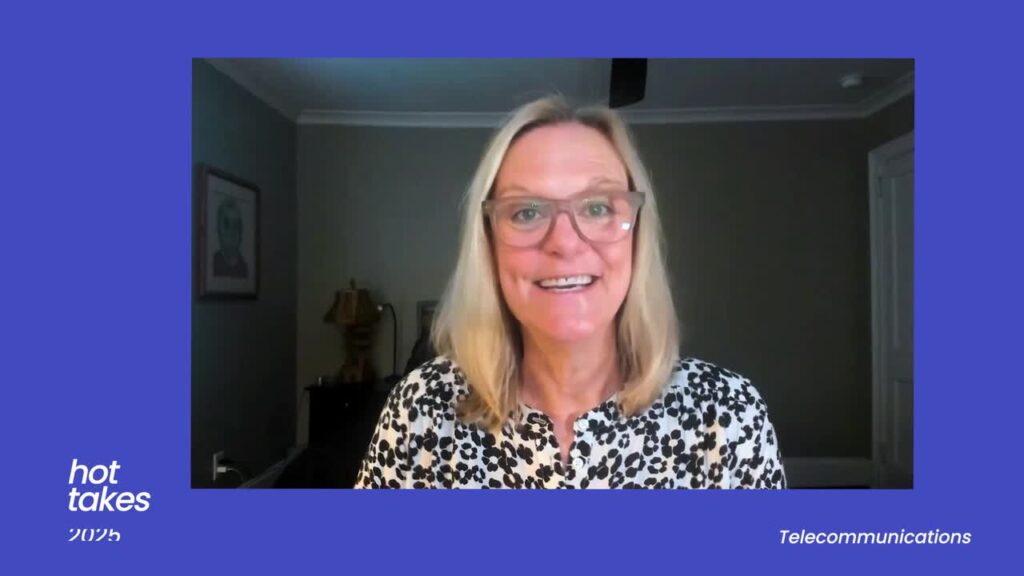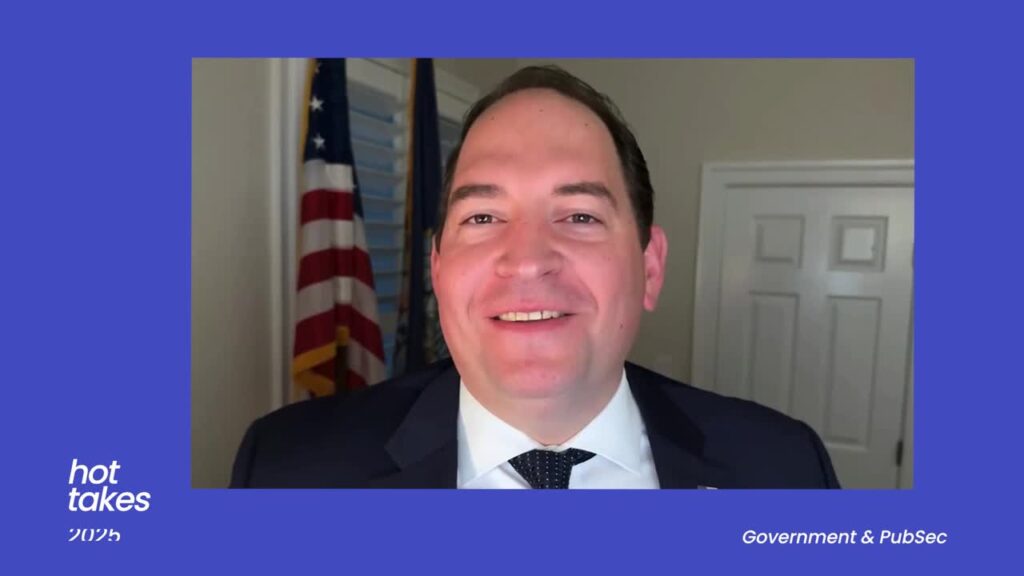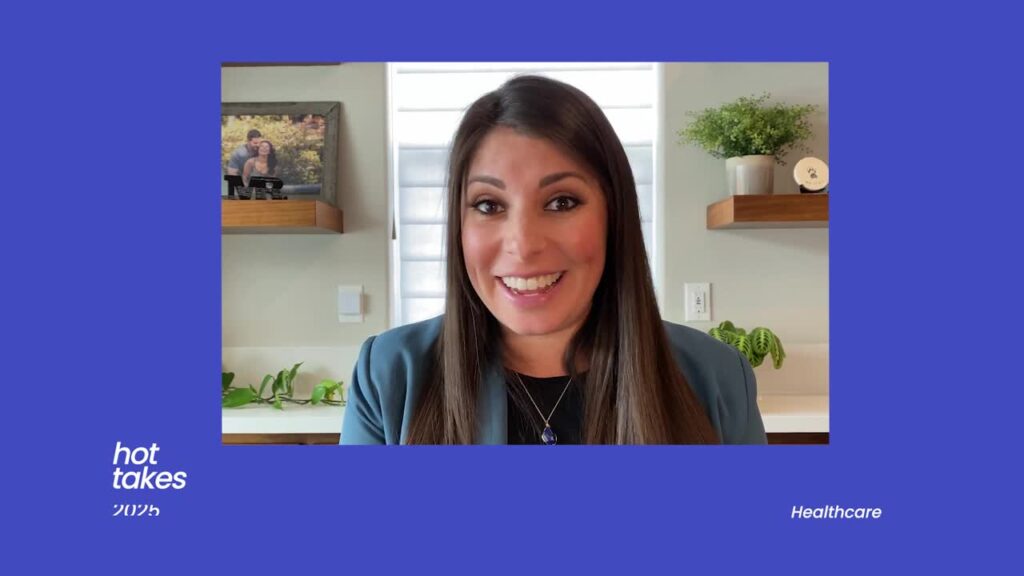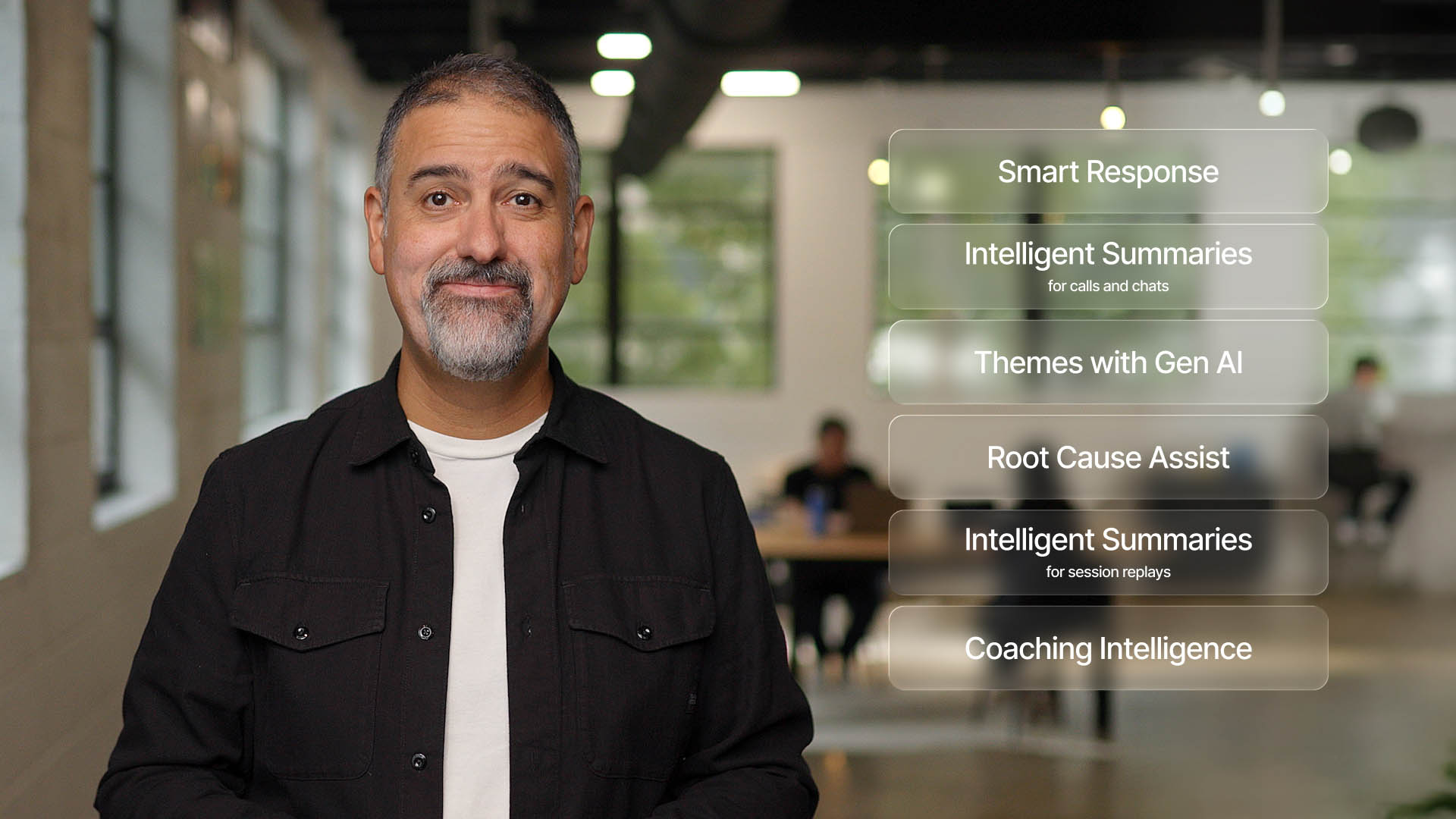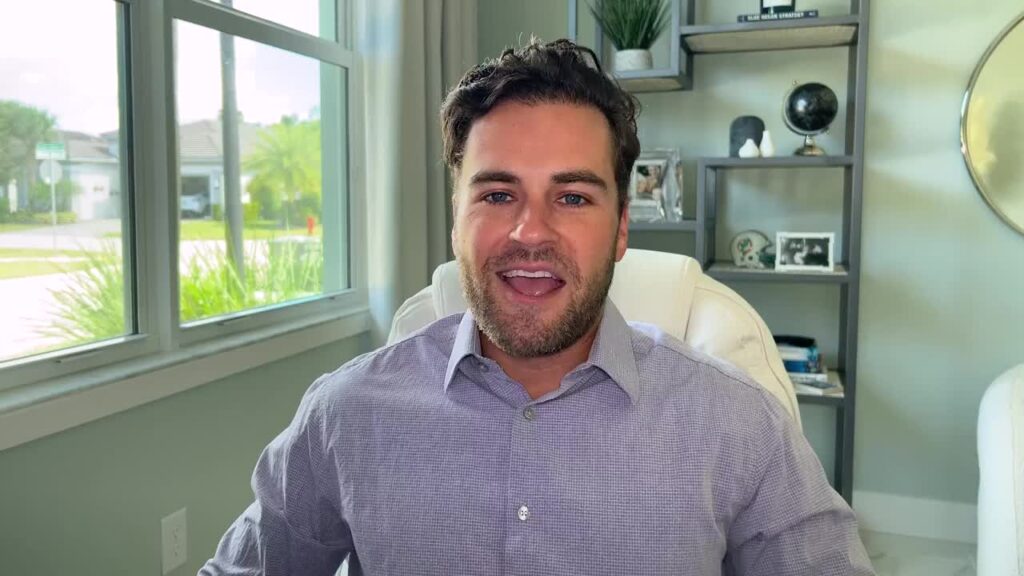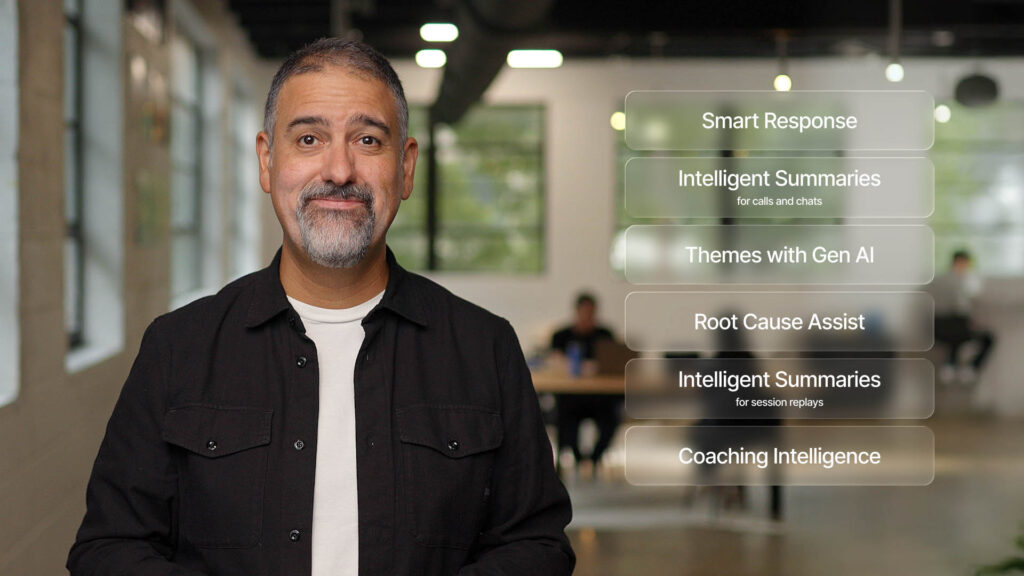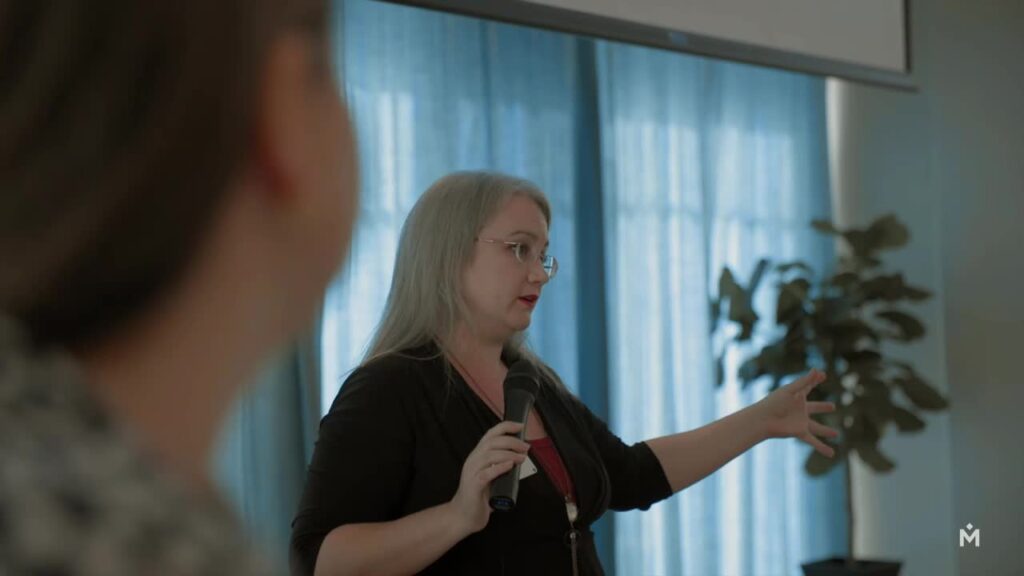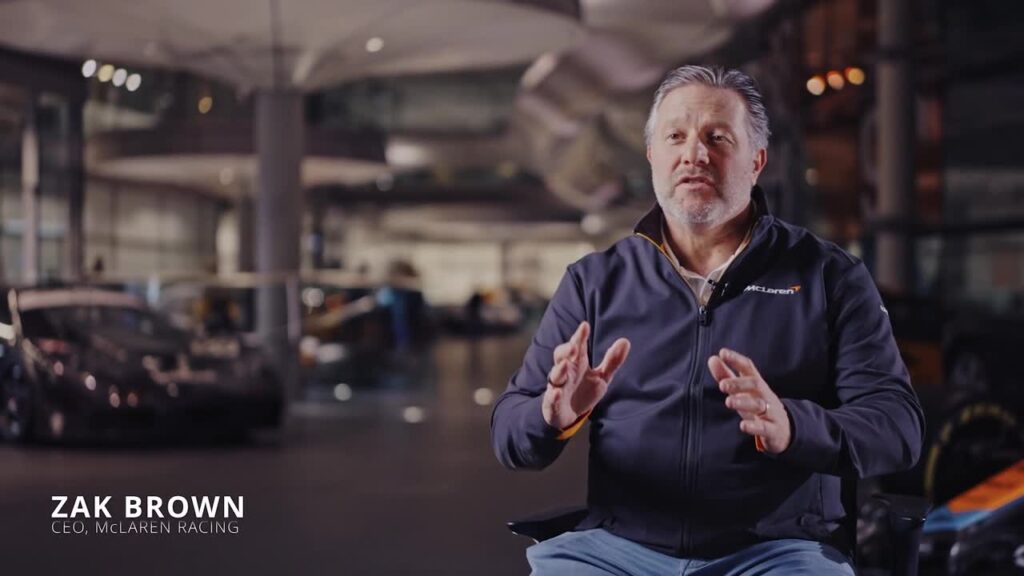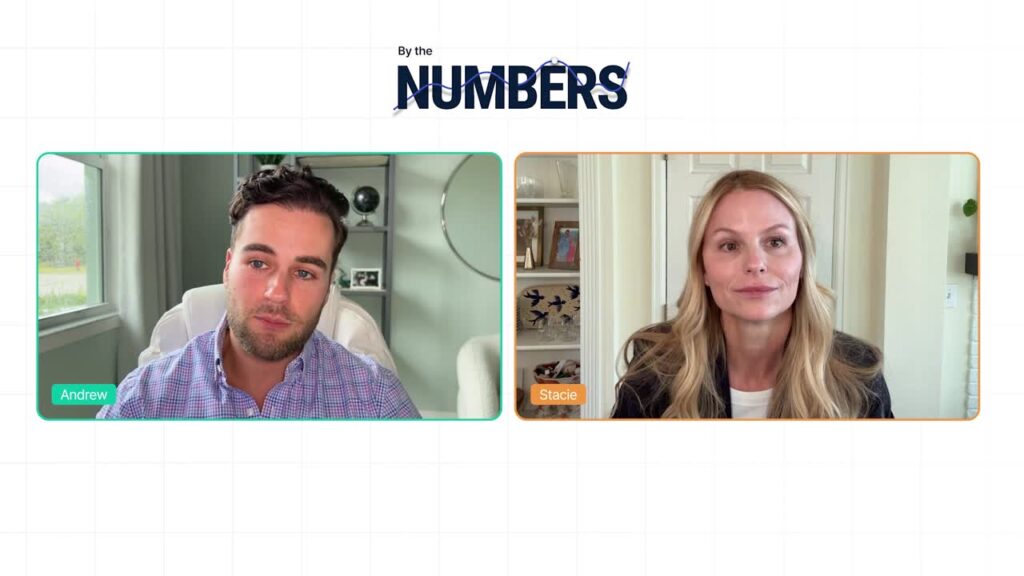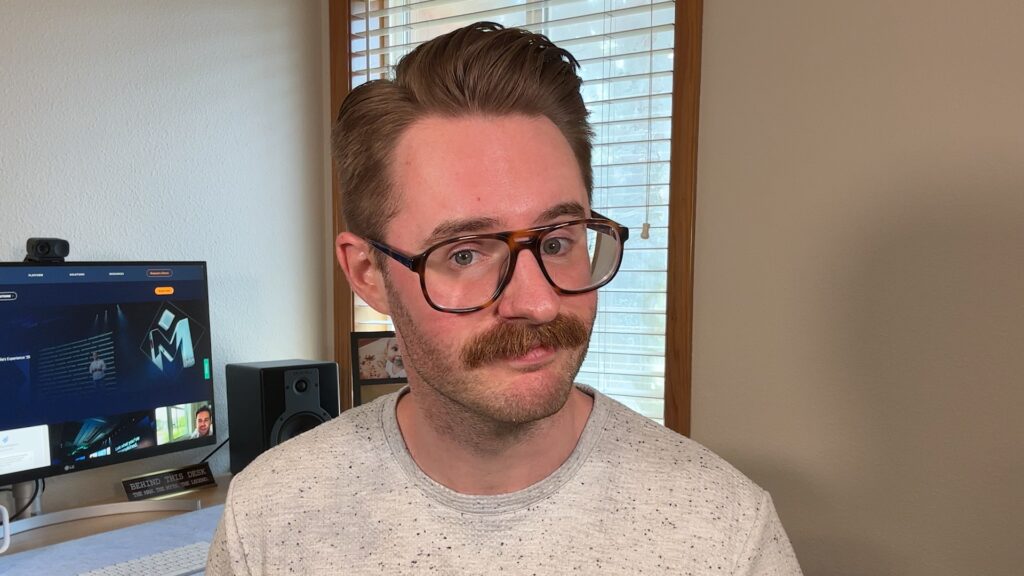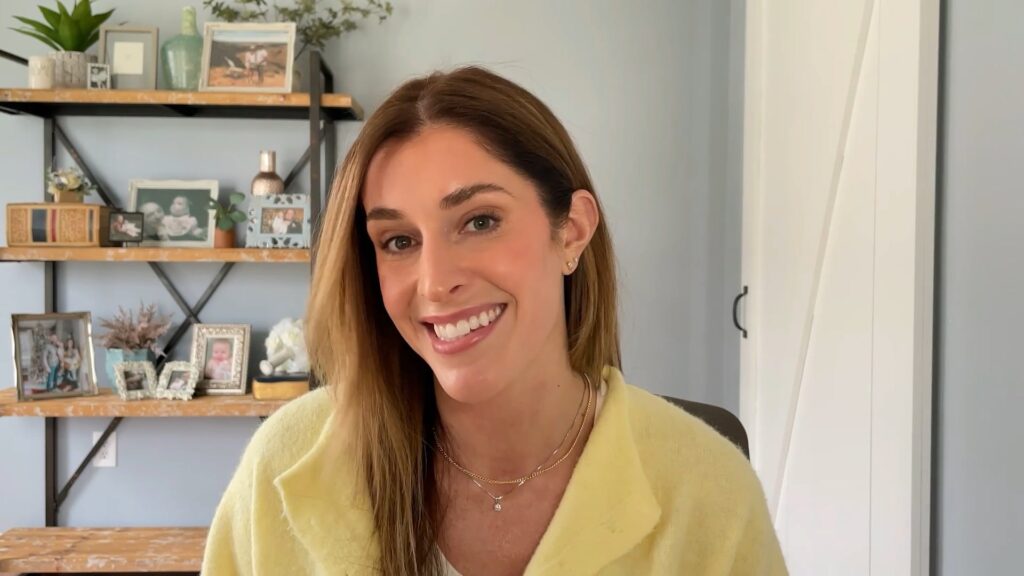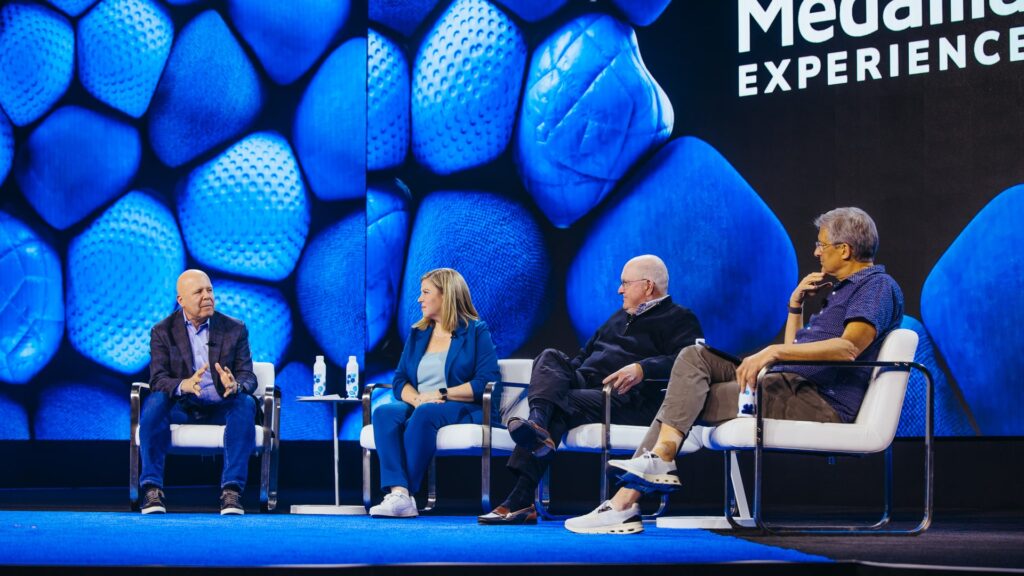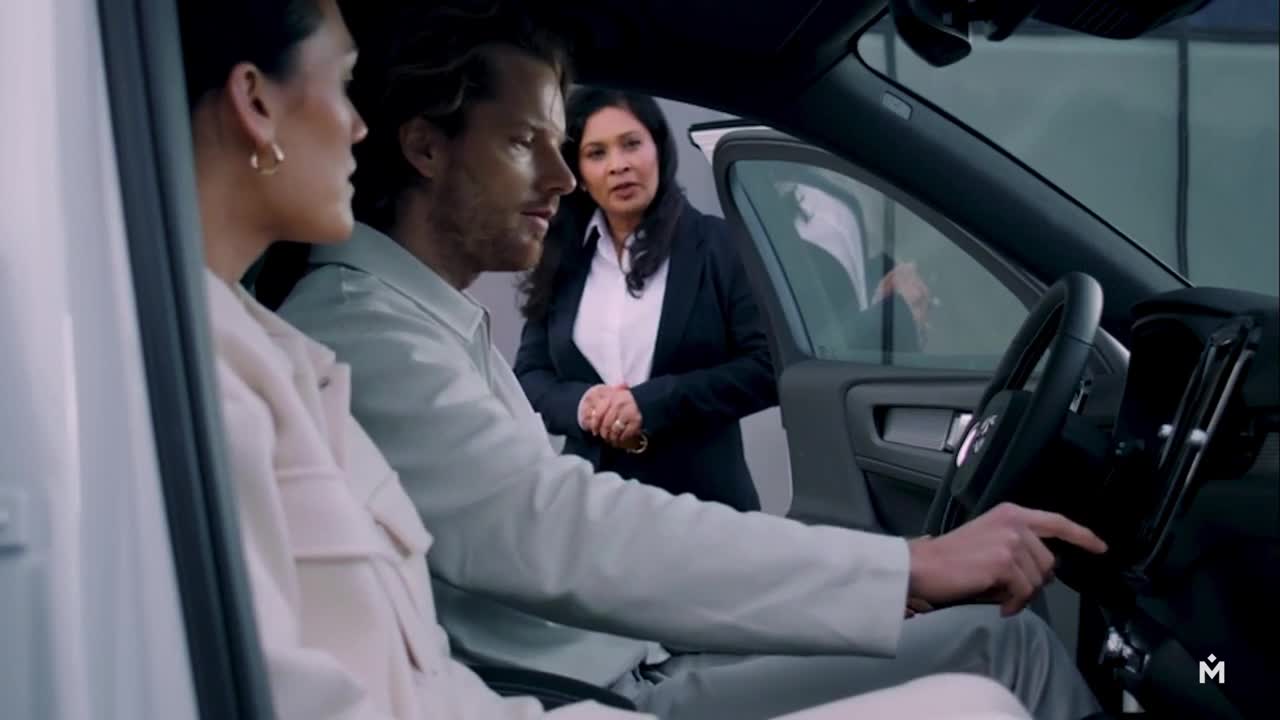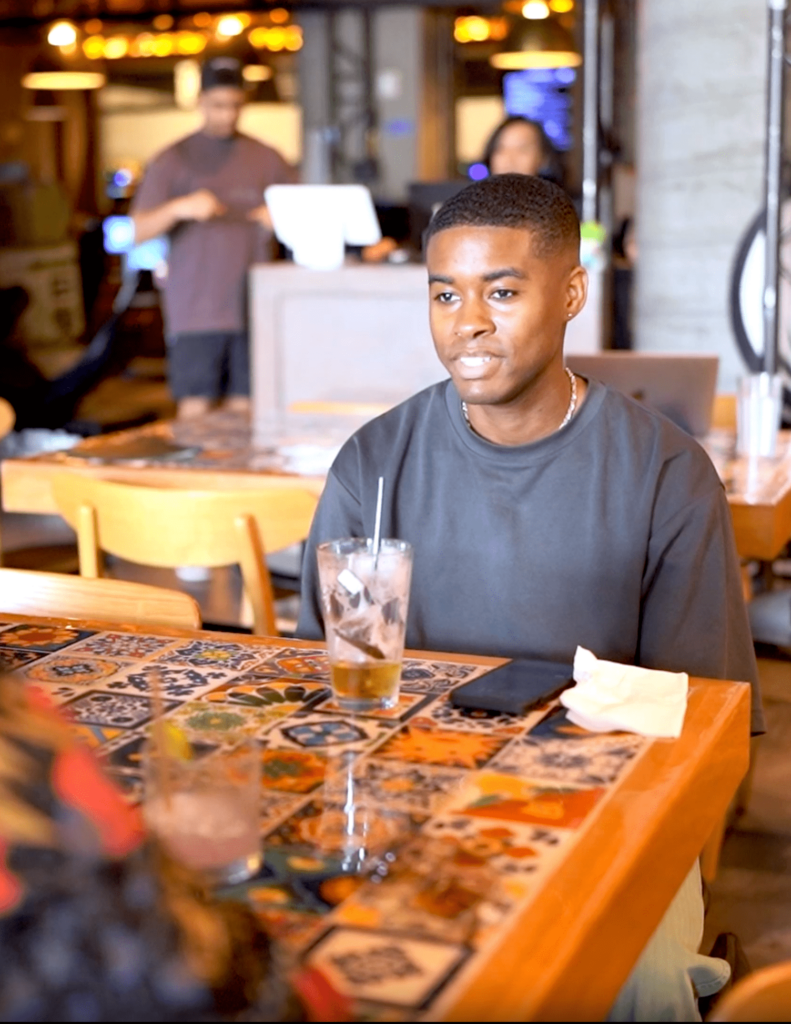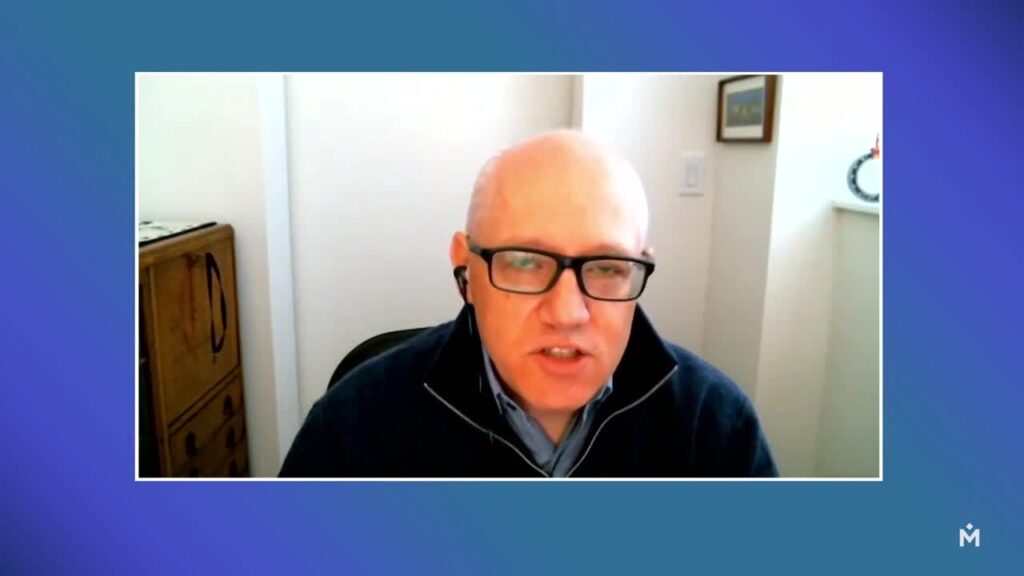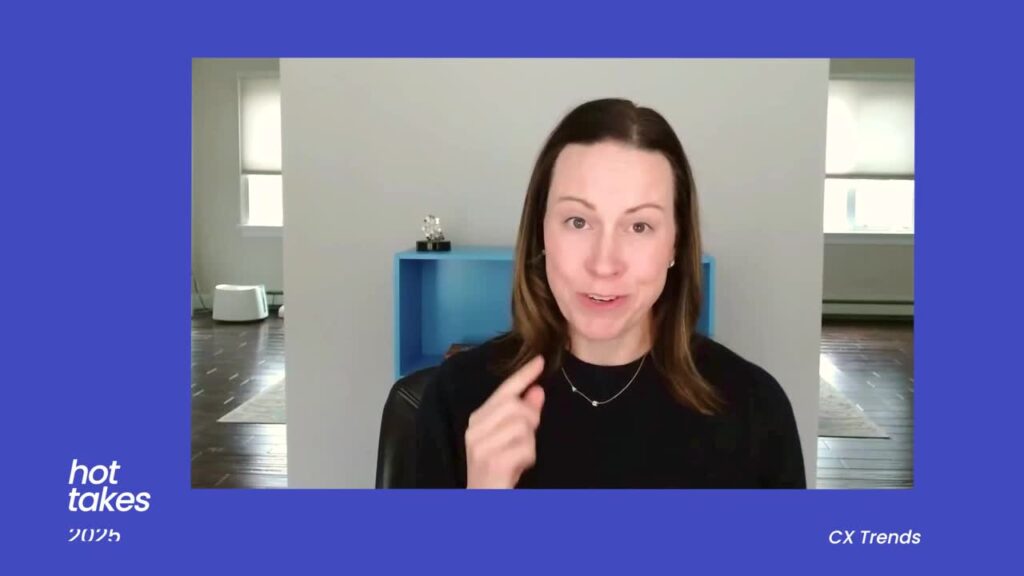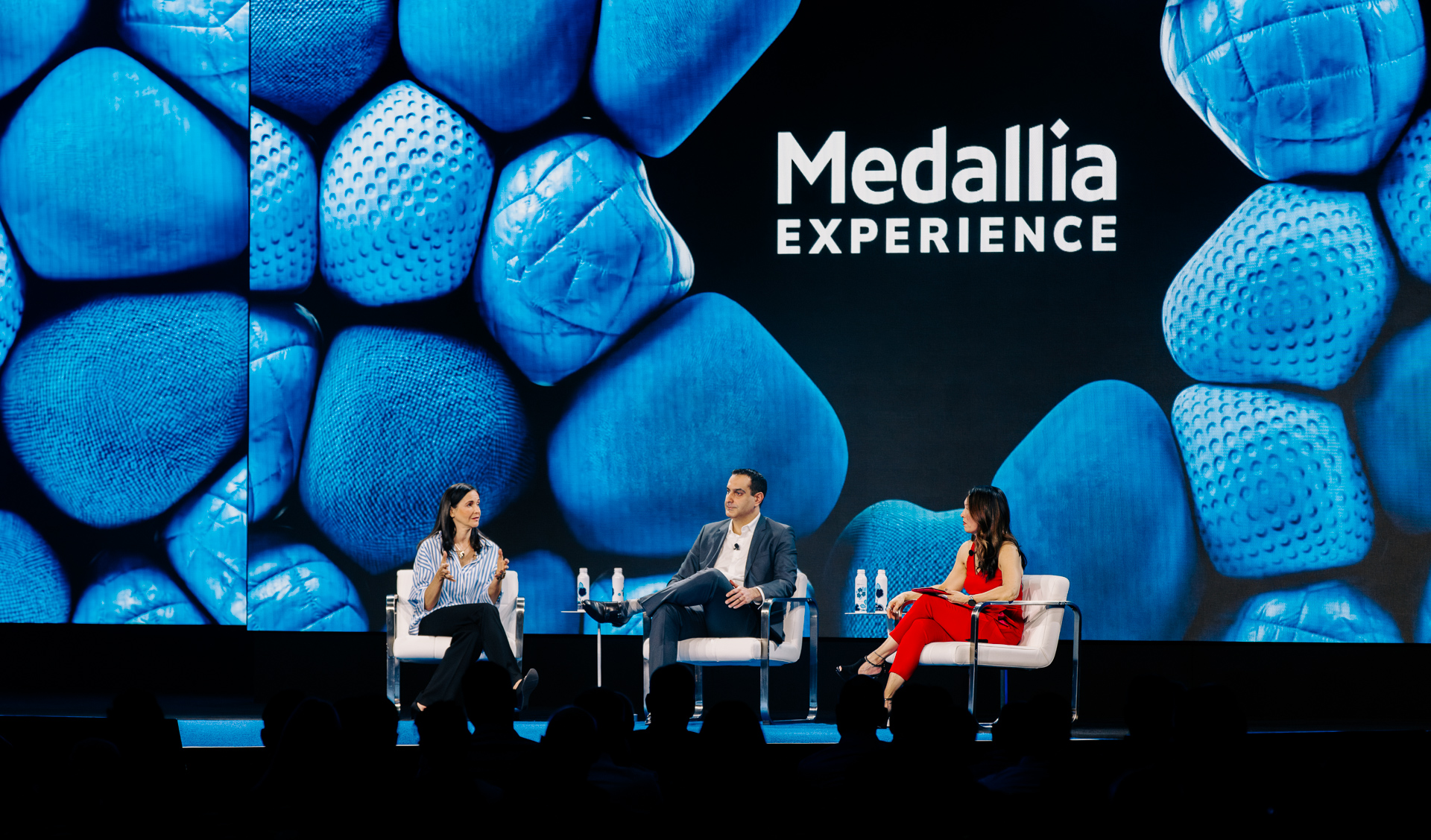Denise Lee Yohn: [00:00:00] Now I’d like to welcome some colleagues to the stage. Jessica Shannon and Sasha Ford.
All right. Let me properly introduce you and properly say your name also Sasha. Sorry about that. I wanna introduce these panelists who are gonna be sharing about the transformative connection of CX and EX and their companies. So first, Sasha Fard is a certified customer experience professional with over 10 years of expertise in customer experience, insights, and enablement.
He’s the country lead for the customer experience management practice at Capital One Canada. Recently won the global CXPA impact award for an initiative that enhanced both customer and employee experience across global call centers. So welcome Sasha. Thank
Sasha Ford: you very much. Great to be here.[00:01:00]
Denise Lee Yohn: And here’s Jessica Shannon. She serves as the Chief Experience Officer for Sandals Resorts International. She gets to live in Jamaica. She oversees strategies to continuously improve customer and employee experience. Her team analyzes insights and creates new experiences across the entire guest and team member journey from point of inspiration through to returning home and dreaming of their next vacation.
She has 25 years of experience in hospitality and global management consulting. Welcome, Jessica.
You’re great, aren’t they? Alright, so I want to start by giving some folks some context from which you’ll be sharing your insights. Let’s start with how you would describe the state of CX plus ex alignment at your organization and maybe some of the key drivers that have gotten you to that state.
And so we’ll start with you, Jessica. Thanks Denise.
Jessica Shannon: And for those of you who aren’t familiar with Sandals and Beaches Resorts, as Denise mentioned, we are a [00:02:00] resort destination brand focused on luxury, all-inclusive vacations. And yes, I do get to live in Jamaica, which is wonderful. And so with that, I have one of the.
Best jobs in the entire world because I get to focus on creating magical moments, experiences, memories for guests and team members across some of the most beautiful islands in the planet, which happened to be in the Caribbean region. And so with that, our company is a family owned brand. We started in Jamaica in 1981 and our founder was an absolute visionary and he had a very intuitive.
Understanding of the importance of guest experience and team member experience, including that of the communities in which the team members lived. And I say that to say from our perspective, the fusion between ex and CX started with Inception. And it has been baked into the kind of cultural DNA and the ethos of the company, which is absolutely fantastic.
Our executive chairman, who is the son of our founder. Took that on and [00:03:00] has very much carried that baton many years ago. He actually started a Sandals corporate university because he recognized the importance of every team member having access to unlimited higher education. And so flash forward to a few years ago, we did formalize and experience division.
It’s called experience, but it is the ultimate fusion of CX and EX together under one umbrella. And so the formation of that was really a natural evolution and progression. In terms of kind of that culture and that ethos from the start, I would say the biggest change was the entrance of big data and analytics, which I think is probably common for everyone here as well.
We now have that ability with technology to look at very systematically what our guests both actively and passively feel about us, our brand, our experiences, and also what our team members actively and passively feel about us. And so we, we harvest all of that information. We look at it. And we use that as a basis to help further personalize experiences, [00:04:00] to help guide some of the innovation that we look at.
It doesn’t replace creativity, certainly because we love the art of the possible, but it does give us a springboard and some more informed decision making.
Denise Lee Yohn: Great. And what about you, Sasha? How would you describe the current state of CX plus ex? At Capital One. Sure. I
Sasha Ford: think since our beginnings in the 1990s capital One has been a customer-centric organization with a strong focus on employee recognition and development.
So we really believe that a good CX starts with a good ex, and we don’t say that just because it sounds good or it’s the right thing to say. But for us, it’s more than a phrase. It’s an attitude. And it’s an attitude that we bring into everything that we do. So in Canada, we’re actually strictly focused in the credit card market, and when most people view credit cards, they think of it as [00:05:00] a, largely commoditized product where everyone’s offering the same thing.
What makes us unique in Canada is that we. Focus on the underserved near prime market. So we really help customers rebuild their credit and improve their financial wellbeing. And as you can imagine it’s very satisfying to be a part of that journey. I read thousands of comments in our VOC program, and what I read regularly is that, customers saying that by helping them succeed with credit, that they finally feel human again.
And I think that’s pretty powerful because CX is all about how you make customers feel. And it feels great to know that, by helping customers succeed, we’re helping them feel like they’re part of the society more, whereas maybe before they felt excluded. So it’s very satisfying. It makes us feel good to hear that as well.
And we do that by really investing in our customer success. Investing in our employee success and [00:06:00] really trying to integrate EX and CX into our strategy and decision making. I wouldn’t say we’re perfect but we’re continuously looking to evolve and get better.
Denise Lee Yohn: Great. All right, so I want to dive deeper into some of the things that you just discussed.
And so I wanna talk a little bit more about how the strategies and goals of EX and CX are aligned. And so maybe Sasha, if you wanna talk a little bit about like the. Executive buy-in, customer journey, stuff like that. Sure.
Sasha Ford: So what we really try to do is to make sure that all teams understand the customer journey, whether they’re customer facing or not.
So we really try to make sure that they understand what are the key drivers of cx and then ensure that they have what they need in order to deliver against those drivers. So for example, one of our key drivers of our contact center experience is. People want our agents to be knowledgeable.
And so what we want to do is on the ex side, is we wanna make sure that our [00:07:00] agents have access to the right tools and the right information in order to be perceived as valuable or knowledgeable by our customers. Similarly, they want us to solve complex problems at the call center. And so we need to make sure that our agents are, fully trained on.
Active listening, soft skills. So when they get on the call, they’re really understanding, they’re identifying, hey, what the problem is, and then taking steps to address the customer’s concern. So we really look at both. When we’re measuring ex and cx, we look at it separately and then also together as well because they have different drivers.
They also influence one another. So if our agents say, I don’t have the right access to, the right tools and information, we could probably be sure that our customers are going to not perceive our agents as being knowledgeable as well. So there’s that connection as well. There. So we really try to look at, both sides of CX and look at [00:08:00] the relationship with ex
Jessica Shannon: Great.
So you probably would suspect, based on what I said, we do have a very tight linkage in our kind of strategic priorities in CX and ex. And there’s very compelling reason and data behind that. So you think about all of the things that we’ve talked about in the past couple of days, we’ve talked about the qualitative and the quantitative insights.
On the quantitative side, we of course look at employee engagement and we look at NPS. And if you look at NPS and employee engagement at the brand level and across the brand. There is an 81% correlation between employee engagement and NPS at our location level.
Denise Lee Yohn: 81%. 81%.
Jessica Shannon: And so what that tells you is engaged team members are creating better guest experiences.
And so that is empirical evidence right there. But then you look at the qualitative side as well, because I absolutely subscribe to the point of view that we can’t just look at the numbers, we have to look at the sentiment. We look at text analytics, we look at everything that happens on [00:09:00] social media, we look at the testimonials and it tells us the same thing.
Anecdotally, I was boarding my flight. I boarded my flight to come to Las Vegas for the Medallia Experience Conference. I sat down and I started thinking about, today’s discussion and the fusion of CX and ex and fate intervened. Two, two passengers came and sat beside me on the plane and they happened to be a couple that just left Sandals resorts from their vacation.
And so we sat there, we were chatting, and they are long-term loyalists to the brand. They have a home away from home, particular resort that they visit multiple times per year. So when I say home away from home, it truly is for them. But they went to one of our new properties this time they went to somewhere else.
And so I said why did you do that? What led the change? And I thought to myself, the new one is a beautiful beach, new restaurants, new bars, new exciting rooms. Maybe it’s any of those, but it wasn’t. First thing they said to me when I asked why you made the switch, and they said some of our favorite team members from our home, away from home moved to the new property so that they could help open it [00:10:00] up.
And so we went there to see them and to check it out. Wow. And I thought, oh my gosh, if this isn’t the perfect justification for that tight fusion between CX and ex, I don’t know what is. And so with that, I won’t go through our whole strategy, but I will say there’s a couple of. Key pillars of our strategy where the fusion is very clear and their top priorities for us.
The first, which I mentioned is our corporate university in learning and development. We do believe for our team members, learning is a lifelong journey. And we often talk about every team member has a superpower, and when they find that we have a responsibility to empower them to have the education and the tools and resources they need to be able to fulfill that superpower and that ambition.
We hire for attitude and we train for skill. And that team member education, learning and development is so powerful for our team members because it does make them feel empowered. It does give them the tools and resources to do their job and to create amazing guest experience. But it also then creates amazing guest experience.
So they have the surprise and delights that our guests are [00:11:00] looking for. So that is a clear priority that we focus on. And the second one I would highlight is technology. We are on a digital transformation journey, much like every industry, everyone in this room. And from a CX and ex fusion standpoint, we look at enabling technologies from an operational efficiency standpoint.
So we work hand in hand with operations because when we are able to. Efficiently move forward with operations. It helps our team members because they can get their job done quickly. Efficiency, they have the tools they need, and it also allows them to be able to deliver on the guest experience quicker, faster, better.
But then also the direct guest experience touchpoint. From a luxury standpoint, we believe. Luxury means having a choice. If they wanna use technology, if they don’t want to. We wanna be able to enable that, but our team members now have empowerment of data to be able to hyper personalize, surprise and delights for our guests.
So we focus on that as well.
Denise Lee Yohn: Great. So one of the things I talked about was how important [00:12:00] stakeholder engagement is. So I’d like you to share like what has worked, what hasn’t in terms of securing buy-in and support from key stakeholders and other functions.
Sasha Ford: I think buy-in is the most important part, but then also the most challenging part as well.
I read a report from Gardner that said that 95% of companies collect feedback, but only 10% actually do something or act on the feedback. Wow. And I thought that was like a light bulb because saying that. We don’t have a listening problem. I think we do a pretty good job of listening and technology has really exploded in the last 10 years.
We’re listening all the time with like email surveys, digital intercepts, social media. There’s just so many ways to listen to customers, but the issue is, not enough folks are taking action on it, and I think a lot of that has to do with accountability. They’re not accountable for reviewing and also acting on the insight.
So what has worked for me in the [00:13:00] past is really to focus first on the senior leadership team because these are the folks who have that influence across their team. So really trying to get them on board and become early champions of what we’re working on. So I found that, taking that top down approach at least initially really helps make it effective and also efficient as well.
Move, move a lot quicker. When speaking with senior leaders, I think it’s really important to speak their language, right? So everyone here is like a CX or ex expert, or at the very least an enthusiast of customer experience. But some leaders, they have other priorities, right? So they got, they’re looking at, making sure that they’re.
Being compliant and, responding to the latest regulatory feature that they need to do. I’m in banking, so it’s like a big focus, just like compliance and regulation. So to get the focus of senior leaders, they really need to have, a solid business case in order to get their [00:14:00] attention.
And so one way that I’ve found success in is really trying to, number one, understand what their objectives are, for the year or for the next, three to five years. And then framing the partnership as a means of making it easier for them to achieve their objectives, right? So I’m here to make it easier for you to meet the objectives that are already, in your OKRs, essentially.
Rather than, CX Ex is a, is another checkbox that you need to click on just like with all these other compliance and regulations that they have to deal with as well. So really focusing on, the partnership aspect of it and then showing the connection between CX Ex and also the outcomes that they’re looking to achieve.
In the past I’ve looked at, if a stakeholder saying they want to. Reduced churn, people are leaving. This is costing us a lot of money. We wanna make sure our customers are staying and being happy. So there’s [00:15:00] actually a really good correlation between NPS and churn, right?
When I actually look at the ratings for every rating, that the higher rating, the lower the churn. So there’s a really great relationship, at least in my experience, between NPS and Churn. So if that executive is looking to reduce churn, I could say look, these folks are, many times more likely this segment is more likely to churn than other segments.
Here’s how I could actually make it easier for you to meet your objective of reducing churn. And here’s like the focus area and the pain points that you could resolve. So that’s more on the, high level loyalty side, but then there’s also operational folks. So there might be operation folks who are saying.
That, Hey, I’m getting to my call. Volumes are so high, I need to, and my costs are so high, my operation costs are so high. How do I reduce this? So we could take a look at, call satisfaction and tie that in with, callback rates, for example, and showing that, unsatisfied customers [00:16:00] are actually more likely to call back shortly after their initial call because we didn’t resolve their issue the first time.
That’s just linking, CX and also ex with the outcomes that they’re looking for, just to get their attention and get their buy-in that, hey, this could actually be good partnership to help me be more successful.
Jessica Shannon: Great. I. Sasha, I have to tell you, I am still stuck on your staggering number that only 10% of actions are followed up on.
That is a statistic with me. It’s also voting be me to make sure we’re never in that 10% bucket. So a couple of things. First at the kind of overarching organizational level, the way we think about getting way, we thought about when we formed the experience function of getting buy-in.
I think one of the hurdles, quite honestly in the hospitality space. Guest experience is everyone’s focus. We are laser focused on creating amazing guest experience. And so when you looked at, okay, if customer experience is everyone’s job, what does your function do? And so defining very [00:17:00] clearly what an experience division did and did not do, what are the ways in which we could be value added to the organization?
What are the touch points in which we’re collaborating deeply across the organization? Having that very defined definition of what an experienced division did and then articulating that clearly using formal and informal communication networks was absolutely critical for us to get the buy-in that we needed as a function.
I think probably most experienced professionals in this room would readily agree that. It is as much what your team does as your relationships and ability to collaborate across the organization is what’s gonna drive the experience impact. And so that having that buy-in kind of at that organizational level was absolutely key for us.
And then when you think about first steps and first projects that you’re looking at and embarking on from a turning insights into action standpoint we do have a mentality of starting small, looking at a pilot. Iterating and getting very candid feedback from team members and guests about what has worked, what’s not working to make [00:18:00] sure that we have it right before we scale.
An example being historically speaking, all inclusive experiences, whether they are land-based or crews, brought international experiences into one destination. And so when. Guests would come and visit an all-inclusive resort, including sandals. They would have the best of the world brought to them in that resort.
So best of global cuisines, best of global experiences, et cetera. And over time the customer expectation and tourism changed. I think Covid certainly accelerated that. But if you look at data now our guests are looking for experiences that are authentic to the destination. If they come to Jamaica, if they come to St.
Lucia, if they come to Barbados. They wanna experience the culture of St. Lucia, of Barbados, of Jamaica. And so you look at the consumer insights and you also look at the data that we harvested from our new guests that were new to brand. It told a story that we had an opportunity to really take our experience to the next level through authenticity.
And so we started small. We [00:19:00] started in one of our new resorts, two new concepts, a rum club because who can do a rum club better than Jamaica? And we. Created this very authentic experience of all local rums and cocktails, but also light bites and shared plates of local cuisines and a coffee shop.
So Jamaica has one of the top five quality coffees in the world, so why would we ever serve any other type of coffee? And so we started a Jamaican coffee shop and within 90 days, those two concepts were two top performing concepts across the entire brand. And I think the coolest thing about it is.
Of course our guests, our long-term loyalists and our guests knew to brand absolutely loved them. But you should have seen the impact on our team members because our team members now get to share what is true to them and what is authentic about their home with our guests. So the shared experience became that much better.
And Denise, you mentioned storytelling earlier, that very genuine and real storytelling became that much deeper because they were telling the story of their [00:20:00] home to our guests. And so it was absolutely win-win, and just a magical combination. And, I’m very confident we would’ve gotten there without data, but getting that immediate data of what our guests were telling us and the feedback and being able to leverage that to create exciting experiences.
And now we’re harnessing that, we’re tailoring it and we’re cre curating it across the brand, but starting small and moving along has worked very much for us to get buy-in.
Sasha Ford: I think that’s a really good point ’cause. After you get buy-in. So after say people say I want to learn more.
I want to take action and I want to use this system is also demonstrating how they can use this system. Because they might say, I like the idea, but how do I go about doing this? And so that was actually a challenge that we had a couple of years ago that we solved for is, when we’re looking at our contact center data based on text analytics, which we love, we’re all about customer comments and seeing what people are saying.
We notice that. Communication, our agent communication was not as great as where we wanted it to be. [00:21:00] And so what does that mean? Can’t really go to the contact centers and say, Hey, improve communication. So what does that mean? Like it’s not really actionable. So what we did was we actually went back and listened to all the calls.
So just looking at other data sources. So we looked at the calls. We looked at what is a good communication call, what is a not so good communication call? And we actually evaluated the calls based on certain communication related attributes. So this way we could really pinpoint, what about communication?
Where do we do well? But then also where do we need to improve? And then get into root cause analysis, and then solutioning. Just to get that additional layer and make it more actionable than just looking at survey results and verbatims.
Denise Lee Yohn: And Jessica, you previously shared with us about the check-in solve that you worked on.
I’d love for you to share that story.
Jessica Shannon: Oh we did. Again, we talked about technology and technology being a journey. Again, historically speaking, [00:22:00] check in at a resort is one of the first touch points with the brand. I, outside of the web and social media contacts, they’re inspired.
They’re looking forward, they’re getting excited and they arrive. And in our world was very much steeped on having that very high personalized experience. But it’s interesting if you look at how the guest journeys have progressed, a guest now, even though they do love that personal experience, they also.
Take cash from an ATM. They take an Uber to the airport. They check in for their flight online. They’re very much accustomed to that digitally savvy experience. And so we accelerated the work to create an online check-in, and that wasn’t to replace a human connection on arrival, but to remove the administrative component of check-in.
So when a guest arrives at the property, they don’t have to go through the forms and the paperwork. They get greeted and they get escorted immediately to their room, shone around the resort. And of course, what they really want is to get to the beach as quickly as possible. And the bar so but it was tough because [00:23:00] it was changing the way we had always done thing and we had a tagline around it.
We’re changing the world one check-in at a time and harnessing the enthusiasm around giving the guests what they’re accustomed to in their daily life. And using technology as a way to enhance the experience and enhance the. Good part of the human connection and remove the administrative burden did absolute wonders.
I think, Sasha, you mentioned, and it’s very true in terms of kinda using that data to solve problems. There’s not one person in any of our organizations that don’t wanna make our customers or our employees happy. If you ask any team member, everyone is gonna say, absolutely, we wanna succeed.
We want the organization to succeed. We want our customers to be happy. If you can arm and empower them to be able to get there, there is no one that won’t love CX and ex functions or experience functions.
Denise Lee Yohn: I also wanna talk about something else that I’d mentioned earlier about feedback loops from employees.
And so how do you use employee feedback loops and systems to [00:24:00] improve customer experience at your organization?
Sasha Ford: So for us, one of our goals recently was to. Empower our frontline agents to take a more active role in their development by giving them access to customer feedback so they can actually take action on it.
So at the time we had VOC dashboard set up for our contact center leaders and our managers, so they could see how their site is doing, how their region is doing, how their team is performing. But our frontline agents, those folks who are actually closest to the customer, they didn’t have access to their feedback.
And we thought this was a gap because much of the feedback is about how they handled the call. So we felt that was a bit of a gap that they didn’t have access to it. And then also in Canada, we’re actually a digital bank. We don’t have physical locations. We, me and the team went to see a Capital One cafe here across the street.
So we don’t have those in Canada. So the only real [00:25:00] human interaction that customers have with us is through our frontline agents. So we have to make sure that, we get it right and, maintain and build a great relationship with them. So in order to get buy-in to essentially onboard this new system to our global frontline agents, really focused on what the benefits and the outcomes the team could expect.
So we shared industry research that actually showed that the more times, the more engaged folks are with their feedback, the higher the customer satisfaction actually is. And that makes sense because when they’re reviewing their feedback, what they’re doing is they’re building empathy with the customer as well.
And empathy is important for us because. Some of our clients are offshore, some of them are in the countries where credit card usage is not as prevalent as it is in North America. So when a customer calls and says, I’m worried I have suspected fraud on my account perhaps and worried about my credit [00:26:00] score, the agent might not naturally understand what that means, or, what a low credit score could mean to their ability to.
Rent or get an apartment or even find a job. So it has a very big impact on a customer’s life. So this really helps them build empathy with the customer. And it also helps them advocate for a better CX as well. So by reading the feedback, they could say, oh, this is what the customer had a problem with.
And they sometimes say I had a problem with this process too. And so then they reach out to us and say, this is how we can make it better for the customer. So we actually had a situation where we changed the CX. And our agents felt, I’m not really and we got negative feedback about the CX and the agents said it’s because I’m not really equipped in order to handle these with these call types.
And so we help them and engage them with new scripting to make it easier and better for them to deliver that good experience. Really important in terms of building empathy and then also having them be advocates for the customer experience and [00:27:00] suggesting improvements in the process as well.
It also improves employee engagement. We’ve looked at industry research that shows that employees that actually review their feedback are 22% more likely to recommend their workplace. So that means, employees want to see their feedback, they want to review their feedback and know where to focus on.
So when they reviewed their feedback, they work with their coaches. They come up with action planning in order to narrow some of the gaps. It’s not just coaching, it’s also recognition as well and celebrating good results. So when our agents have a good customer call, they actually get an automated email going to them and say, Hey, good job on a great call customer really enjoyed talking with you, and here’s what they said about your call.
So it really motivates them. I think all of us, we would love whatever we do in the office to get an automated email saying, we’re doing a great job. So this really helps motivate agents as well. So there’s a lot of great benefits in, [00:28:00] just democratizing access to the data, to across the organization, including the frontline.
But I would say, again, it’s not just tied to technology and making sure that, we have the right dashboards and the right access, but really making sure that folks are. Onboarded and they really understand the system and how to use the system because CX Ex is not about technology really.
It’s about people and helping people create change.
Denise Lee Yohn: Amen. How about you? Feedback loops and Yeah.
Jessica Shannon: No, absolutely. A couple of different things. Of course we have our traditional employee engagement survey and we look at all of the information there and we. Use it to create changes sy systemically across the organization.
But we have a couple of cool programs just to, to showcase. We also have a, what we call a dream big program, and any of our team members across, anywhere in the organization, any type of department, any type of role can submit a big idea for guest experience because we know, [00:29:00] and I think will talked about this as well team members see things from a very different vantage point, and they’re oftentimes the most connected and in tune.
With experiences that our customers are looking for. And so we crowdsource innovation in that regard, that everyone has an ability through technology to be able to submit big ideas. And we select winners and we celebrate them and we work with them to bring it to life so they’re a part of bringing it and making it a reality if selected.
Which is fun. And Denise, to your point about being able to experience the product or experience the customer experience. They also are gifted a visit to one of our newest resorts and to be able to experience the product that they’re creating. We also have monthly at every location lunches with leadership and we select team members at a random mix of team members who are interested to, to sit down and have a long lunch with a leadership team to really be able to share perspectives in both directions and understand what’s working, what’s not, and start a solution around changes that [00:30:00] we would like to see.
And I think those two vehicles and those two mechanisms are pretty cool opportunities. And it does, I think you’re exactly right. That ex goes well beyond parties. We all love parties and, not to say that we shouldn’t have parties, but it goes well beyond that as well into empowering them to be a part of the solution through, through Innovative and using the culture to get there.
I love Sasha, what you’re talking about, where team members do love to get the feedback. And we do similar. So like in our shift lineups in the morning, many of our general managers will celebrate comments. We use Medallia concierge for on property instant messaging or on resort instant messaging.
And when guests make comments about the team members, those are shared and celebrated with the leadership team and with the team member. So they have an opportunity to celebrate when they have done something and they’re recognized by our guests. We also have a mystery shopper program, and same thing when those kind of star team members are called out there, we make a big deal of celebrating it and rewarding that because it is a very much a feel good and a virtuous cycle when the team members recognize the impact they’re [00:31:00] having on our customers.
I think it, it incentivizes everyone and those team members who maybe haven’t been recognized, get good ideas of how they can change behaviors,
Sasha Ford: because sometimes you don’t know what impact you’re having on customers, right? Because, especially for us, we are not our customer. We service the, the near prime market.
So we don’t really understand their motivations. Needs, desires. And so one way to really understand, the impact that we’re having in customers’ lives is through a program called Coffee with Customers. And so we actually connect and associate with a customer. And as the name suggests, they have coffee and they have conversations and really try to understand, more about their life, their goals, their, even like their hobbies.
Just try to really understand them as as people. And then also understand what impact, we’ve had, in, on their journey to rebuild their credit. And so part of the benefit of that is, helping design a CX that’s for our customers and not necessarily for ourselves. But then [00:32:00] also, feeling good about, the impact that we’re having on customer’s life, because we really wouldn’t know otherwise.
Denise Lee Yohn: Great. I have so many other questions that I’d love to ask you, but I know I need to wrap up. So I’m gonna move to our closing question, which is, what are the most important lessons you’ve learned from working on aligning CX and ex? And Jessica, why don’t you go first? Sure.
Jessica Shannon: I would say maybe a couple of different things be brief in closing.
One is communicate, communicate. So however much you think you’re communicating, there is always a natural asymmetry of information that exists and don’t take anything for granted. So making sure to take people along on the journey with you. Is going to create the culture that you want to achieve and also make people feel like they’re a part of the journey rather than that it’s happening to them.
So that is, is one thing, is communication. It’s clear front and center. Say the other thing when we look at, culture or change, whether it’s ex or cx, change is [00:33:00] difficult. Actually neuroscience would say that change equates to pain in the brain. So it is actually physically difficult. And.
Many change initiatives fail, and some of the evidence would say it’s because we don’t celebrate the journey along the way. Change always takes longer than you would expect, and it starts slow and you migrate and move. So celebrating small successes along the way, making sure you’re looking at milestones, you’re taking a moment, one, to measure it and make sure it’s actually the change you want to achieve and that it’s having the impact you want to achieve.
But when you do have a win, no matter how small, celebrate it. Make sure that the team members feel recognized, they feel supportive, and they feel empowered to continue making the changes, but that the incentives are there to make everyone feel good about being a part of the journey.
Sasha Ford: And I think for me I have a consulting background and so when I first joined Capital One, it was really the first time that I was on the client side or the brand side.
And what I realized very quickly is that. CX and EX is a team sport, [00:34:00] right? So you can be like the biggest expert or superstar in CX Ex, but once you’re an organization, you are really dependent and need to work with the team in order to, get their buy-in, collaborate with them, work with them on solutioning, work with them on implementation.
It’s really a team sport. You can’t just focus on yourself. You need to focus on the team, and the team needs to win for you to win which is great. The other key lesson that I learned is that VOC and VOE insights are really just table stakes. They’re important, you need to do it.
But before I thought, this was really, the secret sauce in order to make things happen. But I quickly find out that in order to make change. Really need to be a change agent and be really good at change management. And that was something that I felt, I needed to develop more.
So actually I, I took courses in, in change management through my company. They supported me on that. ’cause I really felt that I needed to, get buy-in from [00:35:00] folks and really make sure that everyone’s following in the same direction. And the other learning was to really have a solid, problem solving tool to use.
Once you get that insight, do you really understand what the problem is in order to solve it? Like that communication example that I gave before, just because the surveys they’re saying communication is it the issue? What does that mean? What is the problem? So I felt, hey, I need like a tool in order to help me attack my problem.
And so I took a green lean belt certification course, which is a process improvement, but it’s really problem solving just to really help me understand the problem, understand root cause and solutioning because at the end of the day want to create impact and this really helps me do that.
Denise Lee Yohn: Awesome. Please join me in thanking Jessica and Sasha for sharing with us so [00:36:00] generously.
